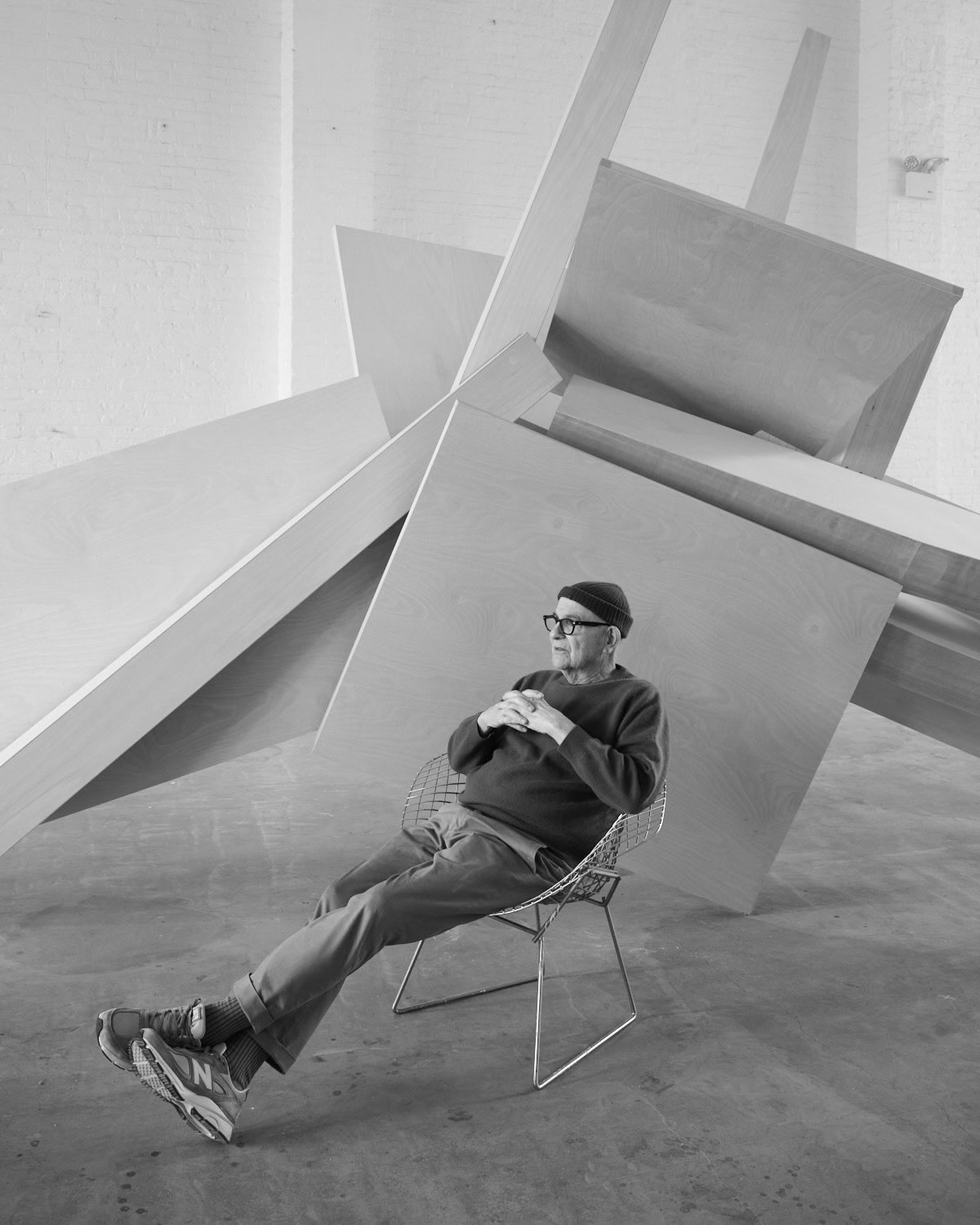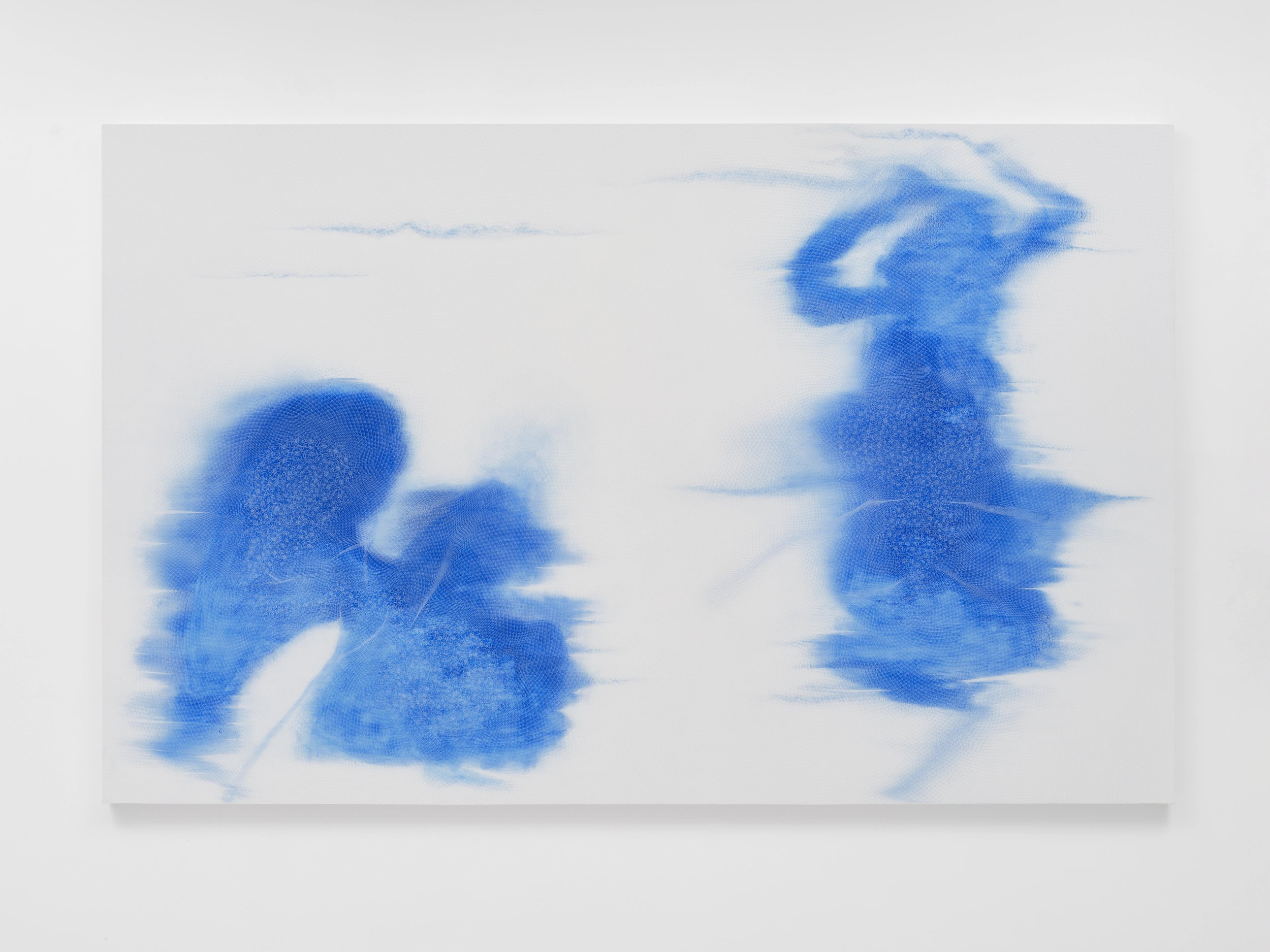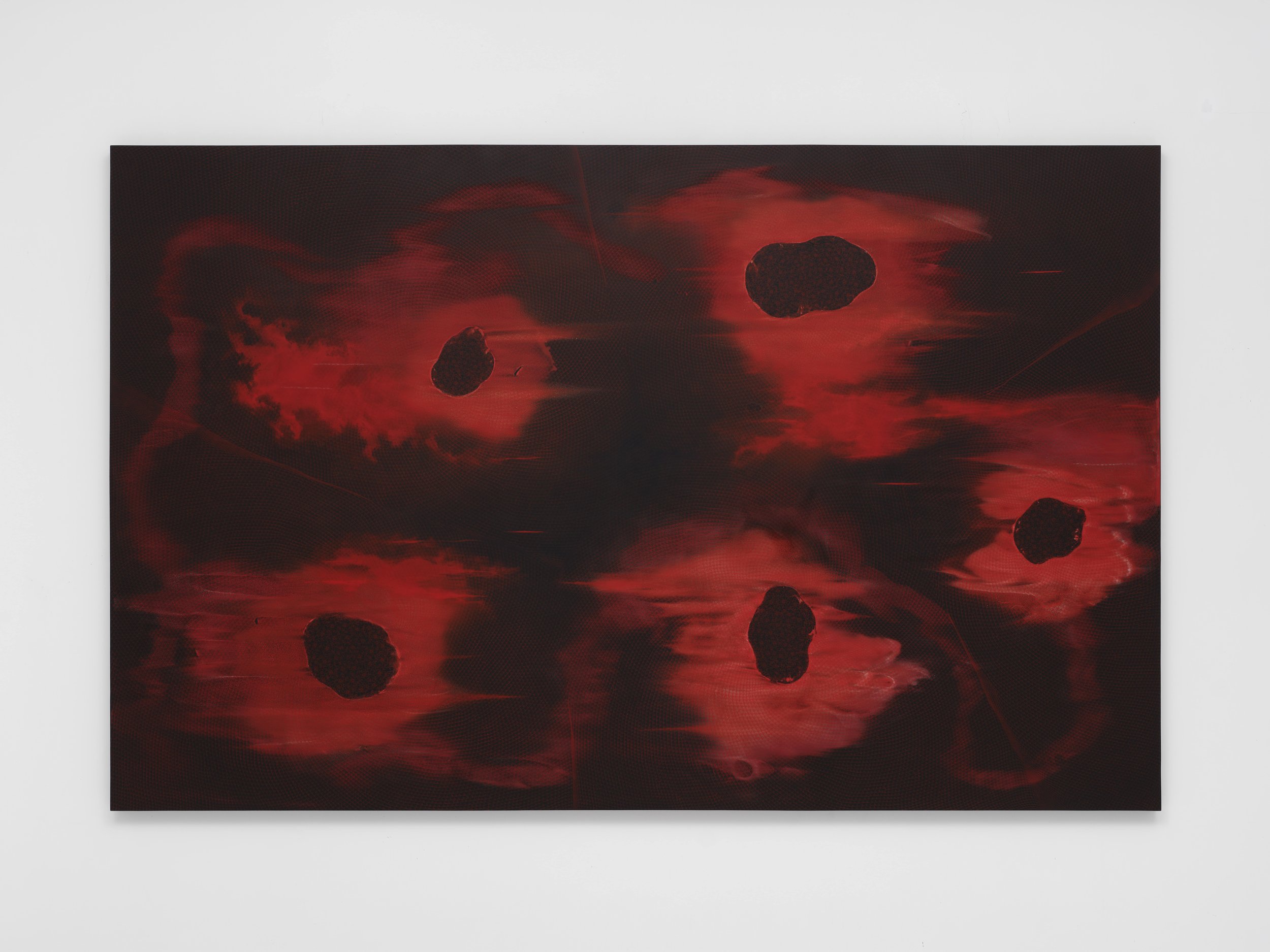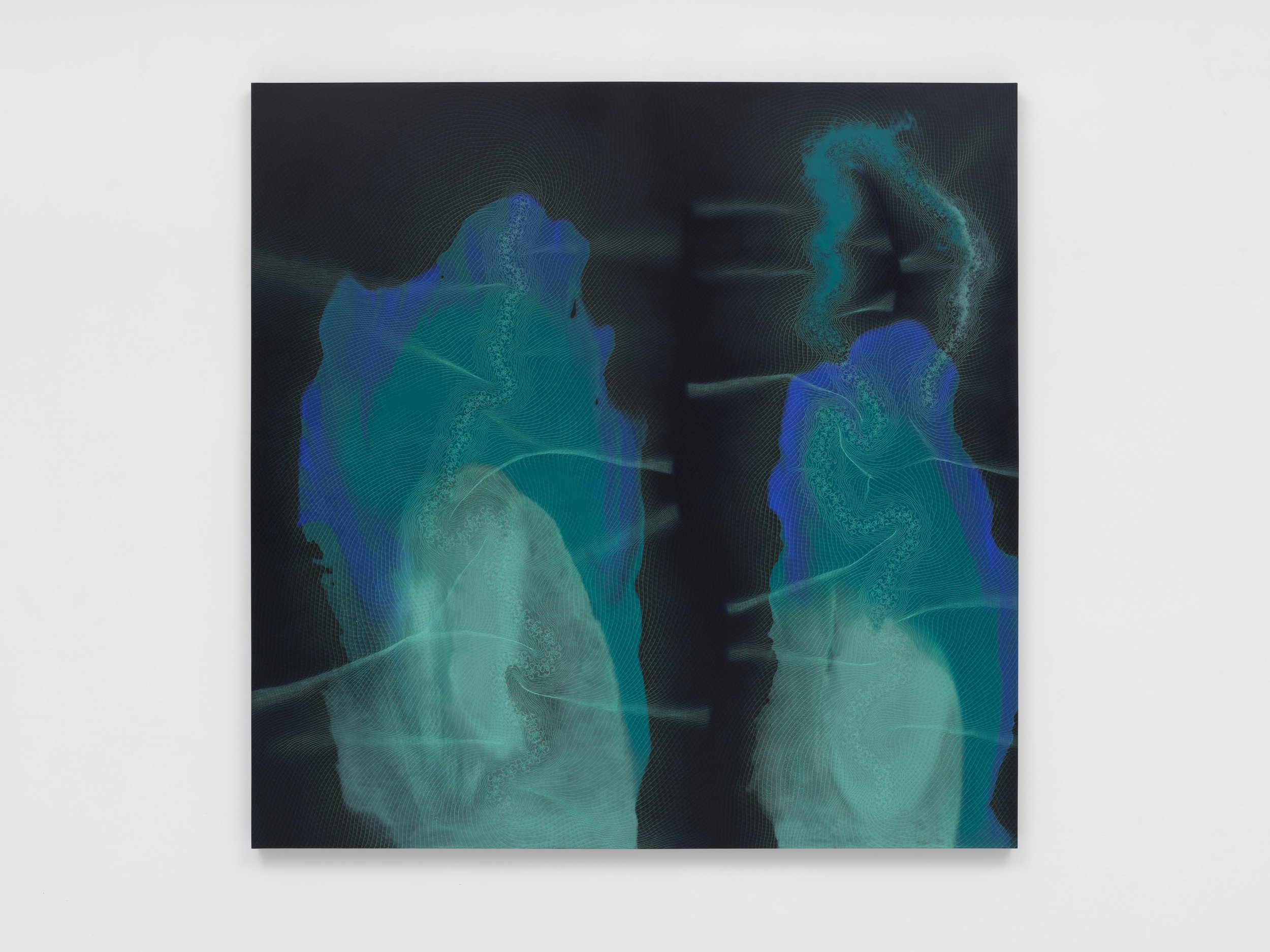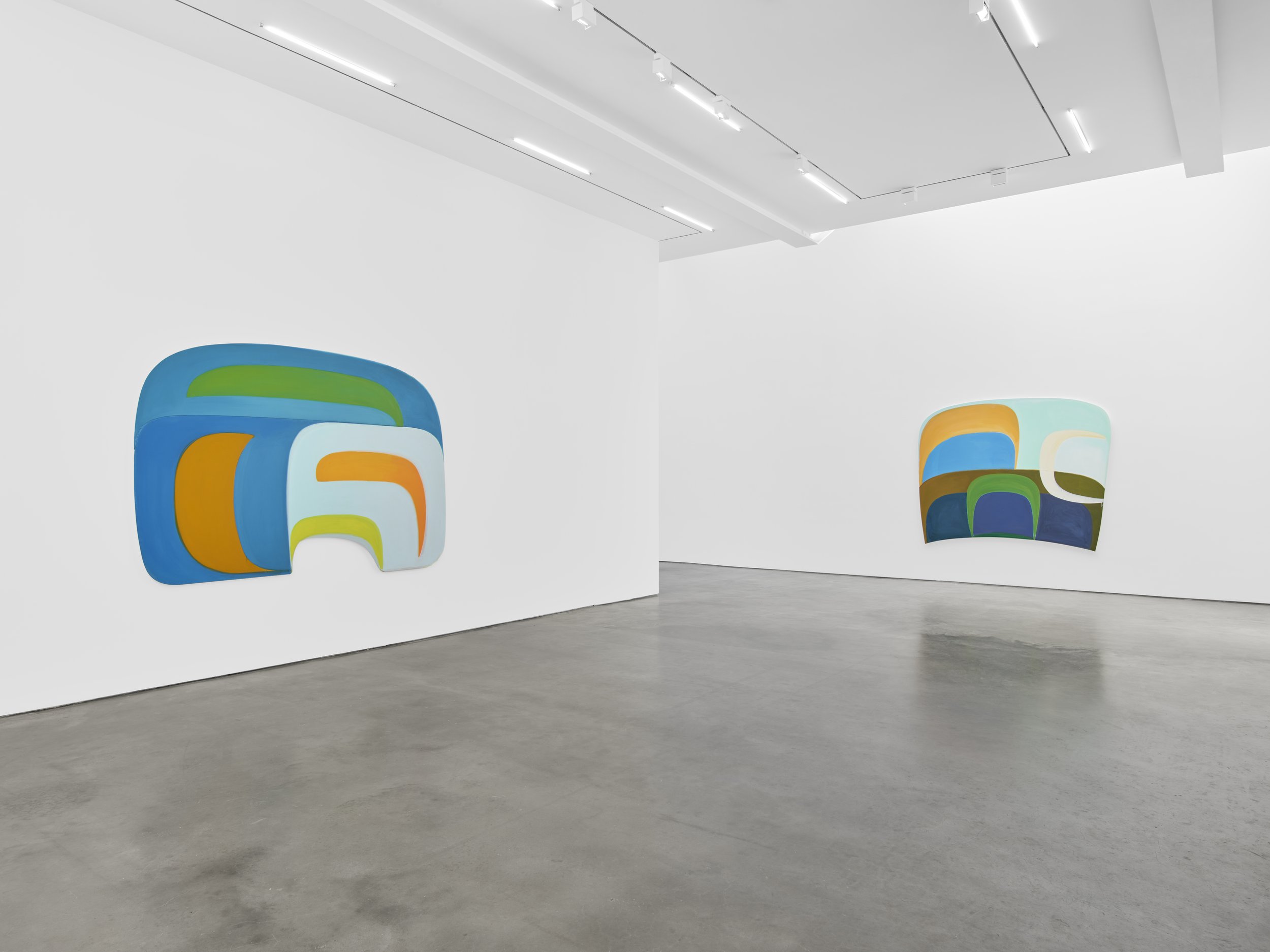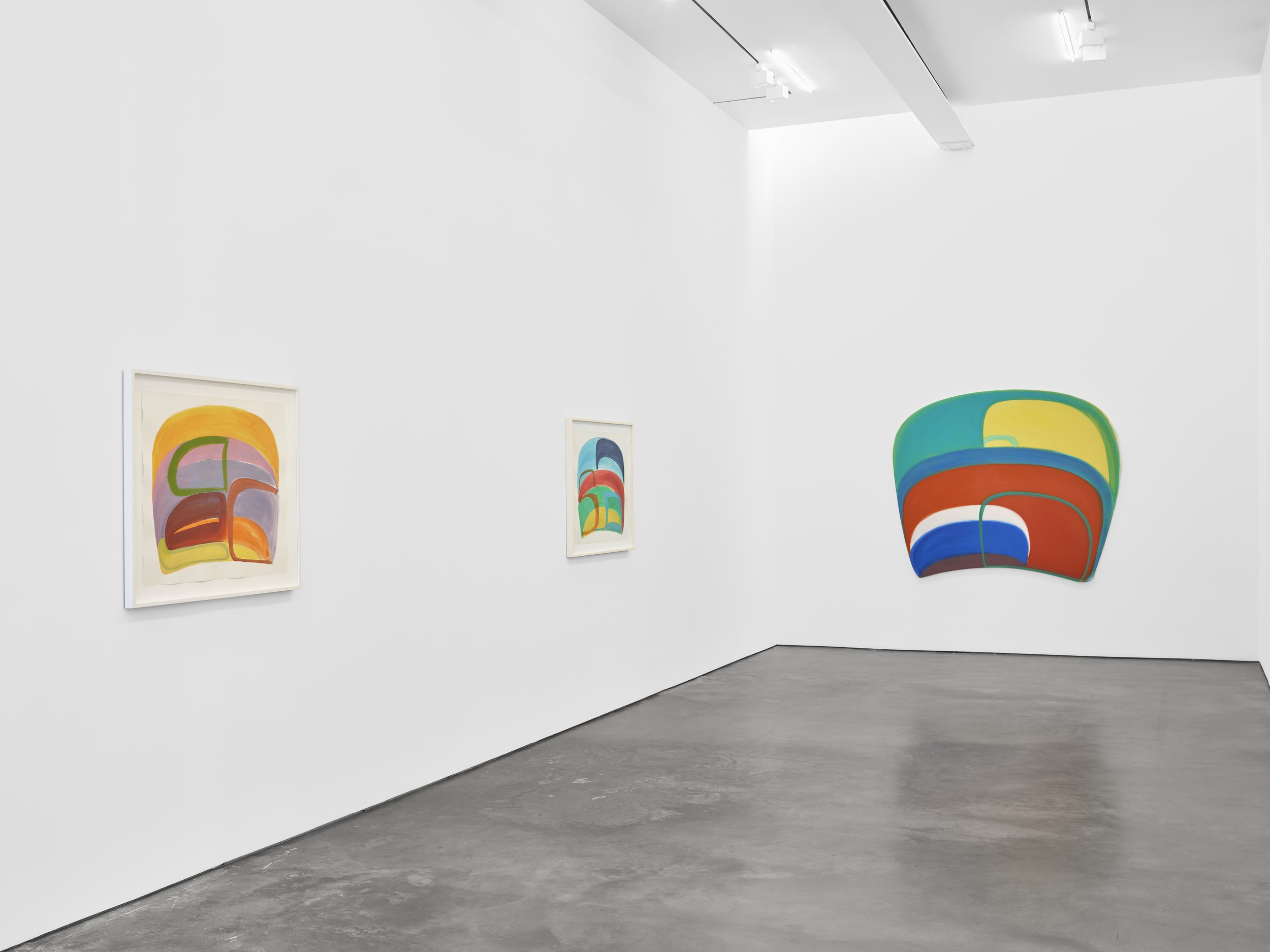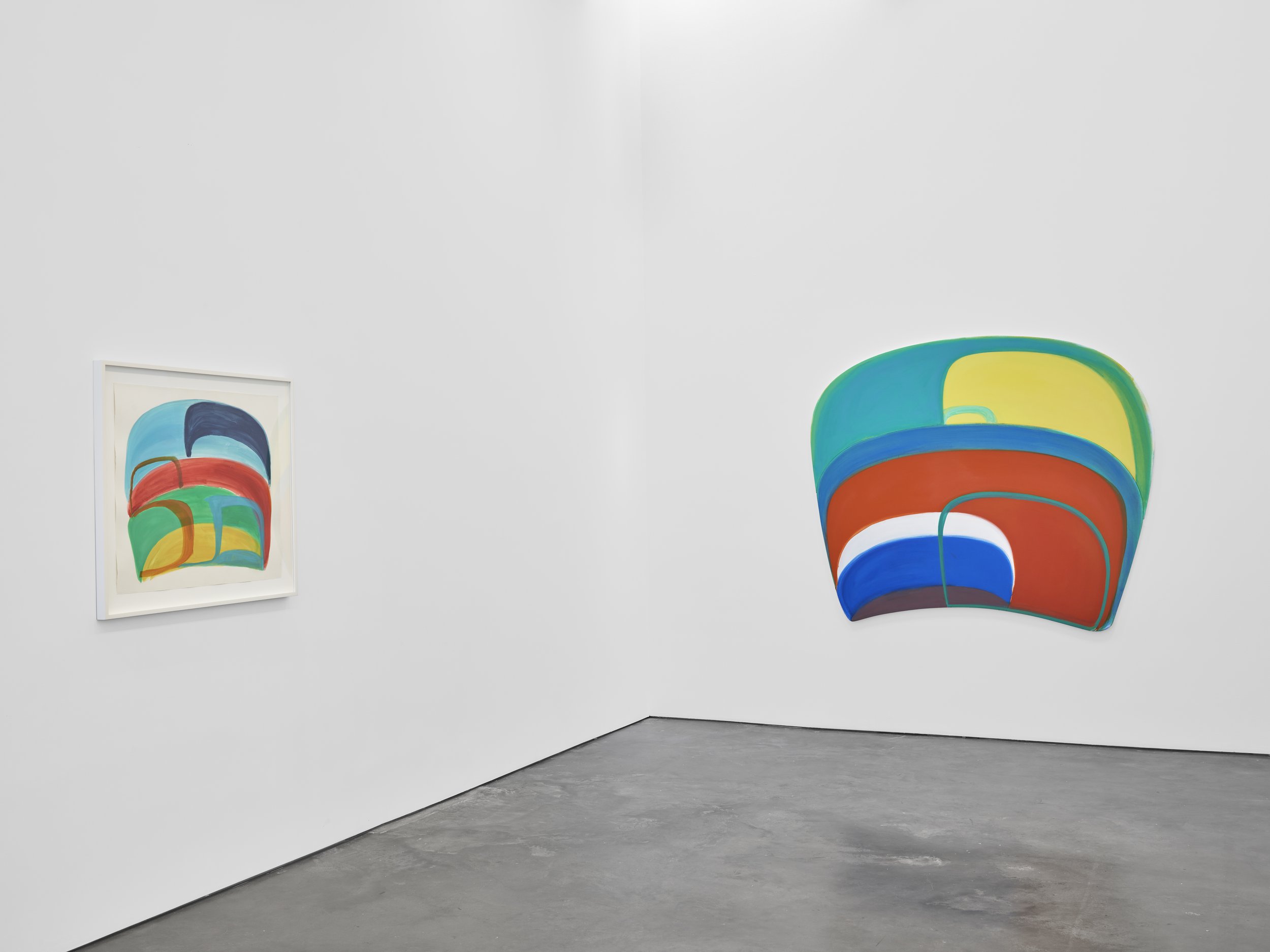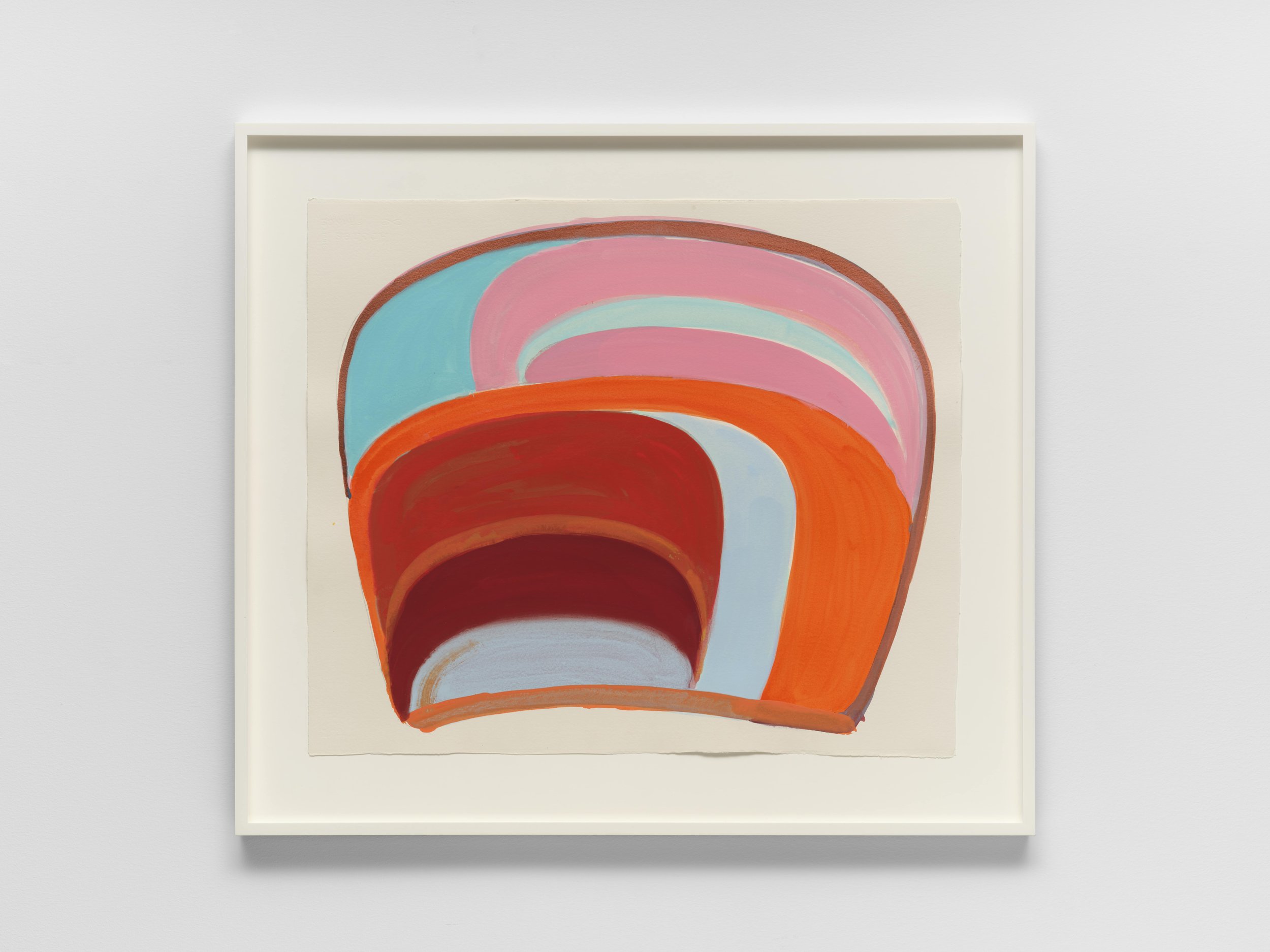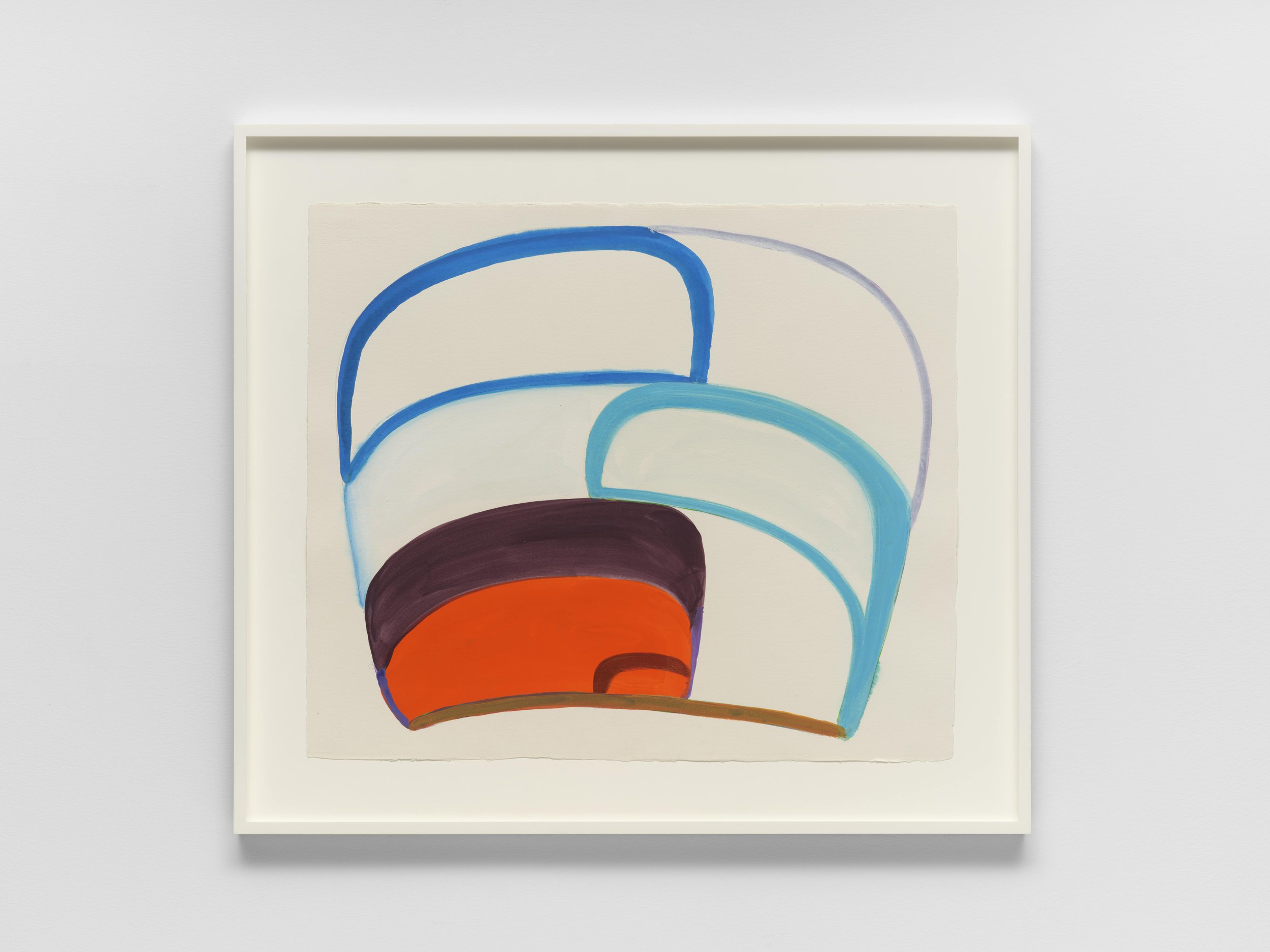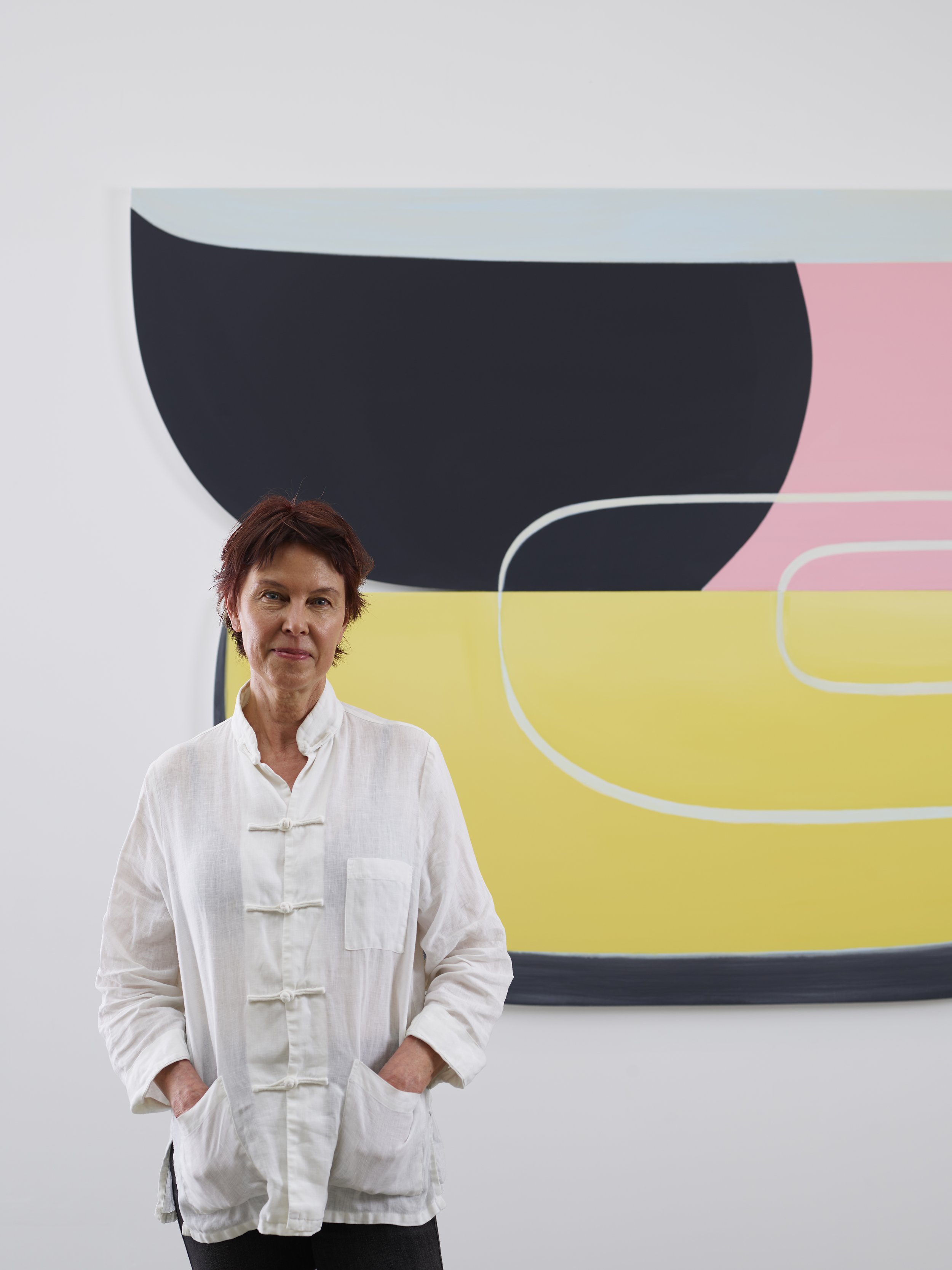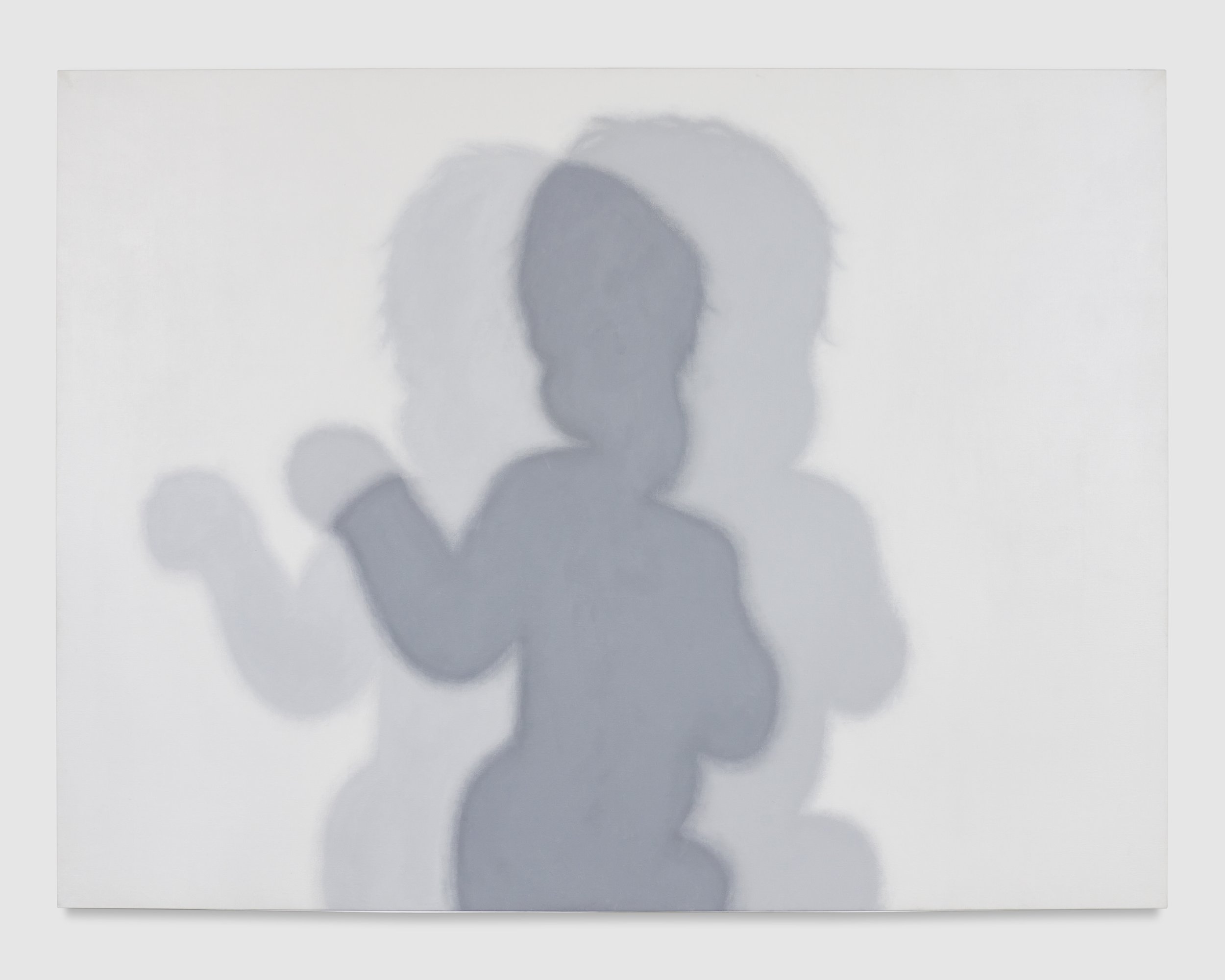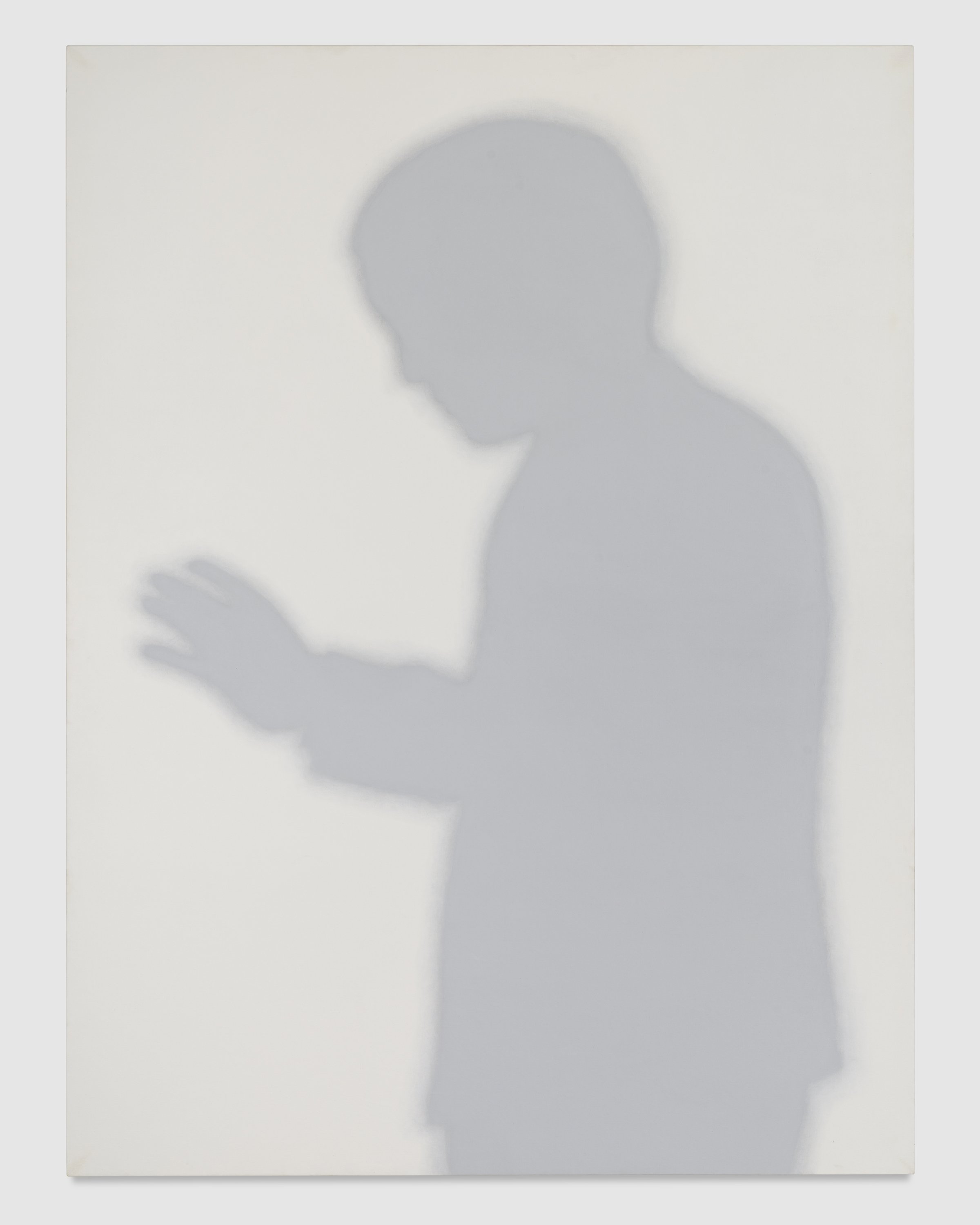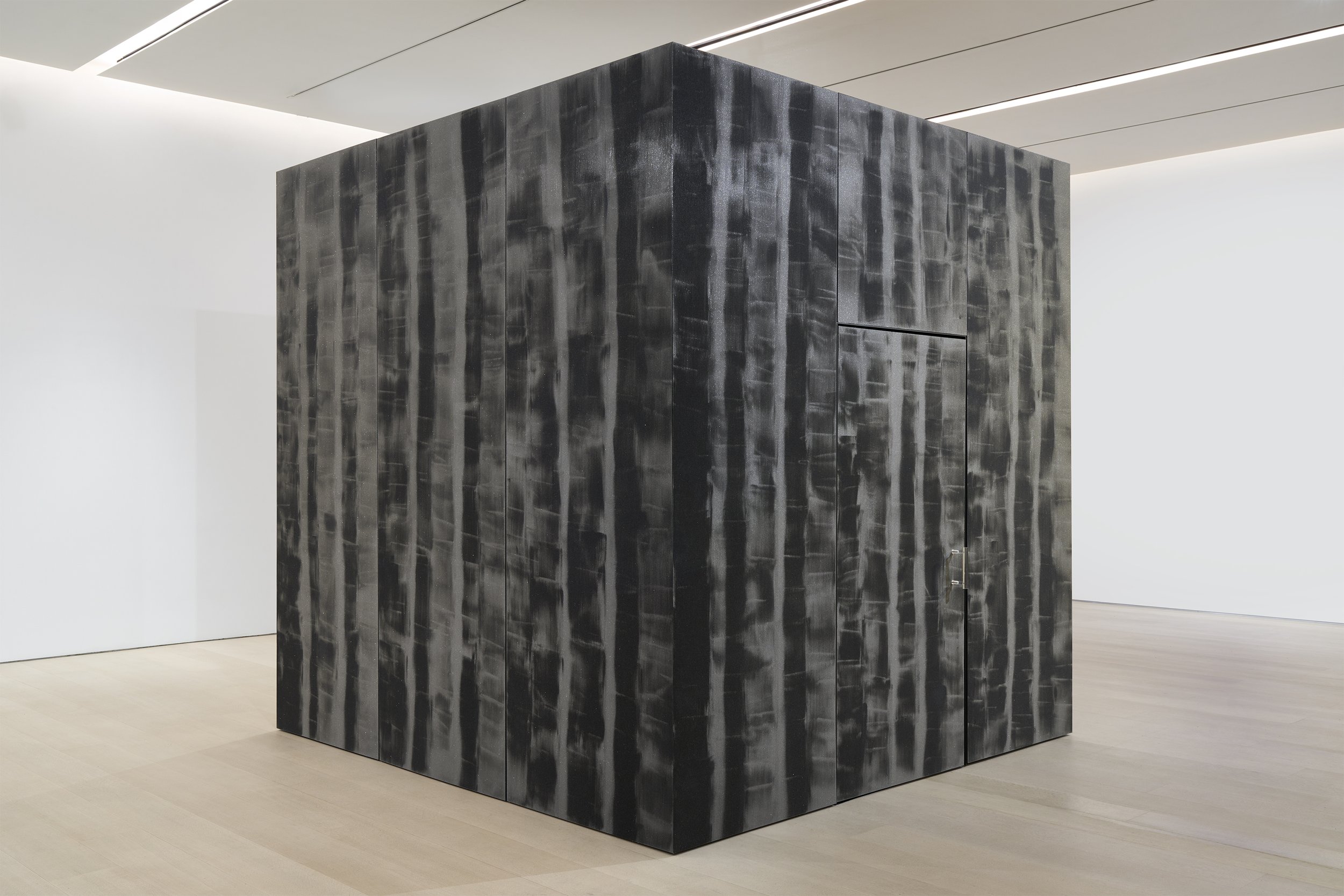Pérez Art Museum Miami Presents Xican-A.O.X. Body
Xican-a.o.x. Body. Installation view: Pérez Art Museum Miami, 2024. Photo: Lazaro Llanes
Survey Of Contemporary American Latino Art Features Over 150 Works by 7 Multigenerational Artists and Collectives
(MIAMI, FL – TK, 2024) — Pérez Art Museum Miami (PAMM) is pleased to present Xican-A.O.X. Body. The exhibition opened on June 13, 2024. Organized by the American Federation of Art and co-curated by Cecilia Fajardo-Hill with Marissa Del T oro and PAMM Chief Curator Gilbert Vicario, the exhibition includes over 150 works by 70 artists and collectives. Ranging in diverse media from painting, photography, works on paper, sculpture, and moving images, Xican-A.O.X. Body foregrounds the body as a site to explore political agency and imagination, artistic investigation, decolonization, and alternative forms of affectivity and community as linked to Chicano experiences. The exhibition serves as the first group exhibition to celebrate Xicanx artists working conceptually, experimentally, and or with a performative focus. The term, Xicanx, is inclusive of the Indigenous and colonized people of Mexican descent as well as the people who may originate from Central and South American nations.
Xican-a.o.x. Body. Installation view: Pérez Art Museum Miami, 2024. Photo: Lazaro Llanes
“Xican-A.O.X. Body contextualizes and celebrates an intergenerational community of artists whose lived experiences go as far back as the Civil Rights Movement. While Xicanx artists have long suffered from underrepresentation within the cultural and social fabric of contemporary American art, exhibitions such as Xican-A.O.X. Body fundamentally contribute to larger national conversations about US Latino culture at this moment.”
Xican-a.o.x. Body. Installation view: Pérez Art Museum Miami, 2024. Photo: Lazaro Llanes
Xican-A.O.X. Body features multidisciplinary works from the late 1960s to the present, convoluting the common understanding of Xicanx art and culture and highlighting the complex nature of varying visual practices. The exhibition emerges at the intersection of experimental artistic practices and the notion of the Brown body as articulated in the context of Xicanisma: —a vital and inclusive concept developed in the 1990s that calls for self-determination of ethnic, political, and cultural identities through greater acknowledgment of Indigenous roots, intersectional identities, and feminism. While the multiplicity inherent in this term is central to the project’s organizing concept, the exhibition proudly includes the work of artists who identify in myriad ways—including Mexican American, Chicana/o, Xicanx, Indigenous, Latinx, Black, and Brown.
“Xican-A.O.X. Body fits with the mission and vision of PAMM as the premiere venue for presenting the work of Latin American and American Latino artists in the country. We are excited and proud to present this important show by three experts of Latin American and Latino art, including our own Chief Curator, Gilbert Vicario.”
The exhibition is organized into eight sections; Political Pop, Brown Commons, Networks, Nepantla, Radical Violence, Resilience, Disrupting Social Space, and Disidentify & Reimagine.
Xican-a.o.x. Body. Installation view: Pérez Art Museum Miami, 2024. Photo: Lazaro Llanes
At the nucleus of the exhibition is Brown Commons, which highlights artists who raise questions of belonging and feelings of invisibility; interrogating the stereotypes and role of race in relation to the Xicanx body and identity, while also highlighting the intrinsic beauty and soulful presence of Xicanx existence.
Dis-identify and Re-imagine embraces queer theorist José Esteban Muñoz’s notion of “disidentification” —a process for which those outside the racial and sexual mainstream transform majority identity frameworks for their own purposes. This section includes artists offering points of cultural contradiction by displaying Brown, queer bodies as active agents in countering essentialist narratives, and as sites of social and political residence that challenge preconceived assumptions rooted in phobic logic of race, gender, and sexuality from within and outside Latinx communities.
Xican-a.o.x. Body. Installation view: Pérez Art Museum Miami, 2024. Photo: Lazaro Llanes
Nepantla: Growth and Creativity, explores Nepantla; a concept articulated by the feminist writer Gloria Anzaldúa as the symbolic space of in-betweenness, liminality, and transformation created in response to multiple forms of oppression and exclusion. Disrupting Social Space features work inspired by the protests and marches of the Civil Rights era in the United States, and the spiritual and conceptual relationship inspired by civil unrest and its visual inscription into cultural and societal imagination by individuals fighting for justice and equality. Generating Pop / Sharing Vernacular highlights the post-war period, assemblage art, and Pop Art, with an eye towards Native American, African American, Asian American, and Latinx American artists, who were often omitted from the mainstream retellings of the history of these art forms. Nexus and Networks features a range of work that speaks on affectivity, affection, solidarity, and shared feelings of belonging within decolonized communities. In Radical Violence, artists counter the glorification and banalization of violence into a form of spectacle with an exploration of how people of color have been targeted in the United States since colonial times. The Resilience/Resistance section focuses on symbolic and often less explicit—though not less harmful than—forms of violence, such as racism, classism, marginalization, exploitation of labor, and structural inequality.



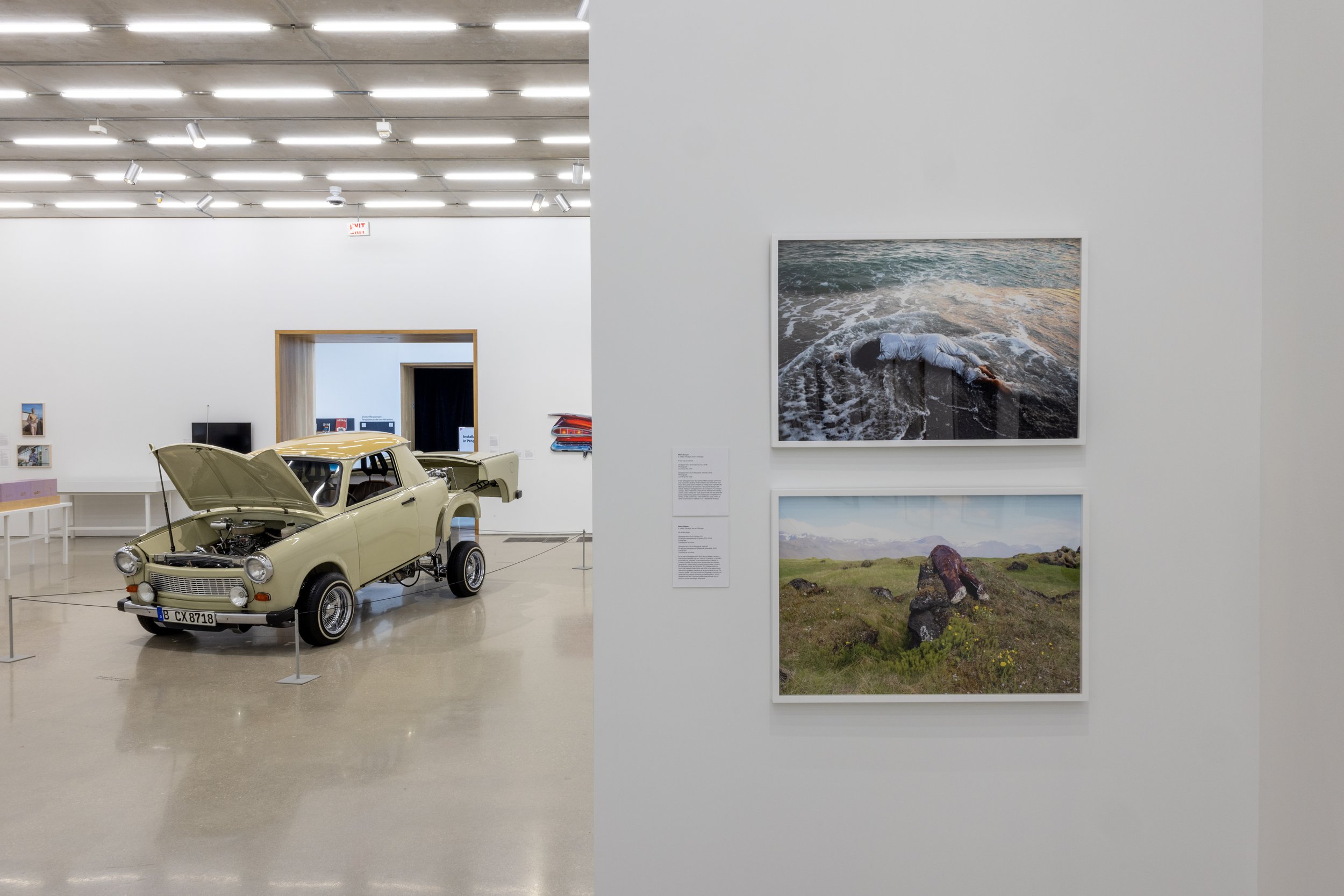





Xican-a.o.x. Body. Installation view: Pérez Art Museum Miami, 2024. Photo: Lazaro Llanes
Xican-a.o.x. Body is organized by the American Federation of Arts. Major support for the exhibition and catalog is provided by the Andy Warhol Foundation for the Visual Arts and the Terra Foundation for American Art. Generous support for the exhibition at PAMM is provided by Patricia and William Kleh.
PARTICIPATING ARTISTS
Laura Aguilar, Celia Alvarez Muñoz, Asco (Harry Gamboa Jr., Glugio Gronk Nicandro, Willie Herrón III, and Patssi Valdez), Mario Ayala, Judith F . Baca, Julia Barbosa Landois, Ariana Brown, Nao Bustamante, William Camargo, Barbara Carrasco, Charlie Cartwright (Good Time Charlie), Mel Casas, Isabel Castro, Reina D. Cervántez, Enrique Chagoya, Artemisa Clark, Liz Cohen, Adriana Corral, Camilo Cruz, Cyclona, Ms. Vaginal Davis, Natalie Diaz with Mohammed Hammad, Alex Donis, Frances Salomé España, Rafa Esparza, Justin Favela, Christina Fernandez, Diane Gamboa, Maria Gaspar, Jay Lynn Gomez, Ken Gonzales-Day, Alfonso Gonzalez Jr., Fabian Guerrero, Eser Hernandez, Sebastian Hernandez, Celia Herrera Rodríguez, Salomón Huerta, Luis Jiménez, Alma López, Yolanda López, Richard A. Lou, Jamse Luna, Narsiso Martinez, Patrick Martinez, Delilah Montoya, Malaquias Montoya, Chuço Moreno, Gabriela Muñoz, Marcos Raya, Sandy Prodiguez, Gabriela Ruiz, Sylvia Salazar Simpson, Shizu Saldamando, Teddy Sandoval, T amara Santibañez, The Q-Sides (Vero Majano, Amy Martinez, and Kari Orvik), Walter Thompson-Hernández, John Valadez, Patssi Valdez, Linda Vallejo, Ricardo Valverde, Kathy Vargas, José Villalobos
ABOUT AMERICAN FEDERATION FOR THE ARTS
The American Federation of Arts is the leader in traveling exhibitions internationally. A nonprofit organization founded in 1909, the AFA is dedicated to enriching the public’s experience and understanding of the visual arts through organizing and touring art exhibitions for presentation in museums around the world, publishing exhibition catalogs featuring important scholarly research, and developing educational programs.
ABOUT THE ANDY WARHOL FOUNDATION FOR THE VISUAL ARTS
In accordance with Andy Warhol’s will, the mission of The Andy Warhol Foundation for the Visual Arts is the advancement of the visual arts. The Foundation manages an innovative and flexible grants program while also preserving Warhol’s legacy through creative and responsible licensing policies and extensive scholarly research for ongoing catalogue raisonné projects. T o date, the Foundation has given nearly $300 million in cash grants to more than 1,000 arts organizations in 49 states and abroad and has donated 52,786 works of art to 322 institutions worldwide.
ABOUT THE TERRA FOUNDATION FOR AMERICAN ART
The Terra Foundation supports visual arts projects with a focus on art of the United States and Indigenous art of North America that question and broaden understandings of American art and transform how its stories are told. The foundation encourage projects that generate knowledge and interpretive frameworks that reflect the range and complexity of American art and its histories through the diversity of artists represented, voices included, and stories told; that center artists, scholars, and communities who have been systematically excluded from narratives, practices, and presentations of American art; and that commit to inclusive and equitable practices across project development and implementation in order to lead to structural change.
ABOUT PAMM
Pérez Art Museum Miami (PAMM), led by Director Franklin Sirmans, promotes artistic expression and the exchange of ideas, advancing public knowledge and appreciation of art, architecture, and design, and reflecting the diverse community of its pivotal geographic location at the crossroads of the Americas. The 40-year-old South Florida institution, formerly known as Miami Art Museum (MAM), opened a new building, designed by world-renowned architects Herzog & de Meuron, on December 4, 2013 in Downtown Miami’s Maurice A. Ferré Park. The facility is a state-of-the-art model for sustainable museum design and progressive programming and features 200,000 square feet of indoor and outdoor program space with flexible galleries; shaded outdoor verandas; a waterfront restaurant and bar; a museum shop; and an education center with a library, media lab, and classroom spaces.
Accredited by the American Alliance of Museums, Pérez Art Museum Miami (PAMM) is Sponsored in part by the State of Florida, Department of State, Division of Arts and Culture and the Florida Council on Arts and Culture. Support is provided by the Miami-Dade County Department of Cultural Affairs and the Cultural Affairs Council, the Miami Dade County Mayor and Board of County Commissioners. Additional support is provided by the City of Miami and the Miami OMNI Community Redevelopment Agency (OMNI CRA). Pérez Art Museum Miami is an accessible facility. All contents ©Pérez Art Museum Miami. All rights reserved.
For more information about this exhibit and other exhibits currently on view and upcoming, please visit the Pérez Art Museum website here. PAMM can also be found on Instagram, YouTube, TikTok, and Facebook.
Every Sound is a Shape of Time
Installation view: Every Sound is a Shape of Time: Selections from PAMM's Collection, Pérez Art Museum Miami, 2024–25. Photo: Oriol Tarridas
(MIAMI, FL)— Pérez Art Museum Miami (PAMM) is pleased to present Every Sound Is a Shape of Time, a multidisciplinary exhibition featuring over 20 works by 17 artists including painting, sculpture, and lightwork. Curated by PAMM Director Franklin Sirmans, the exhibition showcases works from the museum’s collection made between 1958 and 2020—half of which will be presented for the first time
Installation view: Every Sound is a Shape of Time: Selections from PAMM's Collection, Pérez Art Museum Miami, 2024–25. Photo: Oriol Tarridas
The title of the exhibition, Every Sound Is a Shape of Time, alludes to Cuban artist Glenda León’s work, inspired by “the space where sound and the visual merge. ” The exhibition speaks to the interconnectedness between universal elements through the various multimedia artworks on view, centered around the core elements of beauty and humanism, and grounded in the strength of a plurality of voices.
“With Every Sound Is a Shape of Time, we’re excited to bring together works that reflect on the common threads that emerge from our collection.”
Morris Louis. Delta Eta, 1960. Acrylic resin on canvas. 105 1/4 x 231 inches. Collection Pérez Art Museum Miami, gift of the Estate of Morris Louis. © Pérez Art Museum Miami
Core to Every Sound Is a Shape of Time is Chilean artist Alfredo Jaar’s neon lightwork, I Can't Go On. I'll Go On. (2016). Two other works by Jaar further ground the show, including Europa (1994), his monumental installation responding to the Bosnian War and the indifference in response to this crisis in the early 1990s. Also of note in the exhibition is an entire gallery space showcasing several of the first acquisitions made by the museum, which include works by leading figures in Post-Painterly Abstraction of the 1950s and 1960s such as Helen Frankenthaler and Morris Louis. This group of artists strived to create something new in a moment of tumult and friction between abstraction and representation, as well as the parallel divide between inner and outer worlds in contemporary art’s subject matter.














Installation view: Every Sound is a Shape of Time: Selections from PAMM's Collection, Pérez Art Museum Miami, 2024–25. Photo: Oriol Tarridas
Participating artists include Abraham Cruzvillegas, Alfredo Jaar, Ellsworth Kelly, Glenda León, Helen Frankenthaler, Jennie C. Jones, Jules Olitski, Julie Mehretu, Lawrence Weiner, Luis Camnitzer, Lydia Okumura, Mark Bradford, Morris Louis, Nicole Cherubini, Richard Serra, Richard Dupont, and Robert Morris. Every Sound Is a Shape of Time: Selections from PAMM's Collection is organized by PAMM Director Franklin Sirmans with PAMM Curatorial Assistant Fabiana A. Sotillo.
Jennie C. Jones. Constant Structure, 2020. Acrylic on canvas. 12 x 90 inches, overall. Collection Pérez Art Museum Miami, museum purchase with funds provided by PAMM’s Collectors Council, with additional funds provided by Alexander Guest and Camille and Patrick McDowell. ©Jennie C. Jones. Courtesy the artist and PATRON Gallery, Chicago. Photo: Pierre Le Hors
ABOUT PAMM
Pérez Art Museum Miami (PAMM), led by Director Franklin Sirmans, promotes artistic expression and the exchange of ideas, advancing public knowledge and appreciation of art, architecture, and design, and reflecting the diverse community of its pivotal geographic location at the crossroads of the Americas. The nearly 40-year-old South Florida institution, formerly known as Miami Art Museum (MAM), opened a new building, designed by world-renowned architects Herzog & de Meuron, on December 4, 2013 in Downtown Miami’s Maurice A. Ferré Park. The facility is a state-of-the-art model for sustainable museum design and progressive programming and features 200,000 square feet of indoor and outdoor program space with flexible galleries; shaded outdoor verandas; a waterfront restaurant and bar; a museum shop; and an education center with a library, media lab, and classroom spaces.
Accredited by the American Alliance of Museums, Pérez Art Museum Miami (PAMM) is Sponsored in part by the State of Florida, Department of State, Division of Arts and Culture and the Florida Council on Arts and Culture. Support is provided by the Miami-Dade County Department of Cultural Affairs and the Cultural Affairs Council, the Miami-Dade County Mayor and Board of County Commissioners. Additional support is provided by the City of Miami and the Miami OMNI Community Redevelopment Agency (OMNI CRA). Pérez Art Museum Miami is an accessible facility. All contents ©Pérez Art Museum Miami. All rights reserved.
. The exhibition opened on August 8, 2024, and will be on view through March 16, 2025.
For more information about this exhibit and other exhibits currently on view and upcoming, please visit the Pérez Art Museum website here. PAMM can also be found on Instagram, YouTube, TikTok, and Facebook.
Joel Shapiro: Out of the Blue
Joel Shapiro: Out of the Blue 510 West 25th Street, New York, NY 10016 September 13–October 26, 2024 Photography courtesy Pace Gallery
New York – Pace is pleased to present Joel Shapiro: Out of the Blue at its 508 and 510 West 25th Street galleries in New York. The artist’s first solo show with Pace in New York since 2014, this exhibition, which will be accompanied by a new catalogue from Pace Publishing with an essay by poet and scholar Vincent Katz, opened on September 13 and will run until October 26, featuring three new large-scale painted wood sculptures and a selection of studies and small bronzes that provide a vibrant glimpse into the artist’s practice.
One of America's most renowned artists, Shapiro has pushed the boundaries of sculptural form over the course of his 55-year career with a body of work distinguished by its dynamism, complexity, and formal elegance. Since the early 1970s, Shapiro has sought to transcend the constraints of Minimalism to introduce a more referential, intimate, and psychologically profound mode of art. Though he is best known for helping to reshape the language of contemporary sculpture with cast bronze forms that blur the line between abstraction and figuration, he has employed various methods and materials throughout his practice and continues to explore sculpture’s ability to alter one’s sense of space and scale with works that attest to human resilience in the face of catastrophe and collapse.
Joel Shapiro untitled, 2002 wood, wire and casein 27" × 31" × 31" (68.6 cm × 78.7 cm × 78.7 cm)
Over the past two decades, the kinetic, often cantilevered compositions that defined Shapiro’s sculpture throughout the 1980s and 1990s have been torn apart and reassembled into rapturous, chromatic combinations. Prompted in part by the events of September 11, 2001, the artist began to break apart models and figures in his studio, often recombining the wooden elements using hot glue and industrial pin guns. Sometimes reworking and suspending these constructions in space with wire, Shapiro strove to create forms free from the dictates of the tabletop and floor in a process that has evolved to this day.
In Out of the Blue, Shapiro relinquishes the suspended forms of his acclaimed 2010 Pace installation—described in The New Yorker as “like a Malevich canvas bursting to life in 3-D”—and returns with renewed vigor to vibrant, precariously joined, free-standing sculptures that, although floor-bound, retain intimations of flight, expansion, and buoyancy. Splay, a spry, brightly-painted sculpture, seems to rise and reach—or perhaps bounce back—from the floor. Another work, Wave, crashes forward in a cascade of blue, green, and black triangular, shard-like elements.
Joel Shapiro: Out of the Blue 510 West 25th Street, New York, NY 10016 September 13–October 26, 2024 Photography courtesy Pace Gallery
The centerpiece of the exhibition is a multipart sculpture, titled ARK, which careens across the gallery as it verges on taking off, its welter of brightly colored limbs and planks projecting outward as if from a maelstrom. ARK reveals a multitude of associations as one moves around and engages with its forms. Two lean, elongated volumes—one ultramarine, another pale yellow—tilt like masts or extended limbs in the air. Another blue-green element thrusts outward in conjunction with a purplish-red oblong that kisses the ground at its furthest point. From another angle, an element that suggests an elongated coffin juts forward and echoes another slightly-larger-than-human-scale form tilting upright, as it conceals yet another compressed, crimson volume below. On one side of the sculpture, a large ultramarine quadrangular plank—in conjunction with two other rectilinear planes—keels toward the viewer, obscuring the flurry of elements on the other side and creating a sense of relative calm and awe.
Complementing the larger works on view at Pace’s 510 West 25th Street gallery are small bronzes and painted wood studies in the adjacent 508 space, which offer a window into the highly intuitive and haptic mode of assemblage that constitutes the core of Shapiro’s recent practice. Although most works date from 2002 to 2022, one study—a small wood figure seemingly blown to pieces and projecting with wire from a bright green ground—dates from the early 1980s. Another—what appears to be a disjointed figure held together with thin steel rods and accentuated with acidic-orange daubs of spray paint—is from the late 1990s. Both studies anticipate the artist’s post-9/11 investigations of fracture, dislocation, and precarious connection, imbuing the array of bronzes and studies in the 508 West 25th Street gallery with a sense of vitality, tenderness, and freighted joy.
Portrait of Joel Shapiro, 2024 Photo Credit : Kyle Knodell
Joel Shapiro untitled, 1998 wood, steel rod, spray paint and hot glue 20-1/4" × 14" × 13-3/8" (51.4 cm × 35.6 cm × 34 cm)
Since his participation in the landmark Anti-Illusion: Procedures/Materials exhibition at the Whitney Museum of American Art in New York in 1969, Joel Shapiro (b.1941) has been the subject of numerous solo and retrospective exhibitions worldwide, at institutions including the Whitechapel Gallery, London (1980); the Whitney Museum of American Art, New York (1982); the Stedelijk Museum, Amsterdam (1985); the Louisiana Museum for Moderne Kunst, Humlebæk, Denmark and IVAM Centre Julio González, Valencia, Spain (1990–91); the Walker Art Center, Minneapolis and the Nelson-Atkins Museum of Art, Kansas City (1995–96); the Haus der Kunst, Munich (1997–98); the Yorkshire Sculpture Park, United Kingdom (1999–2000); the Iris and B. Gerald Cantor Roof Garden at The Metropolitan Museum of Art, New York (2001); the Musée d’Orsay, Paris (2005); the Museum Ludwig, Cologne (2011); the Nasher Sculpture Center, Dallas (2016); the Kunstmuseum Winterthur, Switzerland (2017); the Yale University Art Gallery (2018); and the Madison Museum of Contemporary Art, Wisconsin (2018).
Shapiro’s work can be found in numerous public collections in the United States and abroad, including The Museum of Modern Art, Whitney Museum of American Art, and The Metropolitan Museum of Art in New York; the Museum of Fine Arts, Boston; the Hirshhorn Museum and Sculpture Garden and the National Gallery of Art in Washington, D.C.; the Philadelphia Museum of Art; The Art Institute of Chicago; The Menil Collection and the Museum of Fine Arts, Houston; the Nasher Sculpture Center, Dallas; the Los Angeles County Museum of Art, the J. Paul Getty Museum, and the Museum of Contemporary Art in Los Angeles; Tate, London; IVAM Centre Julio González, Valencia; the Serralves Foundation Museum of Contemporary Art, Portugal; the Stedelijk Museum, Amsterdam; Moderna Museet, Stockholm; the Musée National d’Art Moderne, Centre Georges Pompidou, Paris; the Leeum-Hoam Art Museum, Seoul, South Korea; and the Hakone Open-Air Museum, Kanagawa, Japan.
Joel Shapiro untitled (structural study for 20 Elements), 2004-05 wood and casein 16-1/4" × 17-3/4" × 11-1/2" (41.3 cm × 45.1 cm × 29.2 cm)
In 1993, Shapiro installed Loss and Regeneration at the United States Holocaust Memorial Museum in Washington, D.C. Other prominent commissions and publicly sited works include Conjunction for the United States Embassy in Ottawa, Canada, on behalf of the Foundation for Art and Preservation in Embassies (FAPE); Verge for 23 Savile Row, London; For Jennifer, commissioned by the Denver Art Museum; Now, commissioned by FAPE and installed in 2013 at the new U.S. Consulate in Guangzhou, China; 20 Elements, which is on permanent display as part of the Nancy A. Nasher and David J. Haemisegger Collection at NorthPark Center, Dallas; and Blue, which was installed in 2019 on the grounds of The Reach at the John F. Kennedy Center for the Performing Arts in Washington, D.C. Shapiro was elected to the Swedish Royal Academy of Art in 1994 and the American Academy of Arts and Letters in 1998. The French Minister of Culture named Shapiro Chevalier in the Order of Arts and Letters in 2005.
Pace is a leading international art gallery representing some of the most influential artists and estates of the 20th and 21st centuries, founded by Arne Glimcher in 1960. Holding decades-long relationships with Alexander Calder, Jean Dubuffet, Agnes Martin, Louise Nevelson, and Mark Rothko, Pace has a unique history that can be traced to its early support of artists central to the Abstract Expressionist and Light and Space movements. Now in its seventh decade, the gallery continues to nurture its longstanding relationships with its legacy artists and estates while also making an investment in the careers of contemporary artists, including Torkwase Dyson, Loie Hollowell, Robert Nava, Adam Pendleton, and Marina Perez Simão.
Under the current leadership of CEO Marc Glimcher and President Samanthe Rubell, Pace has established itself as a collaborative force in the art world, partnering with other galleries and nonprofit organizations around the world in recent years. The gallery advances its mission to support its artists and share their visionary work with audiences and collectors around the world through a robust global program anchored by its exhibitions of both 20th century
and contemporary art and scholarly projects from its imprint Pace Publishing, which produces books introducing new voices to the art historical canon. This artist-first ethos also extends to public installations, philanthropic events, performances, and other interdisciplinary programming presented by Pace.
Today, Pace has eight locations worldwide, including two galleries in New York—its eight-story headquarters at 540 West 25th Street and an adjacent 8,000-square-foot exhibition space at 510 West 25th Street. The gallery’s history in the New York art world dates to 1963, when it opened its first space in the city on East 57th Street. A champion of Light and Space artists, Pace has also been active in California for some 60 years, opening its West Coast flagship in Los Angeles in 2022. The gallery maintains European footholds in London and Geneva as well as Berlin, where it established an office in 2023. Pace was one of the first international galleries to have a major presence in Asia, where it has been active since 2008, the year it first opened in Beijing’s vibrant 798 Art District. It now operates galleries in Hong Kong and Seoul and opens its first gallery in Japan in Tokyo’s Azabudai Hills development in 2024.
The exhibition opened on September 13 and will be on view until October 26 at Pace’s New York location at 510 West 25th Street, New York, NY 10016.. Please visit the Pace Gallery's website here for more information about this exhibition and others. Pace Gallery can be found on Instagram and Artsy, too.
Shirazeh Houshiary: The Sound of One Hand
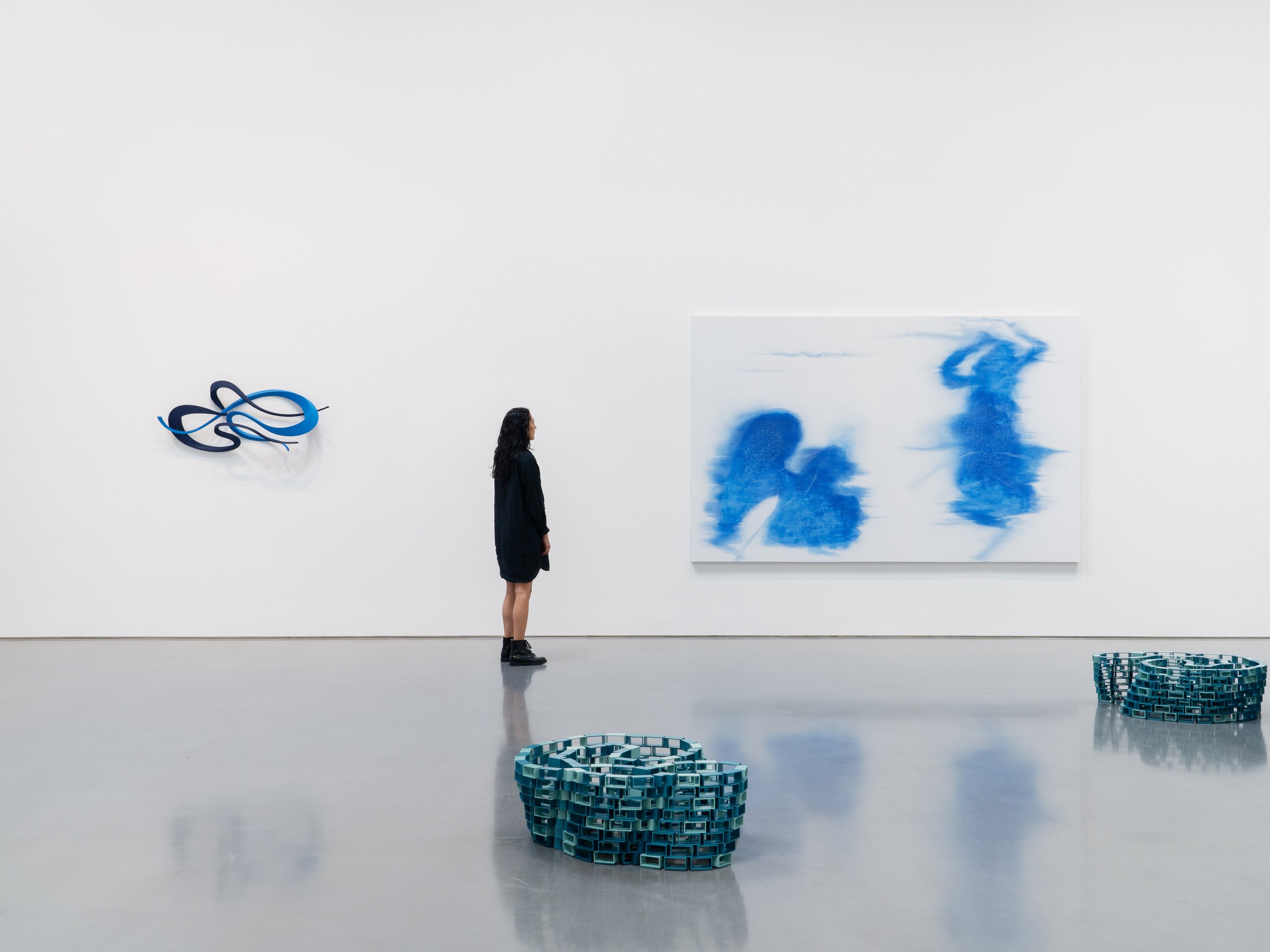
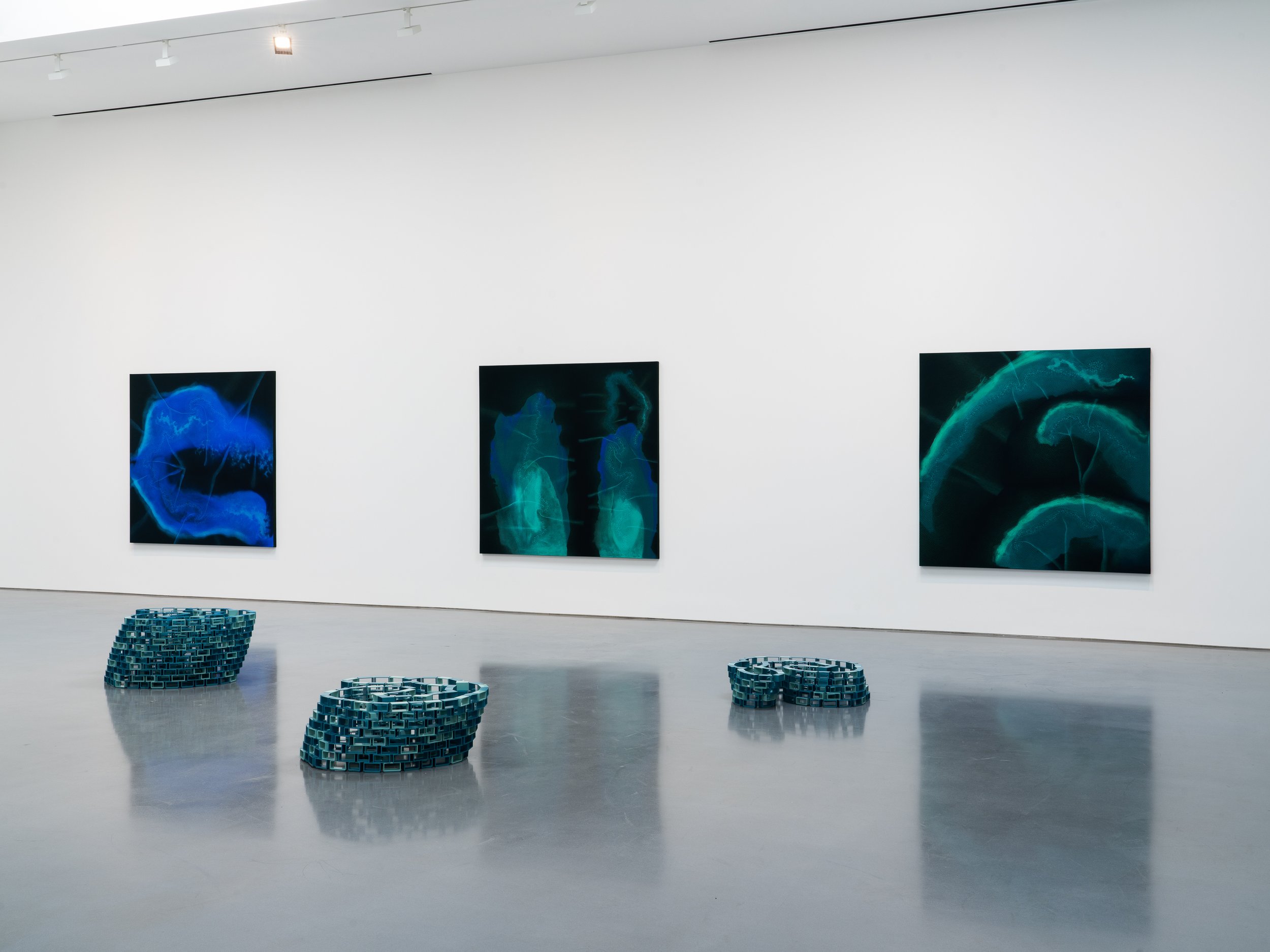
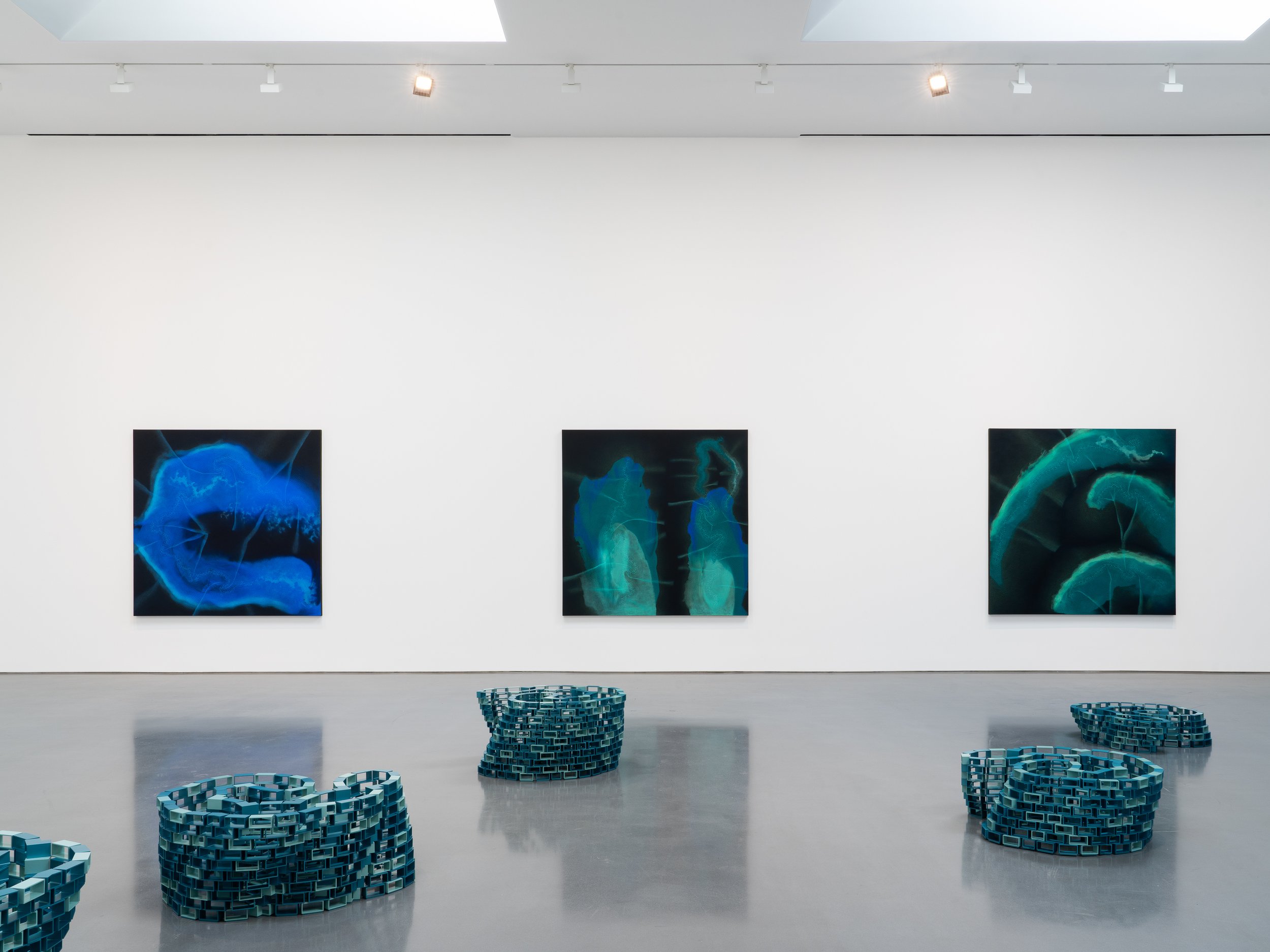
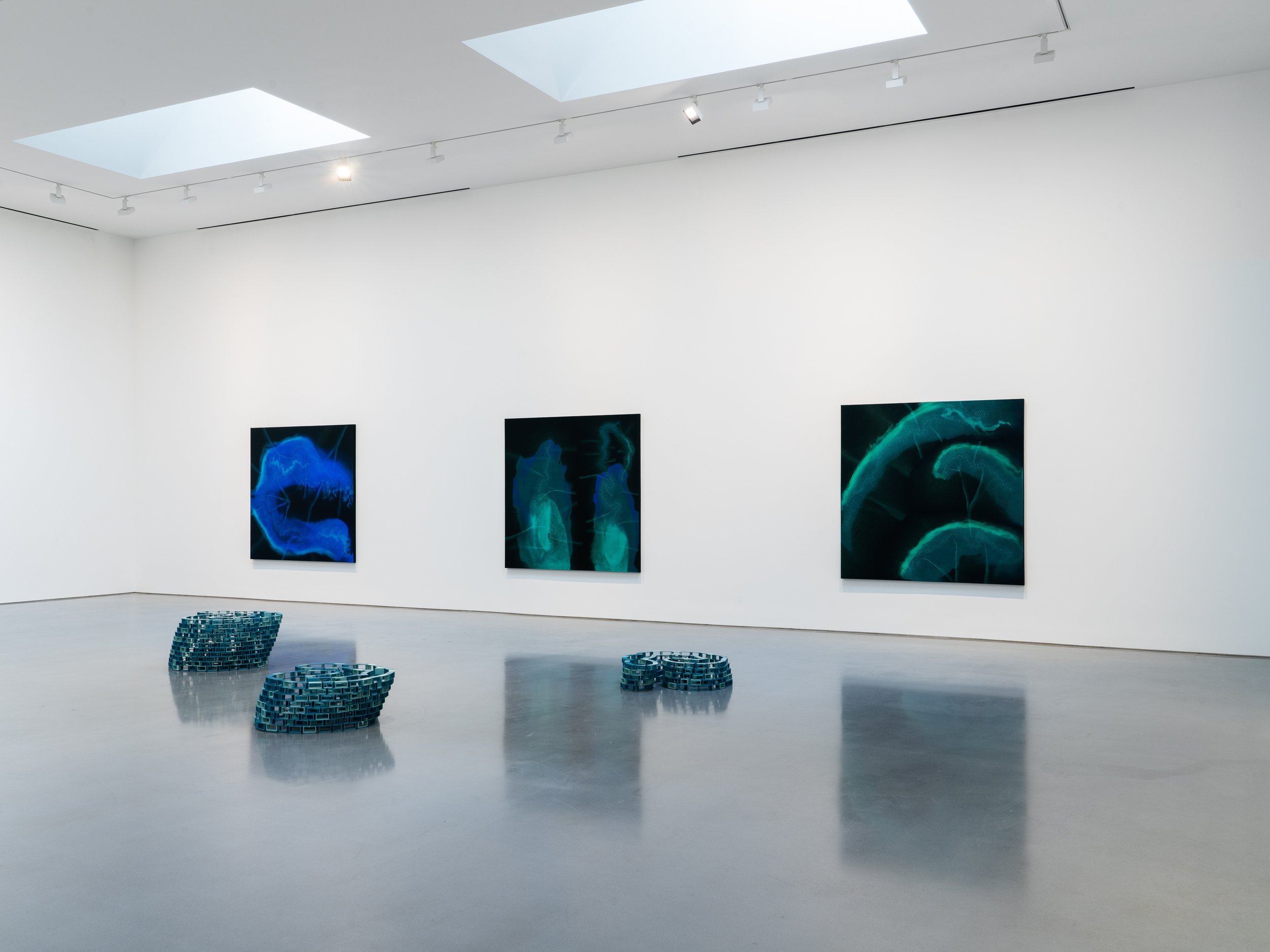
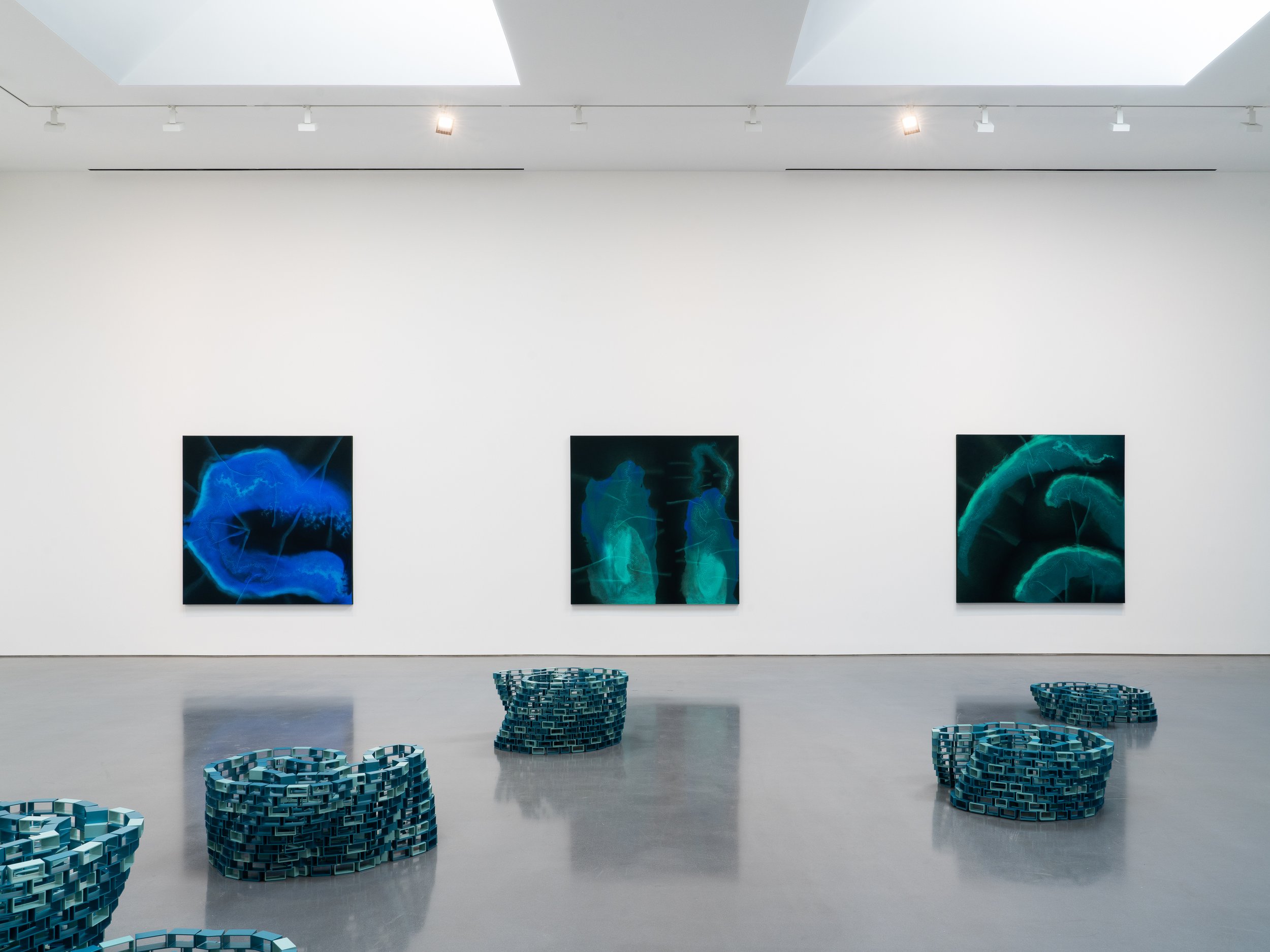
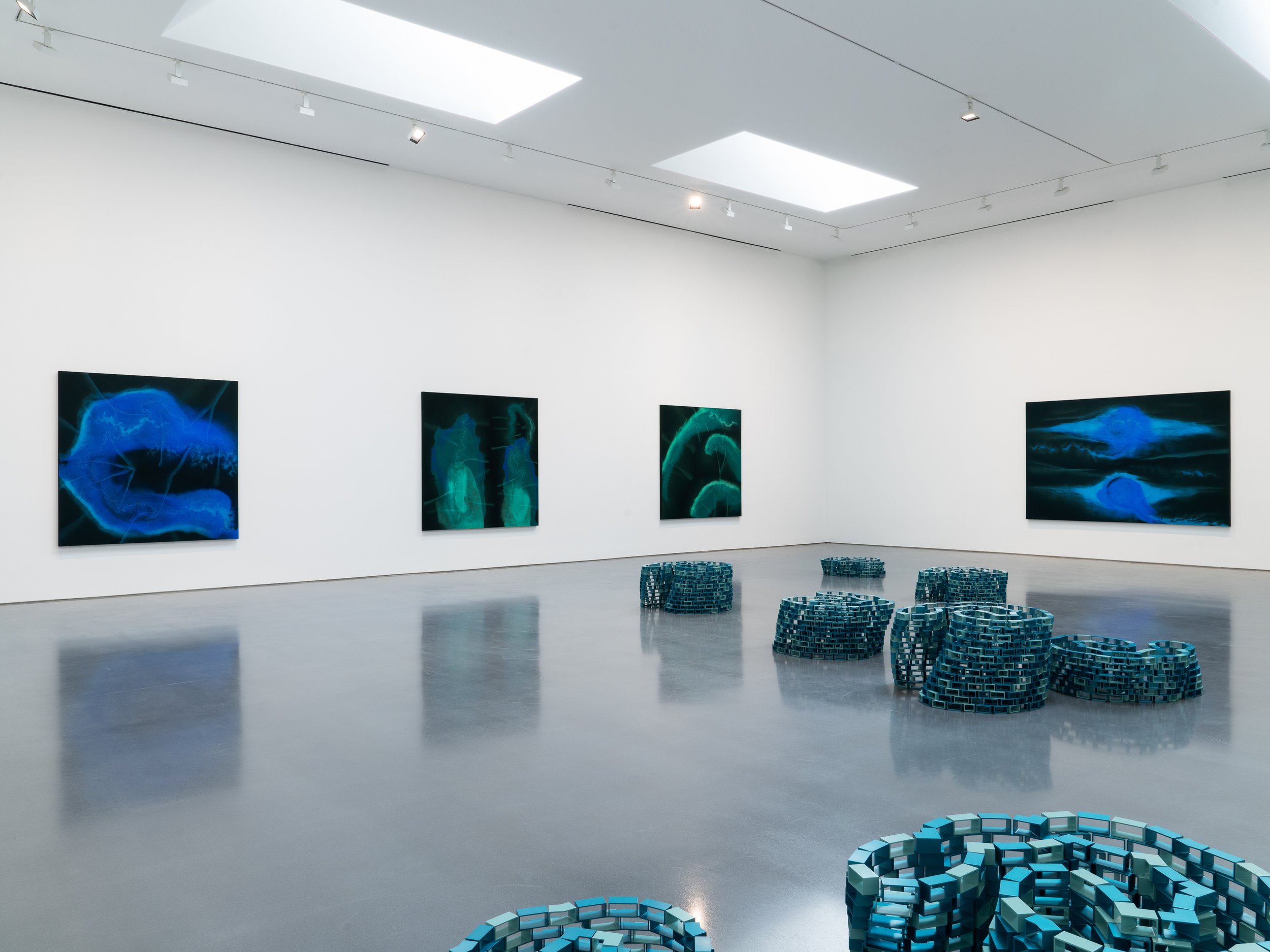
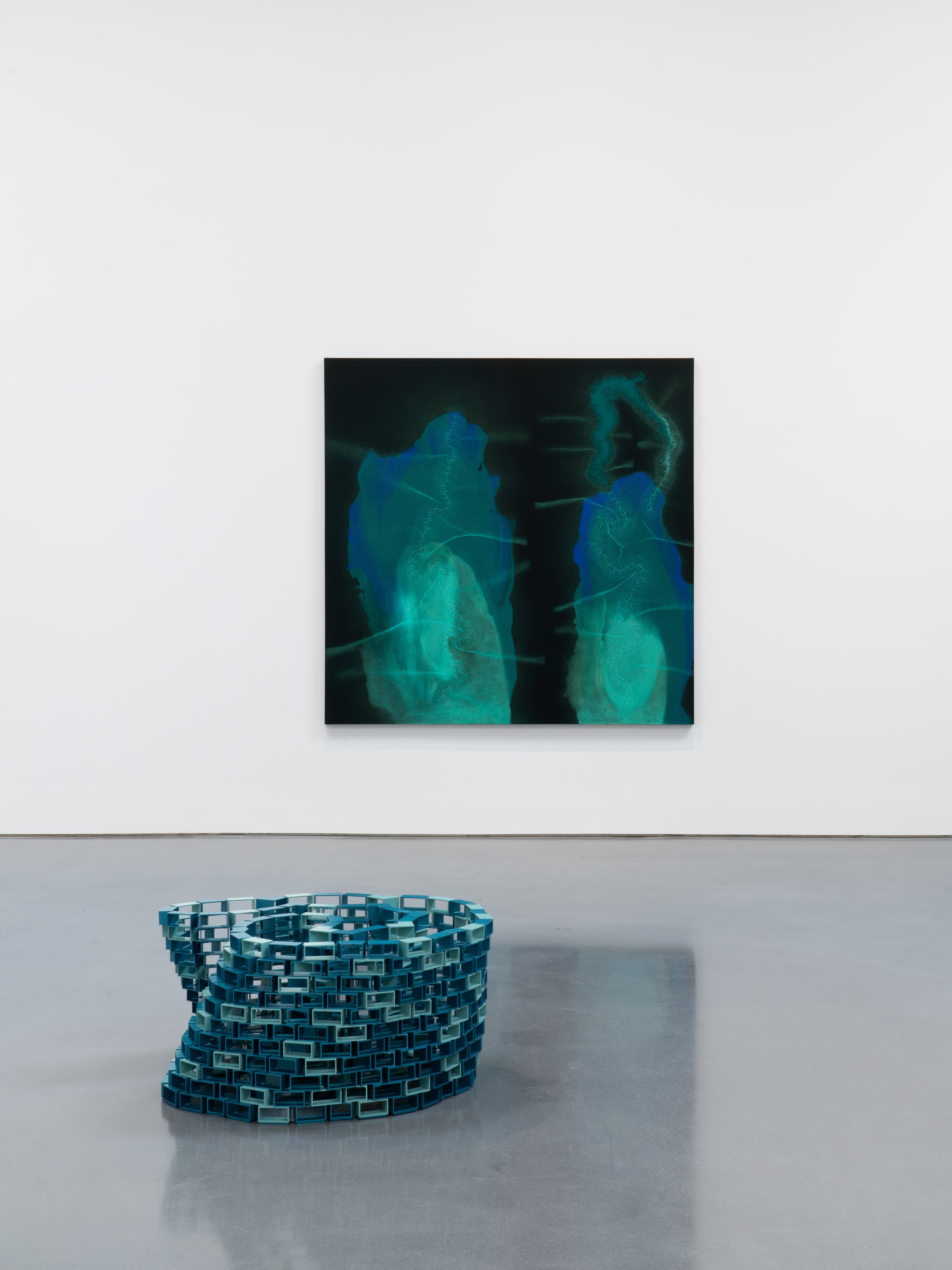
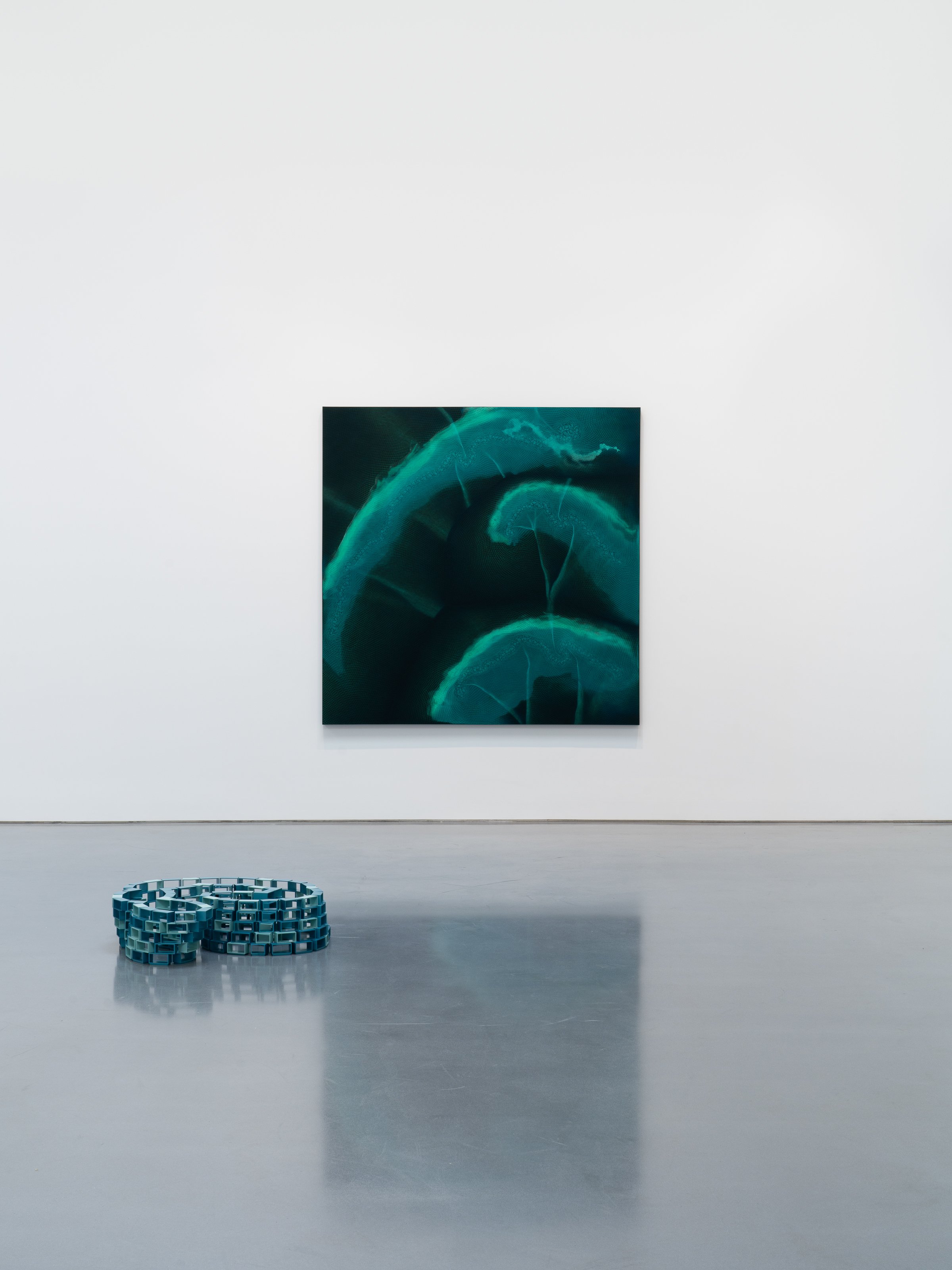

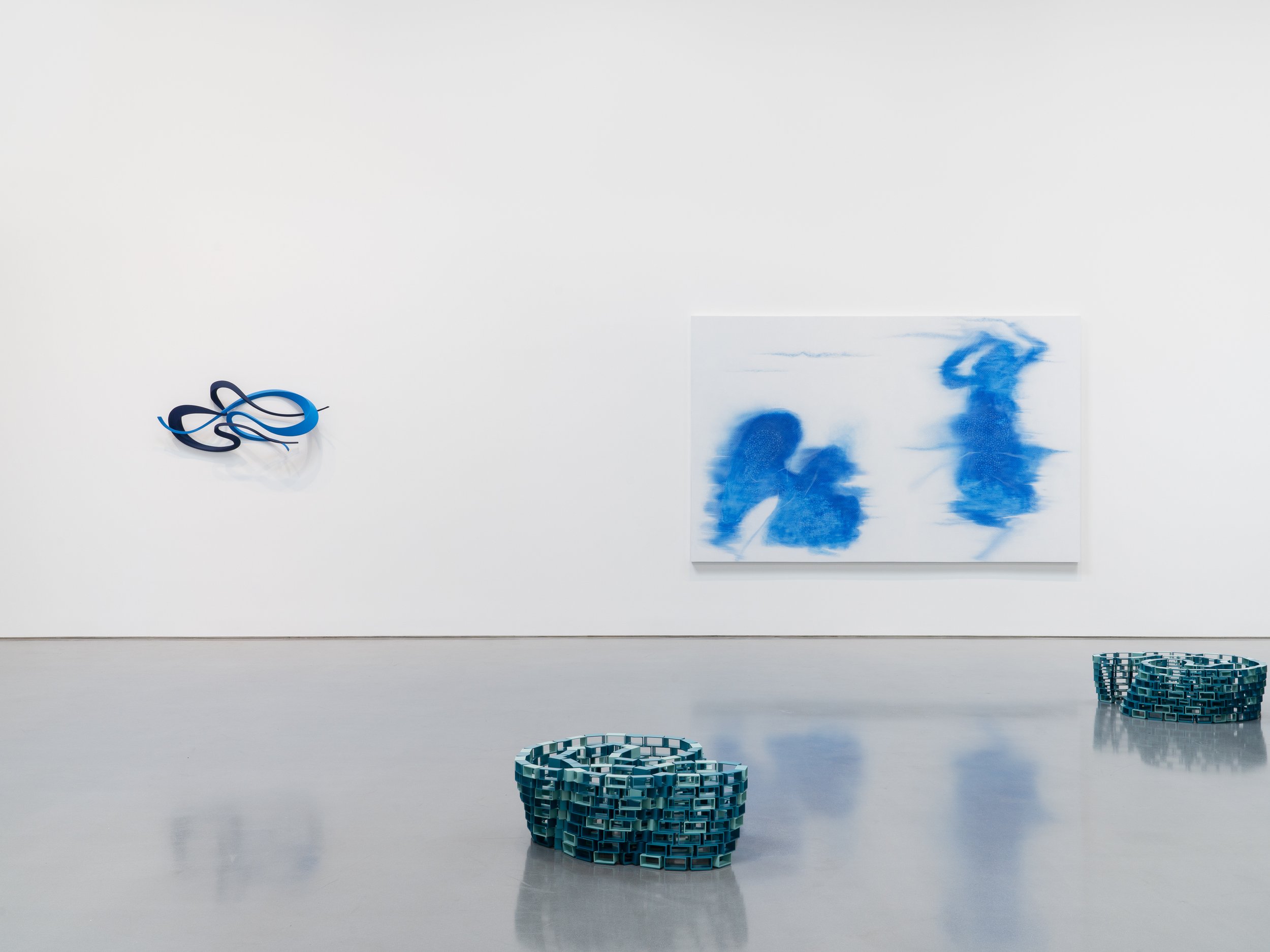
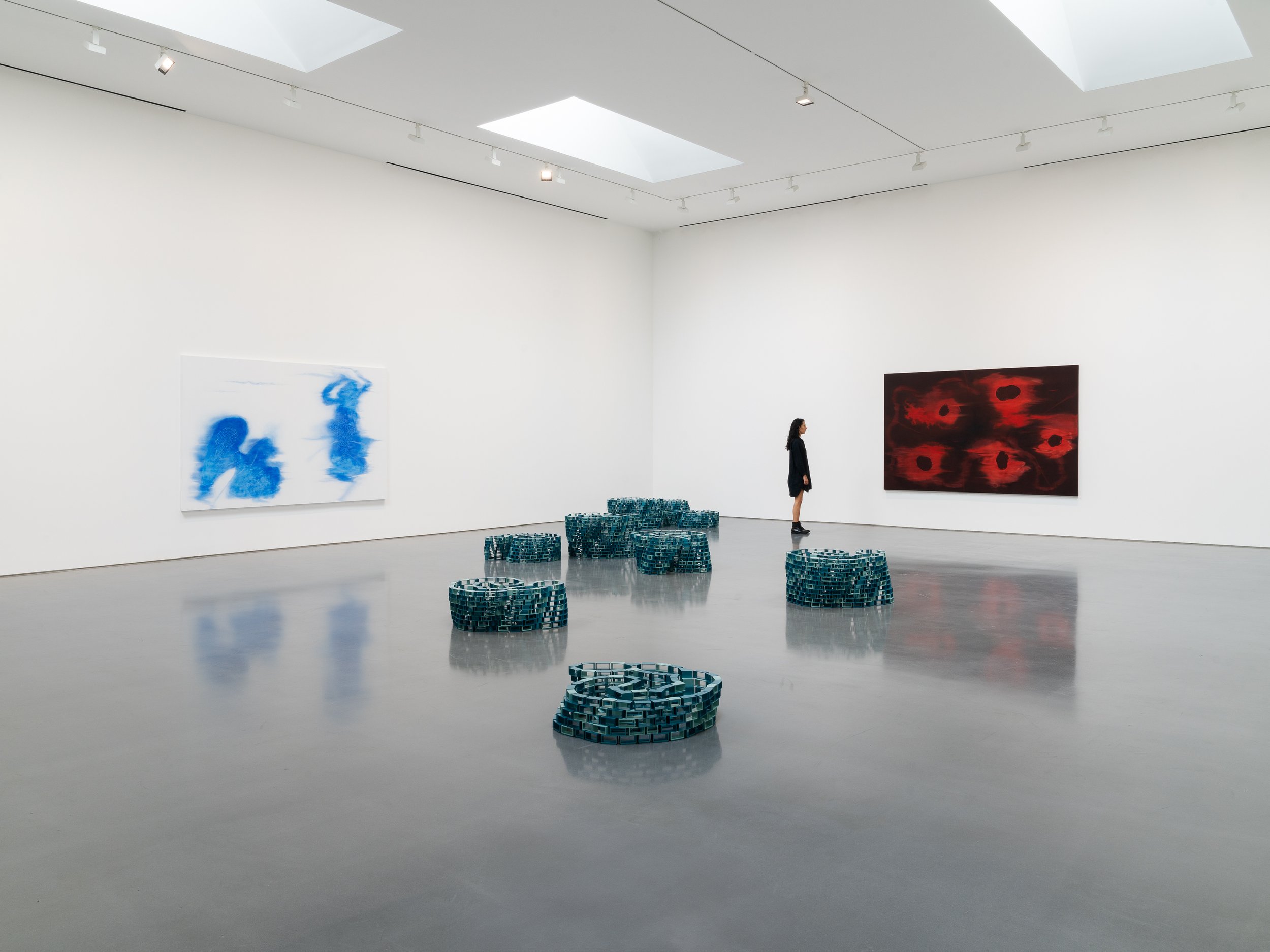
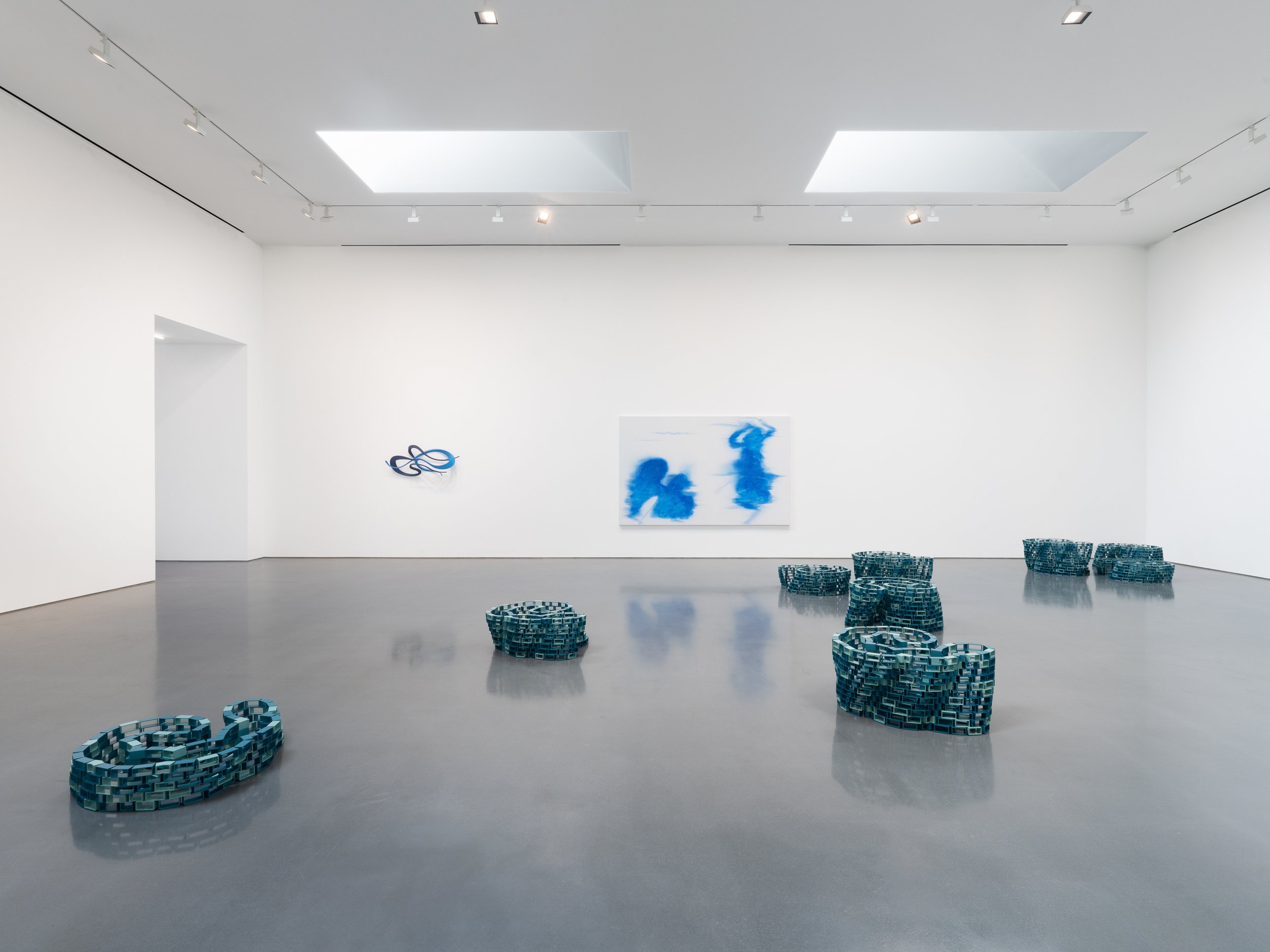

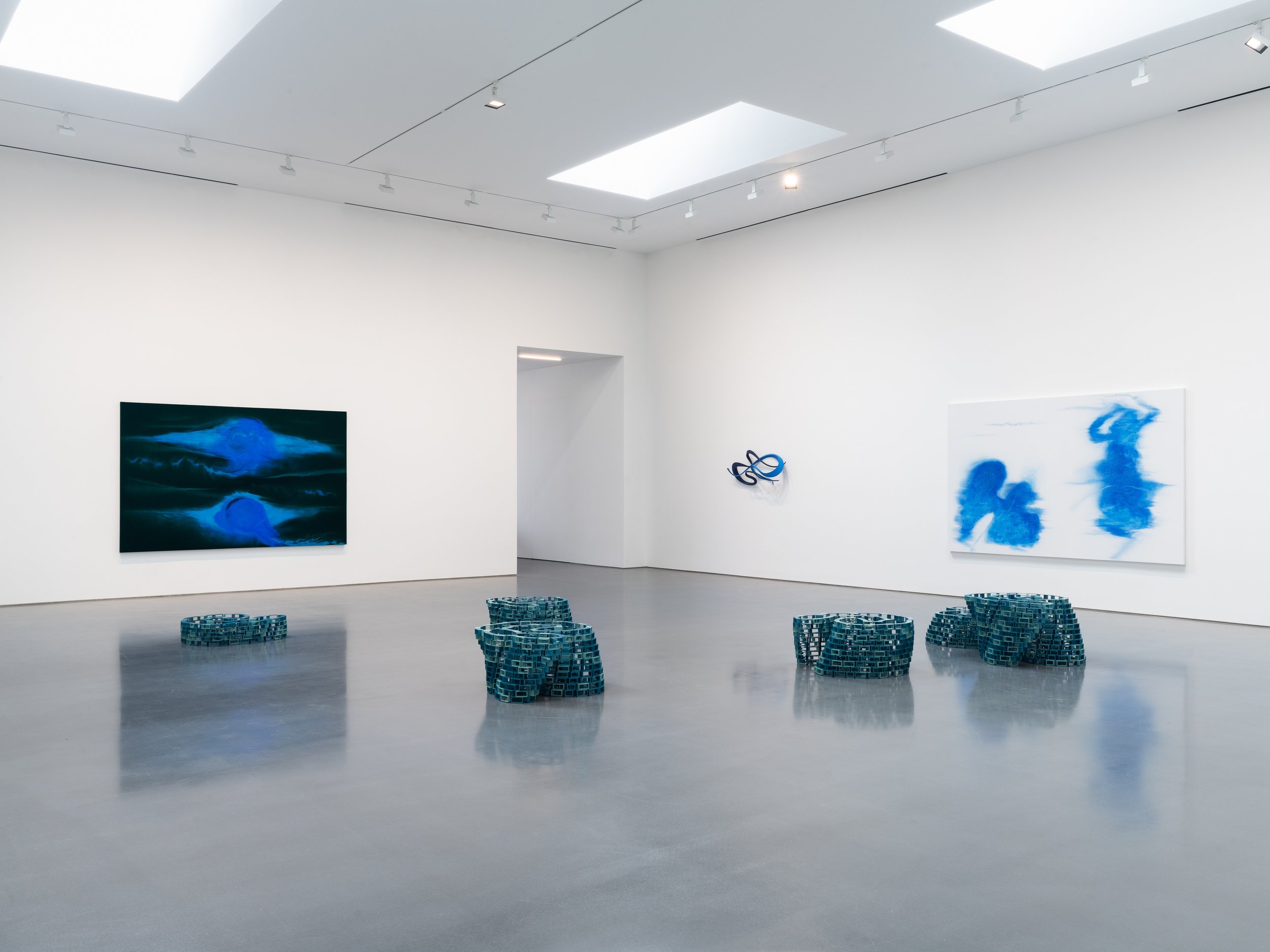
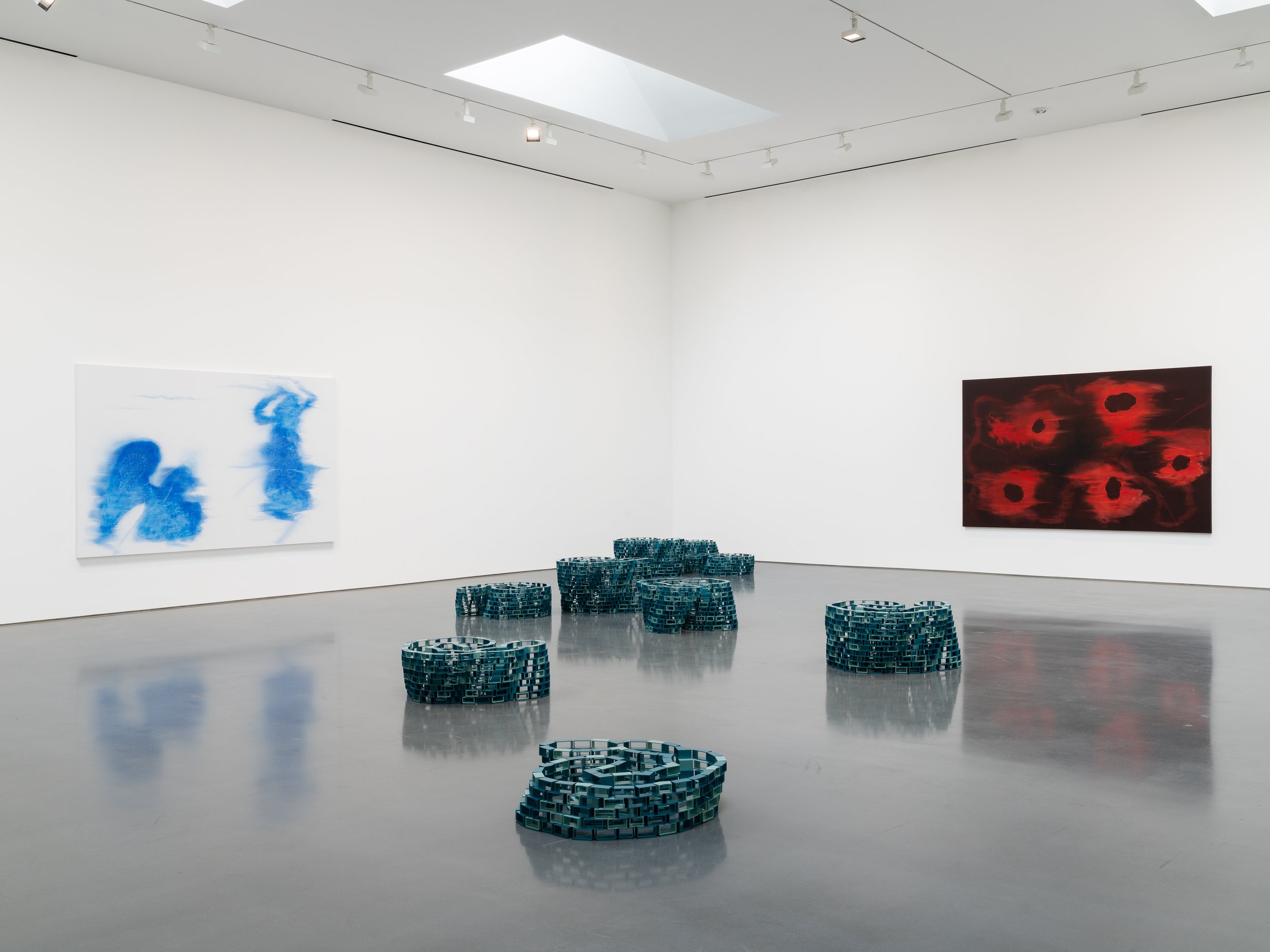
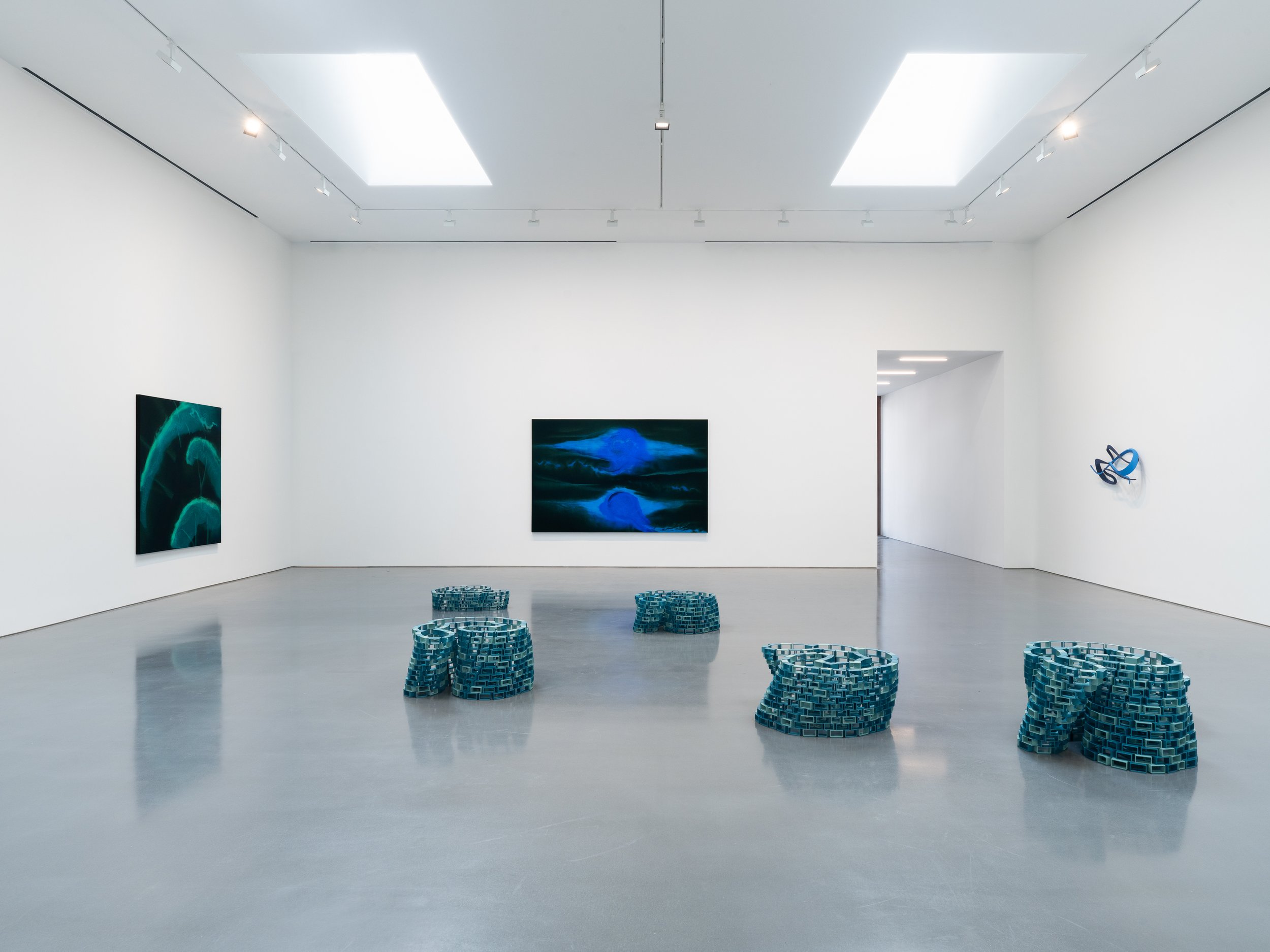
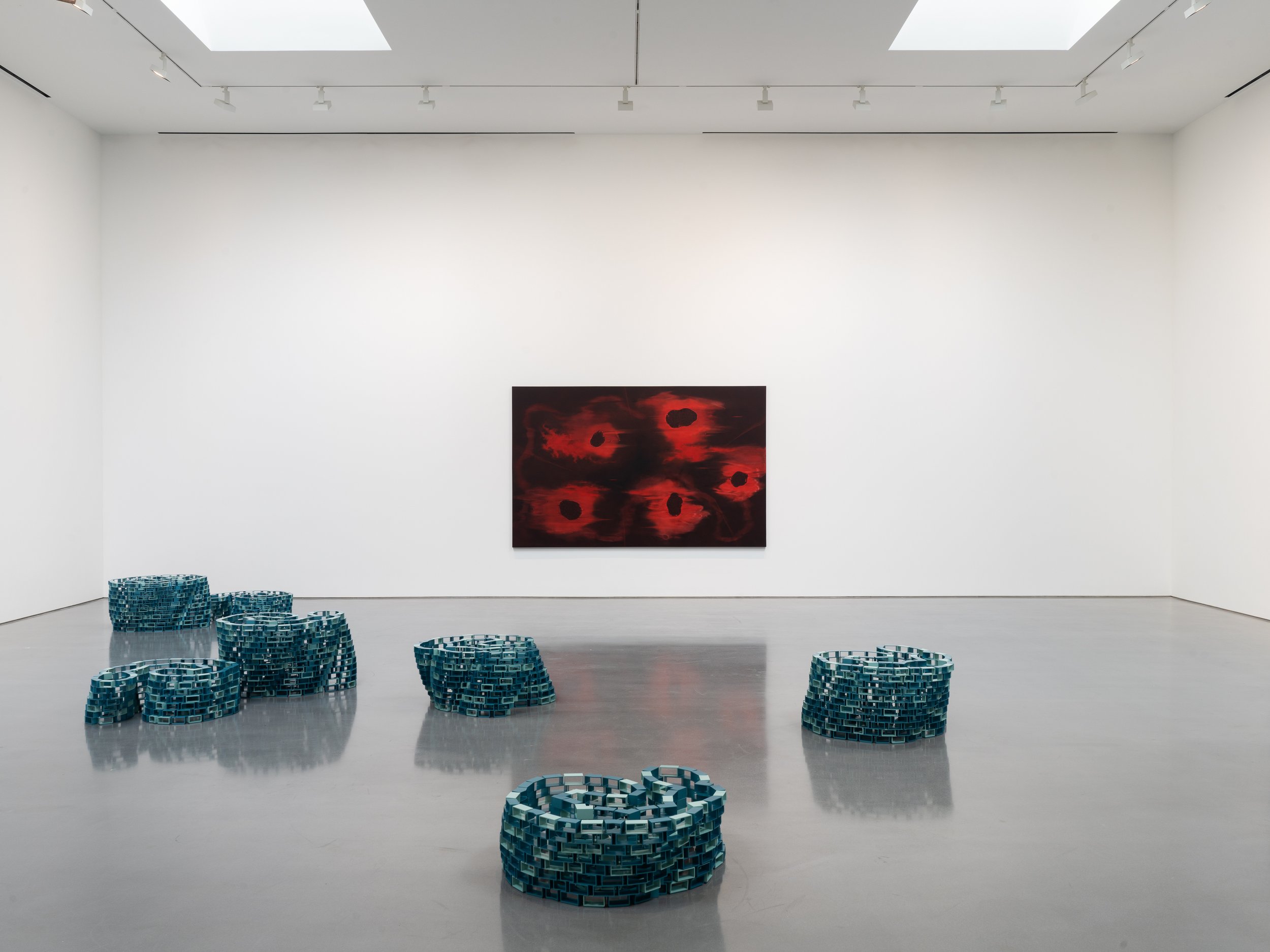

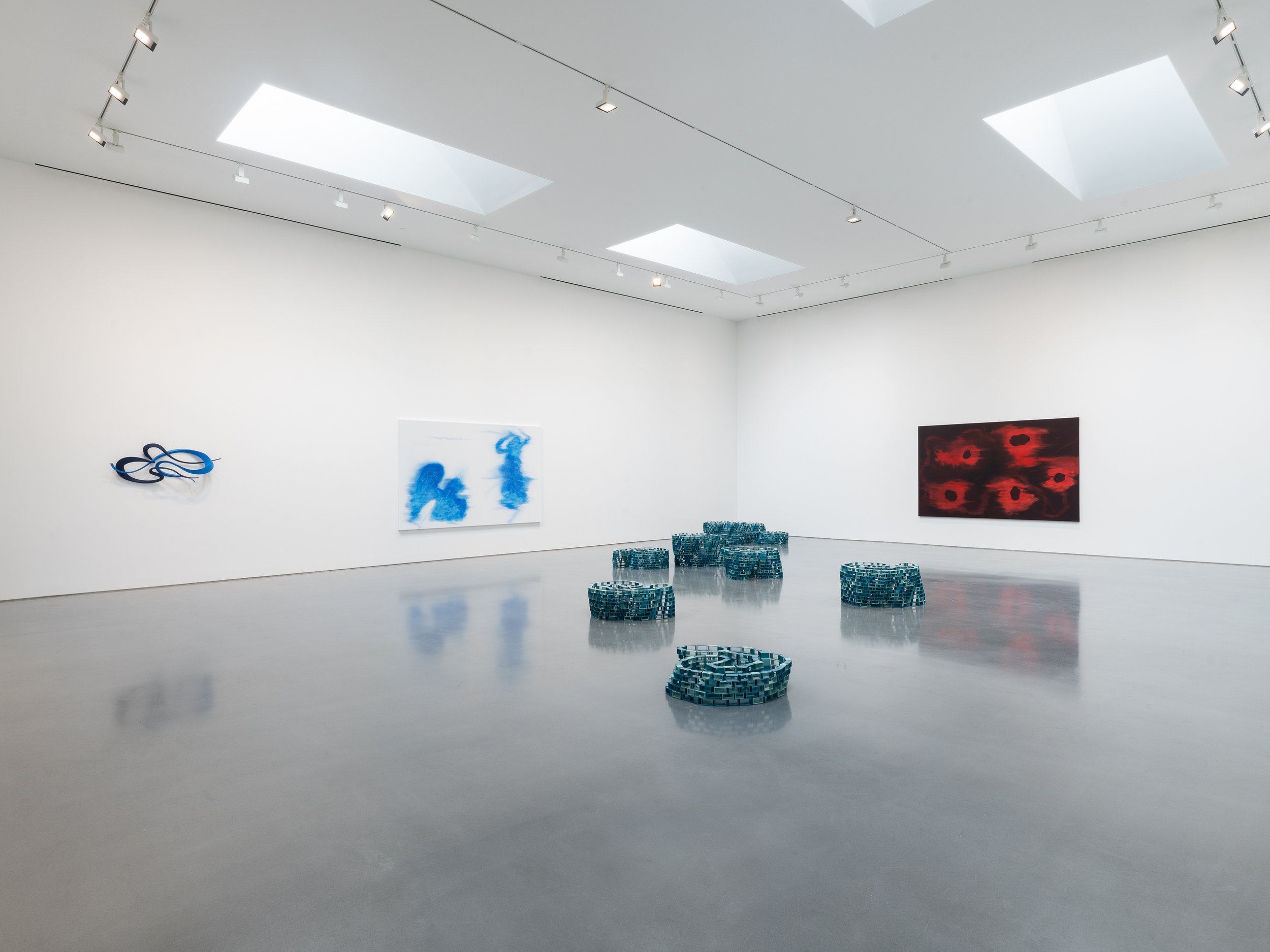
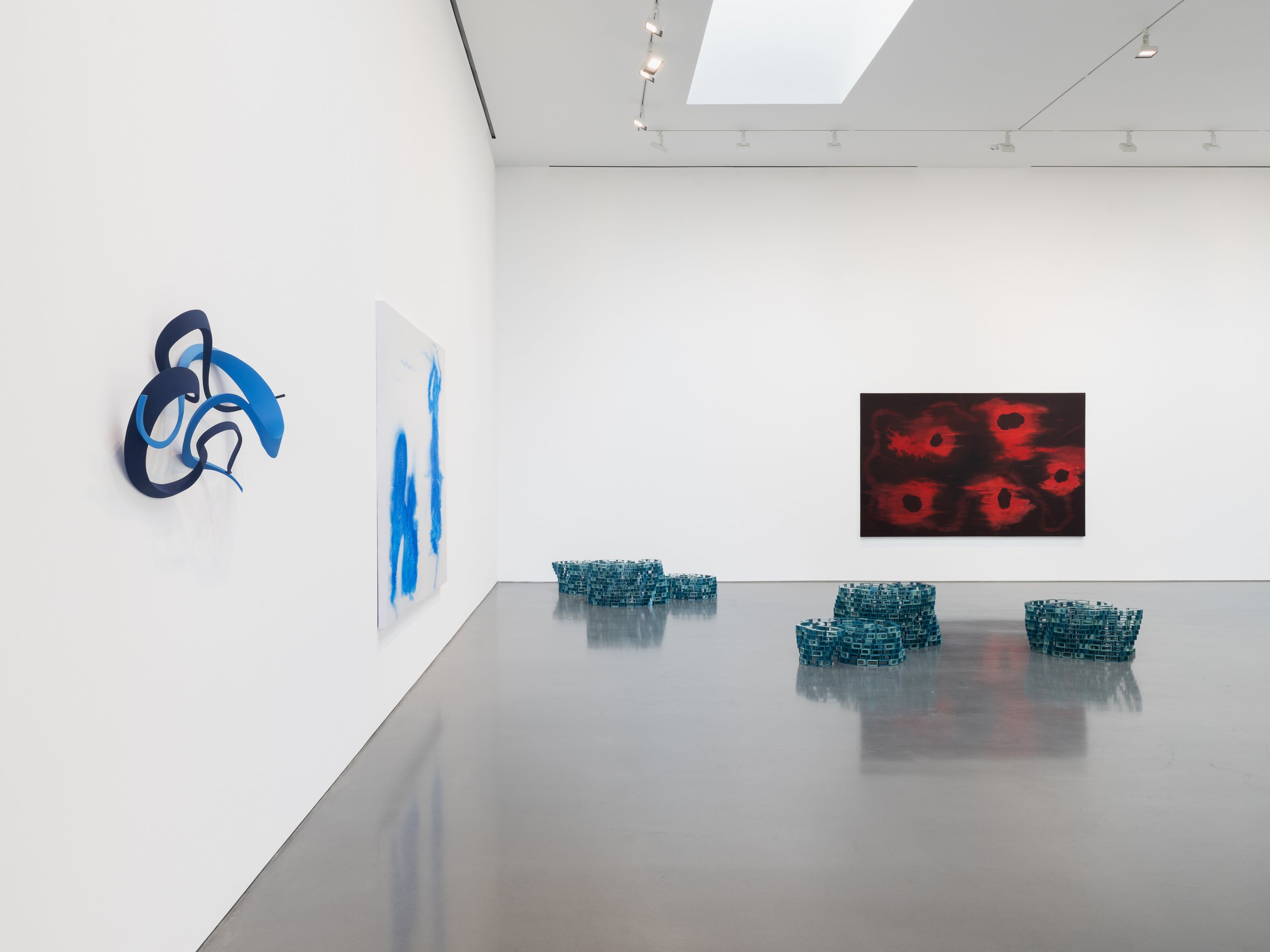
Installation view: Shirazeh Houshiary, The Sound of One Hand, Lisson Gallery Los Angeles (14 September – 2 November 2024) © Shirazeh Houshiary, Courtesy Lisson Gallery.
For her first solo show in Los Angeles for over a decade, the British artist Shirazeh Houshiary presents new and recent works, exploring the origins of life and the mysteries of the cosmos, from a microscopic cellular level, to the stratospheric phenomenon of the aurora borealis. The show’s title relates to a Zen Buddhist teaching that instructs the student to listen to the sound of one hand clapping, in order to open their mind to such a possibility and transcend the constraints of the physical body. Despite not being a Zen practitioner, Houshiary realised that her work revolves around the insistent sound made by one of her hands, making tiny, looping, scratched marks in pencil onto large aluminum surfaces, building up worlds through the silence of her inscribed words.
Shirazeh Houshiary Earth Lament, 2023 Pigment and pencil on Aquacryl on canvas and aluminium 190 x 300 cm 74 3/4 x 118 1/8 in © Shirazeh Houshiary, Courtesy Lisson Gallery
Houshiary’s abstract paintings emerge from an initial pour of liquid color that floods the surface in irregular pools, before she then covers these areas with her own calligraphic gestures in graphite, which are in fact tiny repetitions of the Arabic phrases: “I am” and “I am not”, which she also likens to the natural act of inhaling and exhaling. For one of the two largest works in the show, entitled Enchanter (2024), Houshiary applies red pigment and pencil to a black ground in five ring shapes, recalling structures of carbon particles linked in a chain. Matching this in scale but cooler in tone, is the painting Earth Lament (2023), with two silhouetted blue figures that somehow materialized from the sedimented pigment, one appearing to soar and the other seemingly being dragged down.
This accidental figuration also occurs in the work Cicada (2023), which could just as easily be a depiction of the wings of this insect as it could be a representation of its rhythmic song. At the other end of the scale are the galactic indigo swirls of So Far So Near (2024) and the bands of ethereal light crisscrossing the work titled Aurora (2023), recalling those seen occasionally streaking across a night sky.
Shirazeh Houshiary Enchanter, 2024 Pigment and pencil on Aquacryl on canvas and aluminium 190 x 300 cm 74 3/4 x 118 1/8 in © Shirazeh Houshiary, Courtesy Lisson Gallery
Occupying the floor is a sculptural installation in nine parts, made from an open latticework of aluminum bricks in blue and green hues, each with the same footprint, but all at different heights, growing at increments of one layer at a time (the shortest has five layers, the highest thirteen). Entitled Maelstrom (2022), these curved forms, both hard and supple at the same time, recall not only the molecular structures of the red painting Enchanter, or “that primeval storm within the spiral of creation where something grows,” as the artist puts it, but also the shape of the ouroboros snake eating its own tail.
From Left to Right
Cicada, 2023 Pigment and pencil on Aquacryl on canvas and aluminium, 190 x 190 x 5 cm, 74 3/4 x 74 3/4 x 2 in © Shirazeh Houshiary, Courtesy Lisson Gallery, Aurora, 2023, Pigment and pencil on Aquacryl on canvas and aluminium,190 x 190 x 5 cm, 74 3/4 x 74 3/4 x 2 in, © Shirazeh Houshiary, Courtesy Lisson Gallery, So Far So Near, 2024,Pigment and pencil on Aquacryl on canvas and aluminium 190 x 300 cm, 74 3/4 x 118 1/8 in,© Shirazeh Houshiary, Courtesy Lisson Gallery
A second sculpture, seemingly another form defying logic and gravity, bursts from the wall. Its two sinuous, entangled lines are the artist’s approximation of the movement of a solitary wave – lending it the name Soliton (2024) – which is a type of swelling or surging motion that is not dependent on previous pulses, or followed by other waves. From such unfathomable objects, to minute molecules and gigantic expanses of space, Houshiary’s art works represent a journey through everything from the chaos and messiness of the Big Bang to the silent contemplation of the resulting energies that surround every one of us.
About the artist
Since rising to prominence as a sculptor in the 1980s, Shirazeh Houshiary’s practice has swelled to encompass painting, installation, architectural projects and film. “I set out to capture my breath,” she said in 2000, to “find the essence of my own existence, transcending name, nationality, cultures.” Veils, membranes and mists are leitmotifs in work that tries to visualise modes of perception, spanning the scientific and the cosmic while drawing on sources as wide-ranging as Sufism, Renaissance painting, contemporary physics and poetry. Houshiary finds succour in the transformation of material: Arabic words, one an affirmation the other a denial, are pencil-stroked onto canvas so lightly, and clouded over by finely wrought skeins of pigment, that they morph in front of the naked eye and defy reproduction. So too, aluminum armatures and elliptical brick towers, charged with dynamic tension, appear different from every angle, as if negating their own presence; her commission for the East window of St Martin in the Fields, London, presents a cross, warped and spanning from a circular motif, as if reflected in water. “The universe is in a process of disintegration,” she says, “everything is in a state of erosion, and yet we try to stabilise it. This tension fascinates me and it’s at the core of my work” (2013).
Shirazeh Houshiary was born in Shiraz, Iran in 1955, where she attended university before moving to London, UK in 1974. She has a BA from Chelsea School of Art (1979) and lives and works in London, UK. She has had solo exhibitions at Lisson Gallery, London (2021), Shanghai (2020), and New York (2017); Singapore Tyler Print Institute, Singapore (2016); The Douglas Hyde Gallery, Dublin, Ireland (2007); Tate Liverpool, UK (2003); Islamic Gallery, British Museum, London, UK (1997); Magasin-Centre national d’art contemporain, Grenoble, France (1995); University of Massachusetts, Amherst, MA, USA (1994); Camden Arts Centre, London, UK (1993); Musée Rath, Geneva, Switzerland (1988); and in 2013, her exhibition ‘Breath’ was a celebrated Collateral Event of the 55th Venice Biennale in Italy.
Recent group exhibitions include: ‘Artists and the Rothko Chapel: 50 Years of Inspiration’, Moody Center for the Arts, Rice University, Houston, Texas, USA (2021); ‘Abstraction and Calligraphy − Towards a Universal Language’, Louvre Abu Dhabi in collaboration with Centre Pompidou, Abu Dhabi, UAE (2021); ‘Spirit and Endeavour’, Salisbury Cathedral, Salisbury, UK (2020); Jesus College, Cambridge, UK (2017); Fondazione Palazzo Albizzini, Collezione Burri, Citta di Castello, Perugia, Italy (2016); University of Michigan Museum of Art, Ann Arbor, MI, USA (2014). Her work has been included in major group exhibitions since the 1980s including: Dayton Art Institute, Dayton, OH, USA (2011); Museum of Modern Art, New York, NY, USA (2007); Peggy Guggenheim Collection, Venice, Italy (2002); Rijksmuseum Kröller-Müller, Otterlo, Netherlands (1990); Centre Pompidou, Paris, France (1989); Louisiana Museum, Humlebaek, Denmark (1986). She has also participated in numerous biennials including Cartagena deIndias, Colombia (2014); Kiev Biennale, Ukraine (2012); the 17th Biennale of Sydney, Aus
About Lisson Gallery
Lisson Gallery is one of the most influential and longest-running international contemporary art galleries in the world. Today the gallery supports and promotes the work of more than 70 international artists across spaces in London, New York, Los Angeles, Shanghai and Beijing. Established in 1967 by Nicholas Logsdail, Lisson Gallery pioneered the early careers of important Minimal and Conceptual artists such as Art & Language, Carl Andre, Daniel Buren, Donald Judd, John Latham, Sol LeWitt, Richard Long and Robert Ryman among many others. It still works with many of these artists and others of that generation, from Carmen Herrera and Olga de Amaral to Hélio Oiticica and Lee Ufan. In its second decade the gallery introduced significant British sculptors to the public for the first time, including Tony Cragg, Richard Deacon, Anish Kapoor, Shirazeh Houshiary and Julian Opie. Since 2000, the gallery has gone on to represent many more leading international artists such as Marina Abramović, Ai Weiwei, John Akomfrah, Liu Xiaodong, Otobong Nkanga, Pedro Reyes, Sean Scully, Hiroshi Sugimoto and Wael Shawky. It is also responsible for raising the international profile of a younger generation of artists including Dana Awartani, Cory Arcangel, Garrett Bradley, Ryan Gander, Hugh Hayden, Haroon Mirza, Laure Prouvost and Cheyney Thompson.
The exhibition opened on September 13 and will run through till October 26, 2024. The exhibition is being held at 1037 N. Sycamore Avenue, at the Los Angeles location
For more information about this exhibition and others, please visit the Lisson Gallery here. The gallery can also be found on Facebook, YouTube, and Instagram.
Srijon Chowdhury : Tapestry
Installation view : Srijon Chowdhury Tapestry September 6 – October 19, 2024 Courtesy the artist and P•P•O•W, New York
P·P·O·W is pleased to present Tapestry, Srijon Chowdhury’s first solo exhibition with the gallery. Oscillating between a highly stylized technique and uncanny realism, the Portland-based artist’s prismatic compositions mine elements from daily life to find the universal in the quotidian. Combining interests in philosophy, religion, ecology, and art history, Chowdhury’s intensely detailed, saturated, and hypnotic narrative compositions transform the artist’s immediate environment into immersive dreamscapes where the boundaries between our physical reality and the metaphysical, mythological and the supernatural dissolve.
Speaking to subjective perceptual experience, Tapestry aims to transport the viewer on a visceral and emotional level. At the center of the gallery stands a welded steel circular fence. Developed over a decade, the structure mimics the architecture of a circular mosque built by the artist’s ancestors in the coastal farmlands of Bangladesh. In Chowdhury’s construction, Islamic geometric patterning is replaced with the language of archaic sigils. The two halves of the sigil fence represent two poems by William Blake; “A Divine Image” and
Installation view : Srijon Chowdhury Tapestry September 6 – October 19, 2024 Courtesy the artist and P•P•O•W, New York
“The Divine Image.” Counterparts, the poems contemplate the dark and light aspects of humanity. Affixed to the fence is a series of intimately scaled twists on traditional genre painting. Potently charged and framed by the fence’s mysterious latticing, the paintings become the windows of an encloser which is both isolated from and inseparably connected to its exterior world. Referencing other structures such as Giulio Camillo’s 16th century Theatre of Memory and Buddhist prayer wheels, Chowdhury’s fence is meant to be walked through, and activated by the viewers sensory experience of image, symbol, and architecture.
Surrounding the fence are several immersive large-scale paintings, which act as both backdrop and landscape for the circular structure. First exhibited in Same Old Song, Chowdhury’s 2022 solo exhibition at the Frye Museum in Seattle, Mouth (Divine Dance) , 2022, is a monumentally scaled painting comprising of five panels which depict a fiery inferno framed by parted lips. Shadow-like figures clasp hands and dance amidst the flames, as if the whole of humanity has joined together in their shared fate. Chowdhury also faintly renders more than a hundred motifs and figures from his prior works along the wide mouth’s lip creases, operating as a survey of the artists’ rich symbolic lexicon.
Installation view : Srijon Chowdhury Tapestry September 6 – October 19, 2024 Courtesy the artist and P•P•O•W, New York
In many of Chowdhury’s paintings, portraits of his family and natural surroundings can be viewed as both direct representations and greater universal archetypes. His engulfing floral patterns recall medieval allegories such as the unicorn tapestries which contemplate the dualistic nature of desire and love. In Tapestry, Chowdhury includes multiple depictions of a cherry tree that blooms once a year for one week in his backyard. Works such as Andreas with Wildflowers , 2024, depict the artist’s friend leaning against the blossoming tree. However, instead of a domestic landscape, a riotous sea of wildflowers and sprawling tree limbs create a sublime architecture, punctuated by an abstract “rose window” at top of the canvas. For Chowdhury flowers represent a microcosm of the universe, of both spring and fall, life and death, and the fleetingness and unattainability of the mystical experience.





















Installation view : Srijon Chowdhury Tapestry September 6 – October 19, 2024 Courtesy the artist and P•P•O•W, New York
Together, the works in Tapestry capture the mysterious and eternal drama of the internal plane and aim to reflect upon the way art can be used to locate beauty and magic during periods marked by climate collapse and political turmoil. In Chowdhury’s references to mythologies of the past, the present moment is located within a larger history of mysticism and devotion. As writer SJ Cowan states, through Chowdhury’s works “the crises of the world can be viewed as the miracle of existence made manifest.”
About the Artist
Srijon Chowdhury (b. 1987) was born in Dhaka, Bangladesh, and lives and works in Portland, OR, where he and his wife Anna Margaret run the exhibition space Chicken Coop Contemporary. He holds a BFA from the University of Minnesota Twin Cities, Minneapolis and Saint Paul, MN, and an MFA from the Otis College of Art and Design, Los Angeles, CA. He has been awarded grants from the Oregon Arts Commission, 2018; Regional Arts and Culture Council, 2018; Andy Warhol Foundation, Portland Institute for Contemporary Art, and Calligram Foundation, 2017; and the Otis Governors Grant, 2012. In 2017, he was awarded the Oregon Arts Commission Individual Artists Fellowship. Chowdhury has presented solo exhibitions at Frye Art Museum, Seattle, WA; Foxy Production, New York, NY; Anat Ebgi, Los Angeles, CA; SE Cooper Contemporary, Portland, OR; CFA Live, Milan, Italy; Antoine Levi, Paris, France; and Ciaccia Levi, Paris, France; among others.
His work has been included in group shows at the FLAG Art Foundation, New York, NY; François Ghebaly, Los Angeles, CA; Foxy Production, New York, NY; Et al., San Francisco, CA; Franz Kaka, Toronto, Canada; Chapter NY, New York, NY; Deli Gallery, New York, NY; White Columns, New York, NY; Nir Altman, Munich, Germany; the Santa Monica Museum of Art, Santa Monica, CA; Torrance Art Museum, Torrance, CA; among others. Chowdhury’s work was recently showcased in the 2024 Artists’ Biennial in Portland, OR. Concurrent with his co-curation of the Frye Art Museum’s group exhibition Door to the Atmosphere , the institution held Chowdhury’s first solo museum exhibition Same Old Song in 2022, coinciding with a publication of the same name.
For more information about this exhibition and others please visit the P·P·O·W gallery’s website. Also, the gallery can be found on Instagram, and Artsy. Srijon’s interview with the magazine can be found here. The exhibition opened on September 6th and will conclude on October 19, 2024.
Margarita Cabrera : Secuelas : cuerpo , tierra , y mar
Installation view. Courtesy of the artist and Jane Lombard Gallery. Photo credit: Arturo Sanchez.
Jane Lombard Gallery is pleased to present Secuelas : cuerpo , tierra , y mar ( Repercussions : body , land , and water ) , a solo exhibition by gallery artist Margarita Cabrera. Secuelas marks the artist’ s first solo presentation with the gallery.
Utilizing textile, gouache, dye, copper, and sound, the works delve into Cabrera's unyielding exploration of global policies surrounding migration, displacement, and capitalism. The exhibition opened on September 6th , there was an opening reception on Friday, September 6th, 6 - 8 PM. The exhibition will conclude on October 26th.
Margarita Cabrera El Flujo de Extracciones (Corriente 44), 2023 Cochineal gouache on paper, U.S. Border Patrol uniform fabric, wood box frame 18 x 4 x 3 in.
“This series reflects my ongoing exploration of memory and identity, blending personal experiences with universal themes. Each piece is a conversation between the past and present, revealing layers that speak to both personal growth and collective history.”
Secuelas : cuerpo , tierra , y mar weaves together narratives of immigration, identity, and heritage, addressing both historical and present-day perspectives of colonization. Emphasizing currency as a marker of power dynamics behind contemporary border relations, Craft of Resistance, a kaleidoscope of copper butterflies, swarms across the gallery walls. The copper sculptures, fabricated in a maquiladora-type setting, are imprinted with the wing pattern of the monarch butterfly on one side and the impression of the American penny on the other. The work speaks to the transformation of transborder experiences as well as the invisible labor behind Mexican and US economies.
Installation view. Courtesy of the artist and Jane Lombard Gallery. Photo credit: Arturo Sanchez.
El Vaivénd el Mar, the central installation of the exhibition, features a soft sculpture ship sailing upon a vibrant sea of intertwined flamenco dresses. Taking the shape of the undulating waves, the dresses layered upon one another, ruffle and fall, suggesting the violence associated with navigating turbulent waters and subjecting unwilling communities. The ship references Spanish fleets that once transported the enslaved between the African coast and colonies of the New World while also pointing to the pervasive influence and control America extorts over current global affairs. Fabricated from US border officer uniforms and constructed into the form of an Iberian trading vessel, the ship becomes a symbol and a vehicle of justification for exploitation. El Vaivénd el Mar brings contemporary immigration policies into question, illustrating the enduring legacy of conquest through the movement, fluctuation, and reshaping of collective colonial histories.
Margarita Cabrera Space in Between -- Agave, in collaboration with L.G. (Mexico/USA), 2016 U.S. Border Patrol uniform fabric, copper wire, PVC pipe, foam, thread, and terra coBa pot 39 x 20 x 23 in.
Utilizing culturally charged materials and community participation, Cabrera's ongoing collaborative series Space in Between investigates migratory crossroads, focusing on the experience of the borderlands and the people who cross them. Transforming US Border Patrol uniforms into indigenous plants, Cabrera works with recent migrant communities to embroider their personal stories onto the work. New iterations to this series expand beyond the Mexico & US border to include perspectives of cross-continental relocation from that of Argentina, Chile, El Salvador, and Pakistan to Spain, in particular, Barcelona. Accordingly, the soft sculptures take on the shape of the native flora and fauna of the region of their embroiderer. This expansion reinforces the symbolic landscape of ‘spaces in between, ’ where relationships across divides are renegotiated.
Similarly, Cabrera’ s ongoing series El Flujode Extracciones , continues to explore the extraction of natural resources, the exploitation of indigenous knowledge and culture through fabric collage with gouache and cochineal dye.
Pepita Para El Lo o Para Que Hable o Calle , Cabrera’ s life-size sculptures of endangered red-crowned Amazon parrots engage viewers in an immediate dialogue about border politics and surveillance. These robotic birds, equipped with voice-activated mimicry devices, create a cacophonous chatter that mirrors the contentious public discourse around border crossings and immigrant detention. The new iterations of these parrots will feature pre-recorded messages by Cabrera describing the use of surveillance equipment in areas of war and political unrest as prototypes for similar technologies used at the US border, underscoring the global consequences of control tactics. Secuelas : cuerpo , tierra , y mar offers a profound exploration of the intersections between art, history, and social justice, inviting viewers to engage with multilateral experiences of displacement, subjugation, and supremacy.
About Margarita Cabrera
Margarita Cabrera (b. 1973, Monterrey, Mexico) received an MFA from Hunter College in 2007. She is an associate professor at the School of Art at Arizona State University. Recent solo exhibitions have been held at the Longmont Museum of Art, CO; McNay Art Museum, San Antonio, TX; Dallas Contemporary, TX; and the Wellin Museum of Art, Clinton, NY . Her work has also been shown at the Barbican Centre, London, UK; Denver Museum of Art, CO; Phoenix Art Museum, AZ; Carnegie Museum of Art, Pittsburgh, PA; LACMA, CA; the Smithsonian Museum of American Art, Washington, DC; MFA Houston, TX; the Contemporary Arts Museum Houston, TX; the Ford Foundation, New York, NY; Seattle Art Museum, WA; the Sweeney Art Center for Contemporary Art at the University of California, Riverside, CA; El Museo del Barrio, New York, NY; and El Museo Rufino T Tamayo, Mexico City, Mexico. Cabrera was a Knight Artist in Residence at the McColl Center for Visual Art in Charlotte, NC. She was a recipient of the Joan Mitchell Foundation Grant, presenting a community public art sculpture commissioned by Lego at Discovery Green in Houston, Puentes Culturales. In 2019, Cabrera unveiled the public sculpture Árbol de la Vida : Memorias y Voces de la Tierra in San Antonio, Texas, and was named Texas Artist of the Year. Cabrera was awarded a 2023 Latinx Artist Fellowship.
For more information about this exhibition and more at Jane Lombard Gallery, please visit the gallery’s site here. The gallery can also be found on Instagram and Facebook.
Wendy Nichol : Departing the World Once More
Photo Credit : Luisa Opalseky
Open thru 10/17 at the Museum Building (9 Mercer Street, 2nd Floor) is the 1st solo art show for accomplished downtown NYC fashion & jewelry designer Wendy Nichol who is expanding into the art world after starting to paint last year which has been a transformative process. Titled Departing the World Once More, the show challenges our preconceived notions of mortality, exploring the playful, mysterious, and sometimes absurd relationship we have with the concept of death. This exhibition invites viewers to confront the inevitable with a sense of curiosity, humor, and even joy—breaking away from traditional depictions of death as morbid or tragic. Bridging her silk tulle world onto the canvas, her color palette highlights earth tones, black, gold, beige, many pieces having an abstract expressionism influence. Also inspired by her early childhood fascination with fashion photography, Nichol has included several portraits that reflect her love of working with models.
Installation View: Departing the World Once More, 2024 Courtesy of Museum Building and Wendy Nichol. Photo Credit : Kunning Huang
In her first solo art show, Wendy Nichol transitions her artistry into the realm of painting. Drawing on her experience with transparent fabrics, fluid lines, and stitch-like details, Nichol’s newfound love of painting is showcased in this collection, her work reflecting signature techniques—delicate, flowing strokes that mimic the soft fall of fabric and intricate, and thread-like patterns that echo the stitches of couture design. In this collection, the artist weaves together abstract forms, distorted figures, and rich textures to present a visual dialogue between the seen and unseen. These works aim to strip away fear, offering instead a perspective that celebrates the unknown and embraces death as a part of life’s grand tapestry.
'Missing Witches' - Wendy Nichol - 12' x 6' Acrylic on Canvas with 1.5" brass frame Photo Credit : Kunning Huang
The largest piece in the show “Missing Witches” (12’ x 6’) taps into the esoteric undercurrents of past life regression, channeling the energies and memories of lost wisdom and forgotten histories. In this piece, abstract forms intertwine to create an otherworldly narrative, evoking the presence of the “missing witches”—women and mystics who once held sacred knowledge, now hidden, or fragmented across time. The fluid, gestural strokes and ethereal hues suggest an exploration of the spiritual residue left behind by these figures, who have transcended physical form but continue to influence the energetic realms.
And one of the smaller portraits, “Beauty as a Decision” explores the powerful notion that beauty is not something inherent or dictated by societal standards, but rather an intentional act, a conscious choice made by the individual. This portrait, with its striking red lips, stark white suit, and bold, minimalist lines, challenges traditional constructs of gender, race, and identity. It suggests that beauty transcends physicality and becomes a personal declaration. The subject’s gaze is strong, unflinching, and confident, embodying the idea that beauty is defined by the wearer—it is a decision, a form of self-expression that defies external expectations and asserts individuality with unapologetic power. The painting compels the viewer to reconsider how they perceive beauty, seeing it not as a passive trait, but as an active, cellular level, self-determined force.
Nichol started her design brand in 2007 after working with Joe Mimran/Club Monaco as accessories designer; quickly building a loyal clientele which led to opening 2 Soho boutiques, she’s since had many of our most beloved style icons wear her mesmerizing fashion pieces like Beyoncé (multiple times including a custom couture gown for Black is King and the iconic black sheer tulle gown for Drunk in Love music video; Beyoncé also wears a WN diamond middle finger ring on Homecoming album art), Rihanna, Lindsay Lohan, Zoë Kravitz, Claire Danes, Naomi Campbell, Rita Ora, Jessica Alba, Lena Dunham, Rebecca Hall (who got engaged with a custom black diamond & opal WN engagement ring and wore a WN dress at her wedding), and Ilana Glazer, who also wore a WN dress at her wedding (Ilana is a friend who even wrote Wendy into a Broad City episode, the S3 premiere where Wendy played a downtown gallerist). Her successful decade run with her 2 Soho stores ended their leases in 2020, and while a new world order prevailed, her clients started wanting more privacy/exclusivity so in 2022, she opened the new studio. The expansive space not only lent itself to a sacred atelier atmosphere, it led to Nichol creating large scale canvases, soon realizing her next move was a brand new passion, painting.




Under a Southern Star: Identity and Environment in Australian Photography
Tobias Titz (born 1973, Trier, Germany; active Melbourne, Australia), Raymond Bush, Jilamara artist, from the series Tiwi Artists, 2019. Inkjet print from Polaroid 665; 55.9 × 71.1 × 3.2 cm (frame). Courtesy of the artist. © Tobias Titz.
PRINCETON, NJ – Under a Southern Star: Identity and Environment in Australian Photography will be on view at the Princeton University Art Museum’s Art on Hulfish gallery from August 17, 2024, to January 5, 2025. The exhibition explores the tension between the so-called “Old World” of Europe and the “New World” of Terra Australis, documenting changing perceptions of Australian identity and environmentalism over the last one and a half centuries. Under a Southern Star will be the final exhibition to be held at the Museum’s Art on Hulfish space, which closes in January in preparation for the opening of the new Museum building later in the year.
Judith Nangala Crispin (born 1970, Sydney, Australia; active Canberra, Australia), Ben sometimes felt he carried his artist girlfriend a lot, but she painted him stars while he slept., 2018. Lumachrome glass print, cliché-verre. Double exposure. Road-killed magpie, seeds, and ash on fiber paper. First exposure, 12 hours under marked glass in the back of a ute. Second exposure, 12 hours with additional seeds and dirt. Winter light.; 73.7 × 101.6 cm (frame). Courtesy of the artist. © Judith Nangala Crispin.
Organized in partnership with Curatorial Exhibitions and drawn in part from the Farrell Family Australian Photography Collection at the Museum of Photographic Arts at the San Diego Museum of Art, the exhibition presents a range of visually arresting photographic techniques, including Lumachrome glass printing and AI animation, to address the impact of colonialism on the region’s cultures and resources. The exhibition particularly highlights the fundamental importance of Aboriginal culture to the Australian experience.
Tracey Moffatt (born 1960, Brisbane, Australia; active Sydney, Australia, and New York, NY), Something More #1 , from the series Something More , 1989. Chromogenic print; 104.1 × 182.9 × 3.3 cm (frame). Museum of Photographic Arts at the San Diego Museum of Art. Gift of Farrell Family. © Tracey Moffatt
While highlighting the work of internationally celebrated contemporary artists, Under a Southern Star also features iconic Australian imagery from the late nineteenth and the early twentieth century by artists such as Max Dupain and Harold Cazneaux. Visitors to the exhibition will encounter the cinematic narratives of Tracey Moffatt, the experimental camera-less imagery of Justine Varga, and the humanistic portraiture of Ricky Maynard. Also on view are collaborative works made by the photographer Tobias Titz and artists from Aboriginal communities.
The exhibition explores Australia’s changing environment with haunting landscapes by Anne Zahalka and Rosemary Laing, while ethereal images by Judith Nangala Crispin feature wildlife struck down by human encroachment in the outback. Also included are selections from Vee Speers’s haunting series Guilty Not Guilty, a video installation featuring hand-colored mug shots that reference the country’s convict past.
“Australian photography past and present deserves to be better known globally, and in keeping with the goals we’ve had for Art on Hulfish since its launch three years ago, this exhibition seeks to bring new attention to important bodies of work that in turn contend with such essential issues as colonialism, nationalism, and the environment.”
















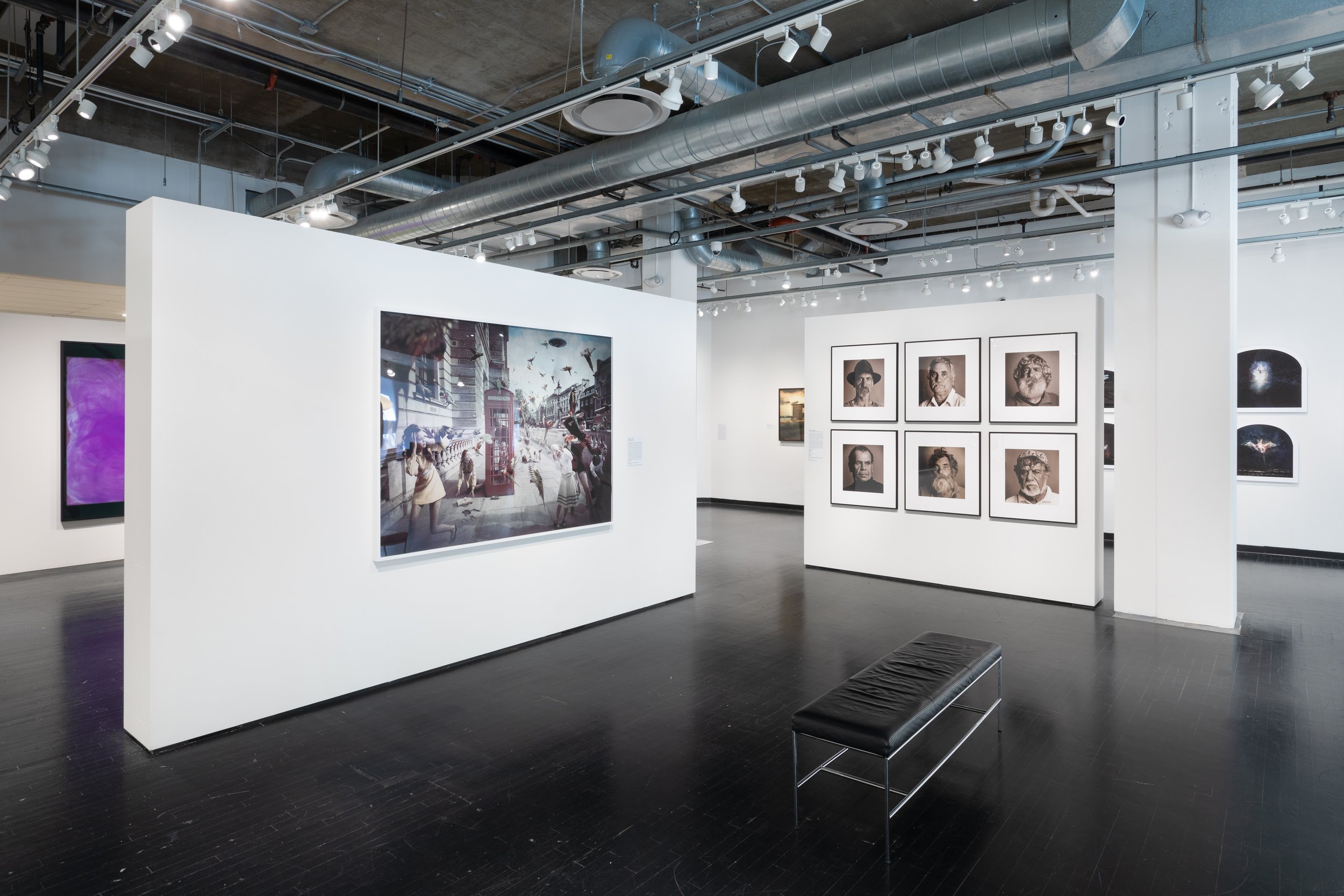







Installation image of Under a Southern Star: Identity and Environment in Australian Photography, 2024. Courtesy of the Princeton University Art Museum. Photo: Joseph Hu.
Under a Southern Star: Identity and Environment in Australian Photography is curated by Deborah Klochko, former executive director and chief curator, Museum of Photographic Arts at the San Diego Museum of Art; and by Graham Howe, founder and CEO, Curatorial Exhibitions; with independent curator Ashley Lumb. This exhibition was originated by the Museum of Photographic Arts, San Diego, with generous support from the Farrell Family Foundation, and is toured by Curatorial Exhibitions, Pasadena, California.
About Art on Hulfish
Art on Hulfish showcases a roster of exhibitions led by photography and time-based media that consider issues of profound impact on twenty-first-century life. Located at 11 Hulfish Street in downtown Princeton, it encompasses some 5,500 square feet of space for exhibitions and public programming, ranging from drop-in activities to scheduled work with artists. Admission is free. Launched in December 2021, the gallery is presenting four exhibitions each year through early 2025, during the time when the Museum’s new facility designed by Adjaye Associates is under construction.
Art on Hulfish is made possible by the leadership support of Annette Merle-Smith and Princeton University. Generous support is also provided by William S. Fisher, Class of 1979, and Sakurako Fisher; J. Bryan King, Class of 1993; John Diekman, Class of 1965, and Susan Diekman; Julie and Kevin Callaghan, Class of 1983; Annie Robinson Woods, Class of 1988; Barbara and Gerald Essig; Rachelle Belfer Malkin, Class of 1986, and Anthony E. Malkin; the Curtis W. McGraw Foundation; Jim and Valerie McKinney; Tom Tuttle, Class of 1988, and Mila Tuttle; Nancy A. Nasher, Class of 1976, and David J. Haemisegger, Class of 1976; the Len & Laura Berlik Foundation; Gene Locks, Class of 1959, and Sueyun Locks; and Palmer Square Management.
About the Princeton University Art Museum
With a collecting history that extends back to 1755, the Princeton University Art Museum is one of the leading university art museums in the country, featuring collections that have grown to include more than 115,000 works of art ranging from ancient to contemporary art and spanning the globe. Committed to advancing Princeton’s teaching and research missions, the Art Museum also serves as a gateway to the University for visitors from around the world. The main Museum building is currently closed for the construction of a bold and welcoming new building, slated to open in 2025.
Art on Hulfish, a gallery project of the Art Museum located at 11 Hulfish Street, is open daily. Art@Bainbridge, a gallery project at 158 Nassau Street, is open Tuesday through Sunday. Admission to both galleries is free.
Please visit the Museum’s website for digital access to the collections, a diverse portfolio of programs, and details on visiting our downtown galleries.
For more information about the exhibition ‘Under a Southern Star’ at Art on Hulfish and others at Princeton Art Museum, please visit their site here. The museum can also be found on Facebook , Instagram and YouTube. The Museum Store in Palmer Square, located at 56 Nassau Street in downtown Princeton, is open daily and can be visited online here.
Calida Rawles : Away with the Tides
Away with the Tides, 2024 Acrylic on canvas 96 x 120 inches Courtesy the artist and Lehmann Maupin, New York, Seoul, and London
(MIAMI, FL — ) — Pérez Art Museum Miami (PAMM) is pleased to present Calida Rawles: Away with the Tides, an exhibition featuring all-new, site-specific works alongside a novel large-scale video installation. Marking Rawles’s first solo museum exhibition in the United States, Away with the Tides reflects aspects of Miami’s diverse communities, natural environments, and rich history.
Internationally recognized for her intricate and delicate acrylic on canvas paintings, Rawles blends hyperrealism with poetic abstraction and situates her subjects in dynamic, undulating spaces. Her recent work utilizes water as a vital, organic, and multifaceted element—as well as a historically charged space that concomitantly represents racial exclusion and individual healing.
“Away with the Tides seeks to illuminate and celebrate Miami’s history, resilience, and beauty, in the hands of a distinct talent in contemporary painting. Supporting and collaborating with the local communities of Miami and South Florida is one of PAMM’s core values and central facets of its mission. I want to thank Calida for sharing her work, passion, and restless desire to experiment and evolve with PAMM and with our audiences.”
Away with the Tides bridges the past and present, depicting elements of Miami’s history through the eyes of its residents. Delving into the experience of Black people in America, Rawles partnered with members of the historically Black community of Overtown in Miami. Akin to Tremé in New Orleans, the Historic West End in Charlotte, and countless other neighborhoods in the United States, Overtown transformed from a thriving cultural and commercial hub for Black people in the 1930s to a town subjected to gentrification, systemic racism, and mass displacement beginning in the 1950s and 60s.
To See What It Is, 2024 Acrylic on canvas 84 x 48 inches Courtesy the artist and Lehmann Maupin, New York, Seoul, and London
“It is extremely exciting to work with Rawles on her first museum solo presentation. While Rawles’s signature style will be present, she is also pushing her boundaries and working in natural waters for the first time, resulting in paintings with a new color composition and feel. Miami is a complicated and difficult place to understand. I hope this exhibition gives others the courage to dive into their city or town’s history, no matter how dark or difficult.”
Release What I Will Not Give, 2024 Acrylic on canvas 30 x 24 inches Courtesy the artist and Lehmann Maupin, New York, Seoul, and London
Rawles’s process began with a series of preliminary photoshoots in Virginia Key Beach and the public pool at Theodore Gibson Park in Overtown, which then informed the subject matter for the lifelike paintings on view. Ranging from a 10-month-old baby to senior citizens, the portraits provide representation for those who call Overtown home while capturing the generational shift the community has undergone and giving shape to an American experience that is often overlooked. With residents as the subjects of her paintings, it became evident that the exhibition would be a transformative experience—for some, it would also be their first time at a museum, emphasizing the silos Miami still struggles to navigate despite geographical proximity.
Impact, 2024 Acrylic on canvas 60 x 72 inches Courtesy the artist and Lehmann Maupin, New York, Seoul, and London
Furthermore, by photographing Black individuals in the ocean, Rawles interrogates the Atlantic Ocean's history as the site of the supremely exploitative Transatlantic Slave Trade. As a result, the finished work critically engages with Miami’s water-entwined climate, while connecting to larger histories of beauty, oppression, and persistence in contemporary American life.
“I am so inspired by the Overtown community’s resilience and strength. Through my work, I hope to shine a new light on the beauty and untold stories of its residents. I’m immensely grateful to Franklin Sirmans and Maritza M. Lacayo for supporting my vision and giving me the opportunity to engage so meaningfully with this incredible community.”
Away with the Tides is accompanied by an exhibition catalogue, the most in-depth volume to date on Calida Rawles’s art and practice, featuring collaborators Regina R. Robertson, Christine Y. Kim, and Enuma Okoro.








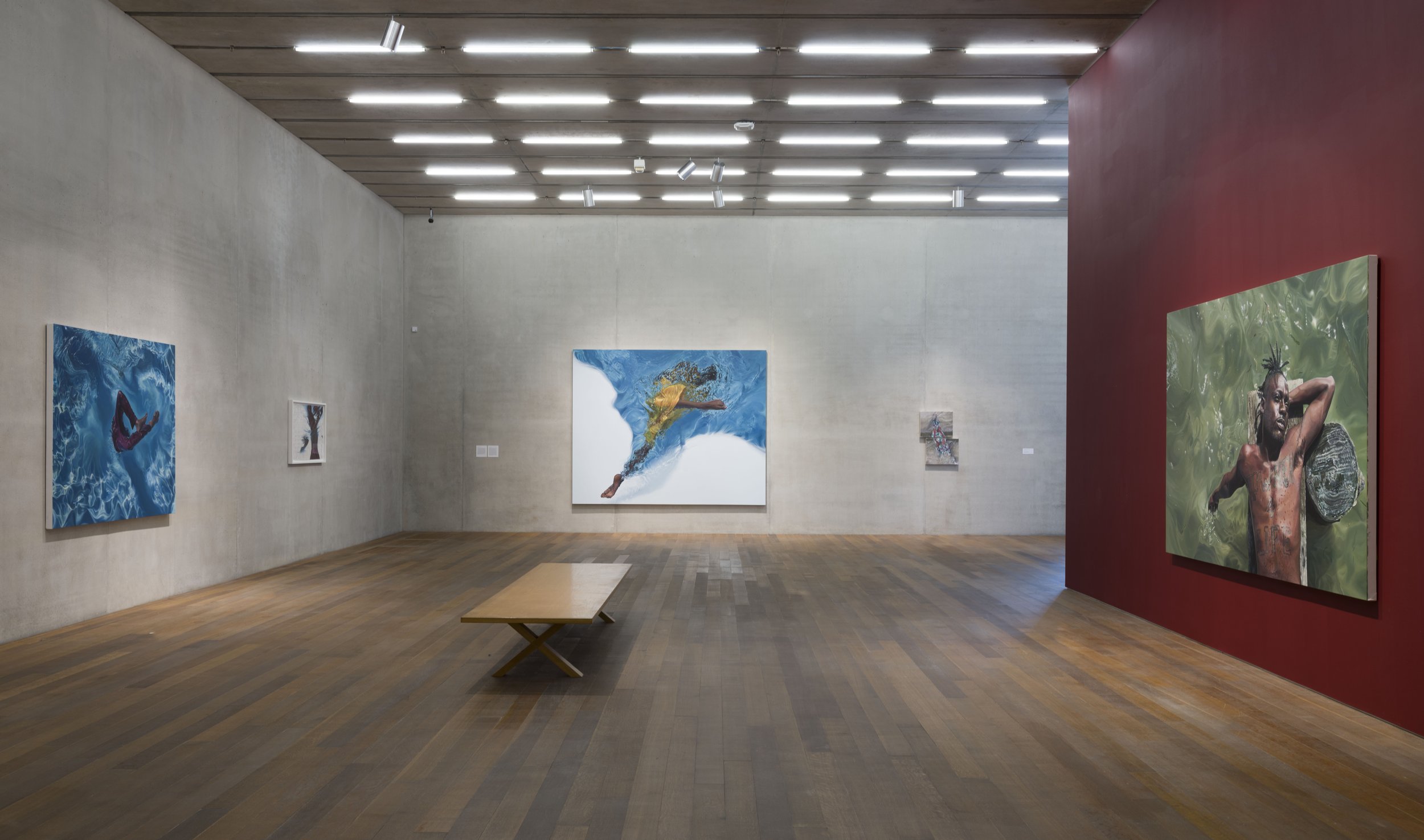



Installation view: Calida Rawles: Away with the Tides, Pérez Art Museum Miami, 2024–25. Photo: Oriol Tarridas
Away with the Tides is organized by Maritza M. Lacayo, Associate Curator, with the support of Fabiana Sotillo, Curatorial Assistant.
ABOUT CALIDA RAWLES
Rawles received a B.A. from Spelman College, Atlanta, GA (1998) and an M.A. from New York University, New York, NY (2000). Solo exhibitions of her work have been organized at Lehmann Maupin, New York, NY (2021); Various Small Fires, Los Angeles, CA (2020); and Standard Vision, Los Angeles, CA (2020). Her work has been featured in numerous group exhibitions including Generation*. Jugend trotz(t) Krise, Kunsthalle Bremen, Bremen, Germany (2023); Rose in the Concrete, San Francisco Museum of Modern Art, San Francisco, CA (2023); 12th Berlin Biennale for Contemporary Art, Berlin, Germany (2022); Black American Portraits, Los Angeles County Museum of Art (LACMA), Los Angeles, CA (2021), Spelman College Museum of Fine Art, Atlanta, GA (2023); A Shared Body, FSU Museum of Fine Arts, Tallahassee, FL (2021); View From Here, Los Angeles County Museum of Art (LACMA), Los Angeles, CA (2020); Art Finds a Way, Norton Museum of Art, West Palm Beach, FL (2020); Visions in Light, Windows on the Wallis, Beverly Hills, CA (2020); Presence, Fullerton College Art Gallery, Fullerton, CA (2019); With Liberty and Justice for Some, Walter Maciel Gallery, Los Angeles, CA (2017); Sanctuary City: With Liberty and Justice for Some, San Francisco Arts Commission, San Francisco, CA (2017); LACMA Inglewood + Film Lab, Inglewood, CA (2014); and Living off Experience, Rush Arts Gallery, New York, NY (2002). Rawles created the cover art for Ta-Nehisi Coates’s debut novel, “The Water Dancer,” and her work is in numerous public and private collections, including Dallas Museum of Art, Dallas, TX; Los Angeles County Museum of Art (LACMA), Los Angeles, CA; Pérez Art Museum Miami, Miami, FL; Spelman College Museum of Fine Art, Atlanta, GA; and Studio Museum in Harlem, New York, NY.
ABOUT PAMM
Pérez Art Museum Miami (PAMM), led by Director Franklin Sirmans, promotes artistic expression and the exchange of ideas, advancing public knowledge and appreciation of art, architecture, and design, and reflecting the diverse community of its pivotal geographic location at the crossroads of the Americas. The 40-year-old South Florida institution, formerly known as Miami Art Museum (MAM), opened a new building, designed by world-renowned architects Herzog & de Meuron, on December 4, 2013, in Downtown Miami’s Maurice A. Ferré Park. The facility is a state-of-the-art model for sustainable museum design and progressive programming and features 200,000 square feet of indoor and outdoor program space with flexible galleries; shaded outdoor verandas; a waterfront restaurant and bar; a museum shop; and an education center with a library, media lab, and classroom spaces.
###
Accredited by the American Alliance of Museums, Pérez Art Museum Miami (PAMM) is Sponsored in part by the State of Florida, Department of State, Division of Arts and Culture and the Florida Council on Arts and Culture. Support is provided by the Miami-Dade County Department of Cultural Affairs and the Cultural Affairs Council, the Miami-Dade County Mayor and Board of County Commissioners. Additional support is provided by the City of Miami and the Miami OMNI Community Redevelopment Agency (OMNI CRA). Pérez Art Museum Miami is an accessible facility. All contents ©Pérez Art Museum Miami. All rights reserved
Away with the Tides opened on June 27, 2024, and will be on view until February 2, 2025. For more information about this exhibit and other exhibits currently on view and upcoming, please visit the Pérez Art Museum website here. PAMM can also be found on Instagram, YouTube, TikTok, and Facebook.
Anri Sala : Time No Longer
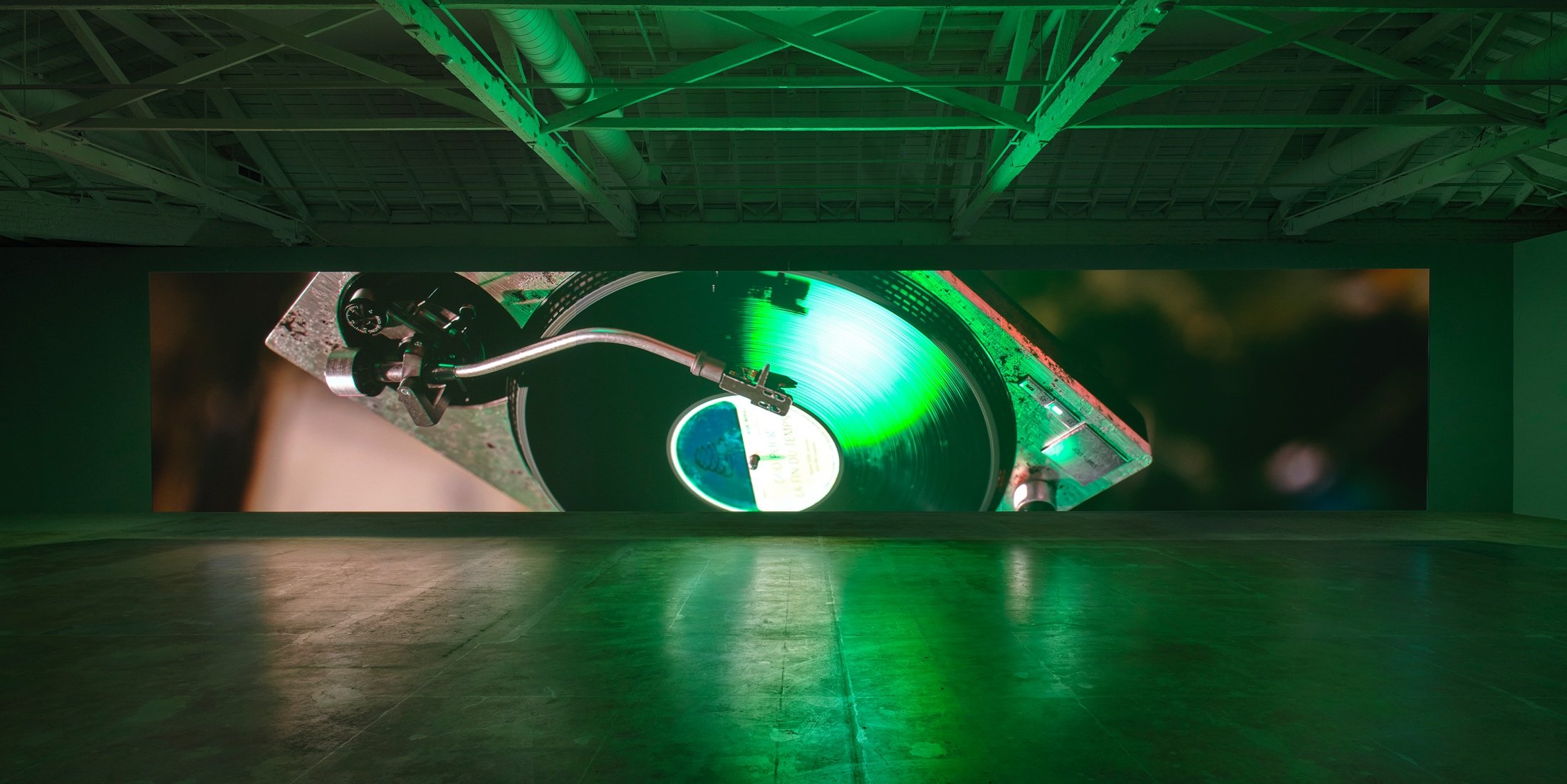
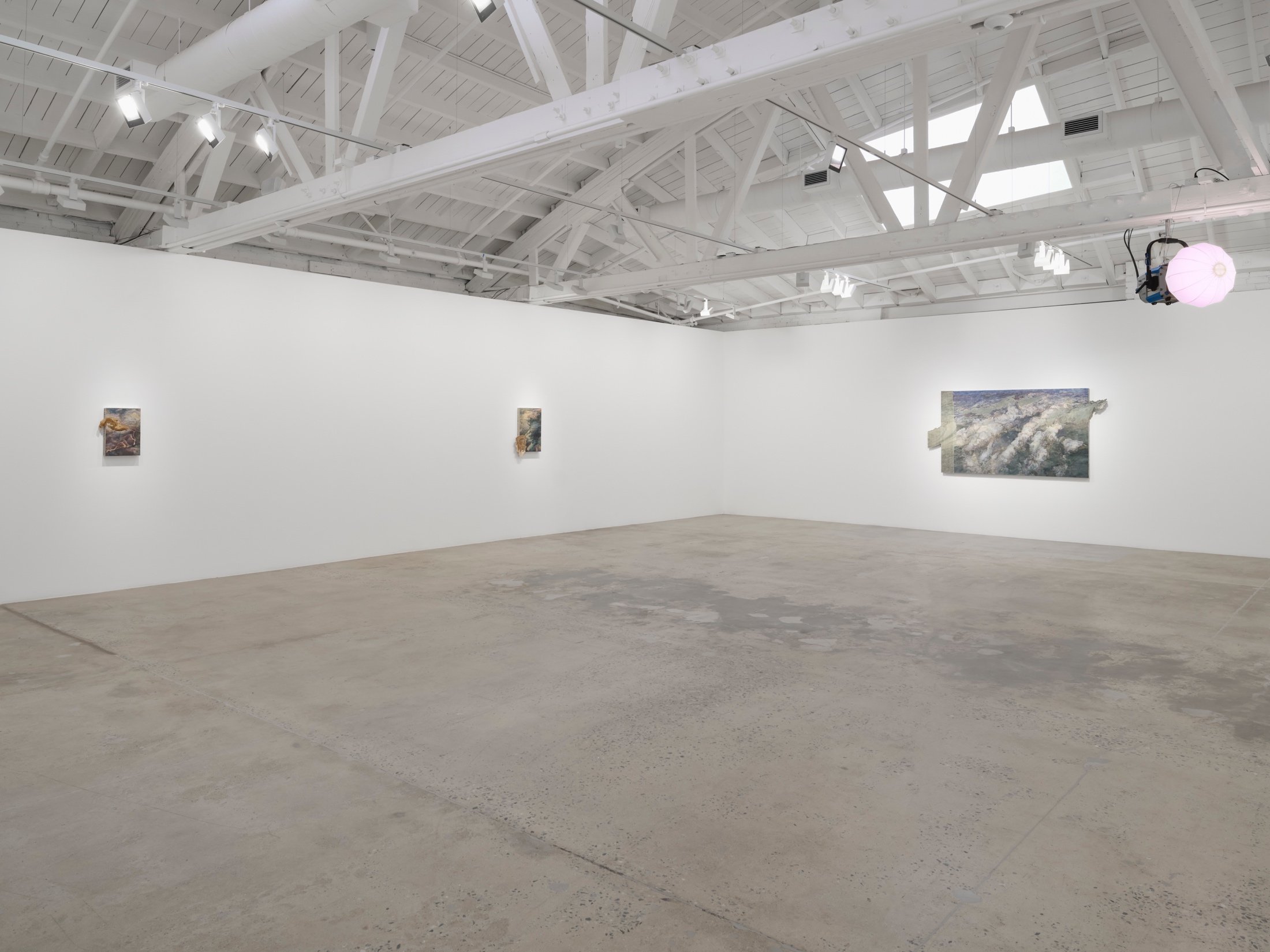
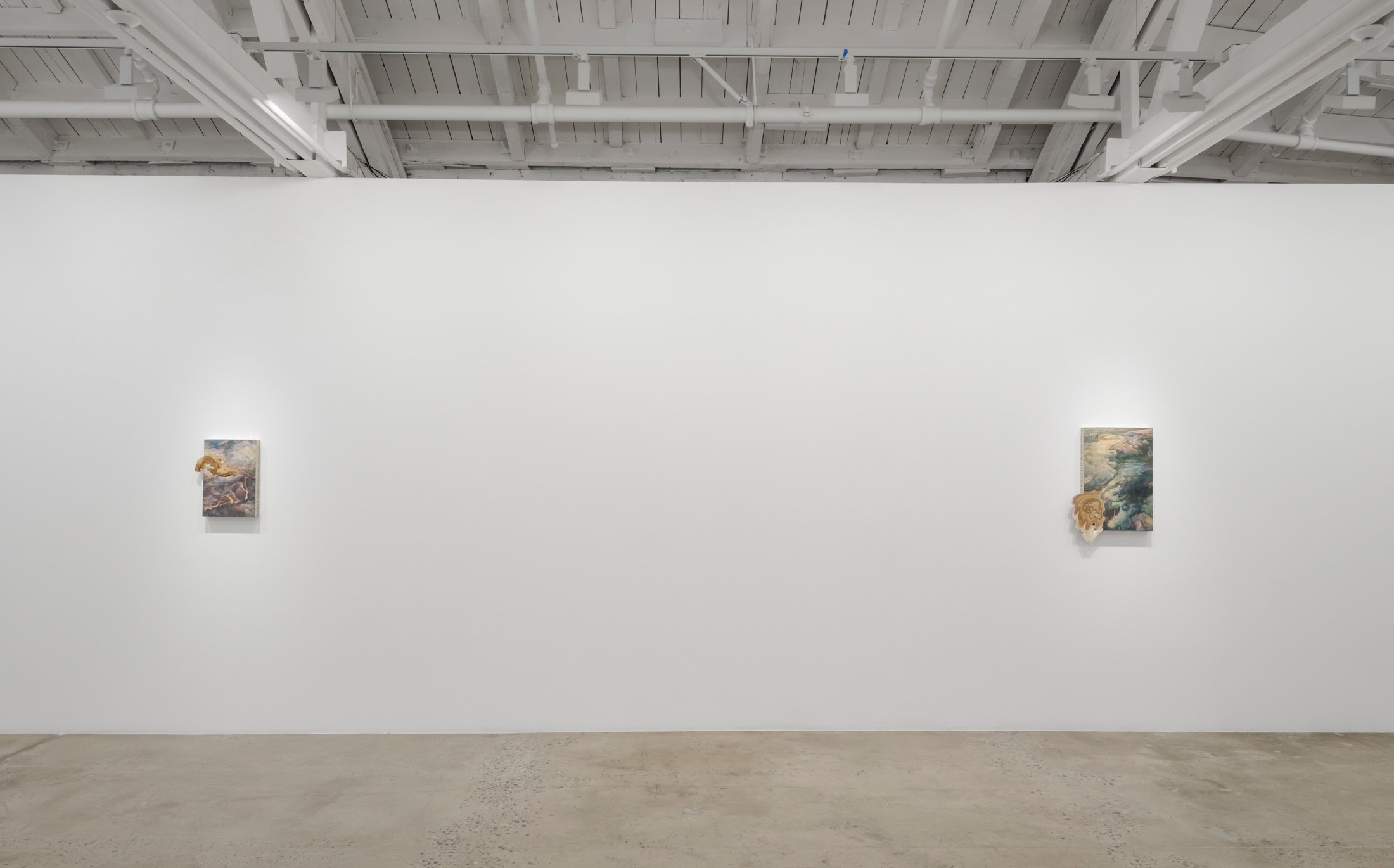

Installation View Anri Sala: Time No Longer Marian Goodman Gallery Los Angeles | 7 September - 26 October, 2024 Courtesy of the artist and Marian Goodman Gallery Photo credit: Elon Schoenholz
Marian Goodman Gallery is delighted to present the first exhibition of Anri Sala in Los Angeles as well as the West Coast debut and gallery premiere of his immersive video, sound, and light installation, Time No Longer, 2021. Since the late 1990s, Sala has worked primarily with time-based media, often looking at the performance of music to narrate and interpret various histories of culture and politics. Within this exhibition, we find Sala engaging two seemingly disparate art forms that are united as condensations of time that embrace the past and the future, respectively, in fresco painting and computer-generated imagery.
Temporal elements are also fused within the historical, musical and visual aspects of the work, Time No Longer, wherein a weathered record player is portrayed floating in a space station. While spinning in zero gravity, the turntable plays a new arrangement of French composer Olivier Messiaen’s 1941 work, “Quartet for the End of Time,” perhaps one of the most searingly haunting and memorable works composed in incarceration. During the Second World War, Messiaen (1908–1992) was captured at Verdun and incarcerated at a German prisoner-of-war camp. While imprisoned, he composed “Quartet for the End of Time,” performing with three fellow musician prisoners before an audience of captives and guards, using only the instruments they knew how to play and had available.
In Messiaen’s elegiac piece of chamber music, Sala recognized a sense of overwhelming loneliness and despair within an insurmountable crisis, along with the need to bring something, however fragile and soft- spoken, into that numbness. Within the composition, Sala extracted "The Abyss of the Birds," the only solo movement, written for a clarinet, for use in Time No Longer. The abyss, to Messiaen, represented time, “with its sadness and tediums,” while “birds are the opposite of Time; they are our desire for light...”. Further, Messiaen’s concept of time can be interpreted beyond our conventional understanding of past and future, a chronometry resembling an eternal rhythm that exists and extends beyond linearity.
The isolated clarinet, the compositional title and its meaning tie the work to another remarkable musical event: the story of Ronald McNair and his saxophone. In 1986, McNair, one of the first Black astronauts to have reached space, was also a professional saxophonist who had planned to play and record a solo performance on the Challenger space shuttle. This would have been the first original piece of music recorded in space, had the mission not ended tragically; the spacecraft disintegrated seconds after takeoff, killing everyone on board. Time No Longer was commissioned in 2021 by the Buffalo Bayou Partnership in Houston, where the Challenger disaster occurred 35 years earlier.
Sala envisioned that composing a saxophone element for "The Abyss of the Birds" would underscore the vast loneliness that connects McNair and Messiaen, respectively, as experienced through outer space and incarceration. The saxophone, performed by André Vida, emerges in Time No Longer only when the needle lifts from the vinyl, granting McNair his forsaken performance, refracted into space alongside the original Messiaen score, performed by clarinetist Raphaël Sévère. Further, the connection forms a duet between two instrumental voices, intertwined through circumstance.
Time No Longer, 2021 Computer-generated imagery, multichannel sound, dynamic lights; Duration: 13 minutes
Projection approx.: 1771 5/8 x 250 in. (4500 x 635 cm) Courtesy of the artist and Marian Goodman Gallery Photo credit: ElonSchoenholz
The vast, eerie stillness, coupled with the absence of humanity as conveyed in Time No Longer evokes the aftermath of a catastrophe — with the turntable serving as a custodian of that absent humanity. With its own acrobatic intelligence, the player’s tonearm moves across the record, its needle intermittently touching down, lifting off, resuming and then halting the music. In a manner that seems not entirely subject to weightlessness, it perpetually conducts itself, witnessing sixteen earthly sunrises and sunsets each day from its vantage point in space.
The fortuity of time figuratively extends into an adjacent gallery, where Sala presents selections from his new series of frescoes. Here, Sala returns to the al fresco technique that he first learned about in the 1990s while studying art in his native Albania. This ancient method unfolds ambiguously over time, demanding precise temporal awareness. Each composition is divided into giornatas, the portions of work that can be completed in a single day while the medium, known as intonaco, remains fresh. Once it dries, the layers of pigments are permanently bonded to the surface, making any further alterations impossible.
Anri Sala Noli Me Tangere Inversa (Fragment 2), 2024 Fresco painting, intonaco on aerolam, Tartaruga marble 19 1/4 x 31 1/8 x 1 5/8 in. (49 x 79 x 4 cm) Courtesy of the artist and Marian Goodman Gallery Photo credit: Francesco Squeglia
One group of works, titled Surface to Air, originated from snapshots of clouds that the artist took from an airplane window. In this series, the gesture imprints the surface through three intertwined temporalities, creating a contemporary archaelogy. The ephemeral moments of the clouds, echoing the passage of time, are captured by the photograph. The marble, formed by accumulated sedimentary layers, serves as a solid and frozen representation of bygone period, imparting a new sense of chronology to the works. Finally, the fresco technique, governed by the rhythm of the giornatas, evokes the structured flow of time.
The second body of works, Noli Me Tangere Inversa, is based on a famous fresco from 1425-30 by Italian Renaissance artist Fra Angelico, which depicts Jesus Christ and Mary Magdalene at the Garden Tomb after his resurrection. Sala painted these frescoes using an innovative approach that enables him to transpose the modern process of colorimetric negatives, typically found in photography, onto fragments of a Quattrocento masterpiece. The viewer's gaze is met with the tension arising from the intersection of two contrasting techniques.
Anri Sala Surface to Air XVIII (Cipollino/5°15'21”S, 38°50'17"E), 2024 Fresco painting, intonaco on aerolam, Cipollino marble 47 5/8 x 97 5/8 x 2 3/8 in. (121 x 248 x 6 cm) Courtesy of the artist and Marian Goodman Gallery Photo credit: Francesco Squeglia
The frescoes serve as literal time capsules, presenting multiple and nuanced temporalities, however frozen and eternal. In contrast, the sapphire stylus on the vinyl in Time No Longer, intermittently jumping from one groove to the other or remaining suspended in space, subject to the vagaries of weightlessness, challenges the linearity of time, which becomes synonymous with rupture and unpredictability.
Recent solo shows have been at the Winsing Art Place, Taipei, Taiwan; Bourse de Commerce, Fondation Pinault, Paris; and GAMeC, Bergamo, Italy (all 2022); Kunsthaus Bregenz, Austria (2021); Buffalo Bayou Park Cistern, Houston (2021); MUDAM, Luxembourg (2019); Castello di Rivoli, Turin, Italy (2019); Fundacíon Botín, Santander, Spain (2019); the Garage, Moscow, Russia (2018); Instituto Moreira Salles, Sao Paulo, Brazil; (2017-2018); Museo Tamayo, Mexico City (2017); Kaldor Public Art Projects, Sydney, Australia (2017); The New Museum (2016); Instituto Moreira Salles, Rio de Janeiro (2016); Teshima Seawall House, Benesse Art Site Naoshima, Teshima Island, Japan (2016); Haus der Kunst, Munich (2014); the French Pavilion at the 55th Venice Biennale (2013); the Centre Georges Pompidou, Paris (2012); The Serpentine Gallery, London (2011); The Contemporary Arts Center, Cincinnati (2009); The Museum of Contemporary Art, North Miami (2008); and the Fondazione Nicola Trussardi, Milan (2005); among other venues.
Sala has received the Vincent Award (2014), the 10th Benesse Prize (2013), the Absolut Art Award (2011), and the Young Artist Prize at the Venice Biennale (2001). He has taken part in many group exhibitions and biennials, including the 12th Havana Biennial (2015), the Sharjah Biennial 11 (2013), representing France at the 55th Venice Biennale, Italy (2013), the 9th Gwangju Biennale (2012), documenta (13) (2012), the 29th São Paulo Biennial (2010), the 2nd Moscow International Biennale of Contemporary Art (2007), and the 4th Berlin Biennial (2006).
About Marian Goodman Gallery Los Angeles
Located in Hollywood near the Highland Corridor, at North Hudson Avenue off Santa Monica Boulevard, Marian Goodman Gallery Los Angeles comprises a 13,000-square-foot facility, featuring 5,000 square feet of flexible, skylit galleries as well as a landscaped garden, viewing rooms, office space, and dedicated parking. The Gallery was designed by the L.A.- based architectural firm Johnston Marklee, acclaimed internationally for their cultural buildings and adaptive reuse projects.
There was an opening reception at the Los Angeles gallery on Saturday, on September the 7th, from 5-7 pm at 1120 Seward Street in Los Angeles, CA 90038. The exhibition closes on October 26th of this year.
For more information about the exhibit, please visit the Marian Goodman Gallery’s site. The gallery can be found on Instagram and Artsy, too.
ROBIN KID : SEARCHING FOR AMERICA
Toutes les images / All images : © Courtesy of the artist and TEMPLON, Paris —Brussels — New York
Templon New York is pleased to announce Searching For America, an immersive exhibition of new works by Robin Kid, which will be the artist’s first solo exhibition in the United States.
“Today, I think the only honest thing for me to do, is to refuse the pressure of being in a constant state of projected happiness and instead acknowledge that our world is fucked up and that we are driving straight off the cliff. ”
Toutes les images / All images : © Courtesy of the artist and TEMPLON, Paris —Brussels — New York
We live in an era of mass culture and a society of ceaseless consumption, our identities are being formed and transformed by the content we watch, the headlines we scroll, the advertising we assimilate and the algorithms we are targeted and framed by.
As the 21st century kicks off with a rocky start this narrative has only increased in intensity, distinctions now seem to be blurred, propaganda is blending with news, church with state, brands have melted with art and perhaps we can no longer distinguish one from the other.
Toutes les images / All images : © Courtesy of the artist and TEMPLON, Paris —Brussels — New York
Robin Kid’s new show Searching For America is a wide-eyed, provocative - and sometimes even offensive - journey through a multitude of different “Americas”, from the one that comforts to the one that worries, from the one that creates to the one that destroys. Through his work the artist dives headlong into the maelstrom of American iconography as an export, the kind of imagery that programmed the morals, fears and expectations for generations worldwide. Paintings, sculptures and installations are filtered through a European sensibility and serve as a fascinating exploration of a culture that is both immediately familiar and thoroughly alien but which influence leaves no-one untouched.
By conjuring up feelings of uncertainty but also of our most naive hopes and dreams gathered during our formative childhood and teenage years, Robin Kid illustrates how our collective consciousness through programmed memories can serve as an allegory for History at large, addressing larger social and political issues, whether directly or abstractly. This perspective highlights the fluid and sometimes fictional nature of our understanding of the past and our expectations for the future.
Toutes les images / All images : © Courtesy of the artist and TEMPLON, Paris —Brussels — New York
Fascinated by the power of consumer spectacle, Robin Kid seizes upon the vocabulary of billboard advertising - with its thrills of big planes of color, giant slogans that invade your life and its overall promise that “the future can only be better” - as a way of expressing the disillusionment felt by today’s youth and addresses the hypocrisy which feels prevalent in the present landscape.
By combining die-cut stainless steel panels with oil paintings and aluminum sculptures in a playful toylike manner, the artist is manufacturing an idealized billboard to our shared fears and desires while operating in a context of power and control.
Influenced by the works of James Rosenquist and Robert Rauschenberg’s “combines” or Jim Dine’s early works like ‘lawnmower’ and ‘child’s blue wall’, Robin Kid’s new pieces are hybrids, neither painting nor sculpture, but both at once. They invade the viewer’s space, demanding its attention and instigate a dialogue by becoming eye-popping and menacing yet perfectly balanced advertisements, invoking a nostalgia so strong it amounts to an ache, for they might show us a time and place of which we are and always have been exiled from.
__
Toutes les images / All images : © Courtesy of the artist and TEMPLON, Paris —Brussels — New York
ROBIN KID (b. 1991), is a self-taught multidisciplinary artist from Dutch descent. Raised by his grand parents in a post war little mining town in the rural south of Holland, Robin had difficulties fitting in at school and preferred to rush home to find his refuge in front of the American programs on TV. From re-runs of Davy Crocket, music videos on MTV to explosive fights on Jerry Springer and the commercials in between, Robin was mesmerized by the spectacle and power of American consumerism. After dropping out of high school and a short-lived career at Mc Donalds, he decided he would teach himself to paint and sculpt through YouTube as a way to navigate today’s world by drawing on the one of his childhood. His work hijacks a variety of social, political and traditional imagery of the past and present, with rebellious, religious, fantastical and in some ways offensive undertones. He pulls intuitively from the world of advertising, the Internet, the entertainment industry and his childhood memories, to produce ambitious, enigmatic and thought-provoking narratives, which question our polarized world of the 21st century.
In parallel, Robin Kid’s solo exhibition The Future Is Old is on view at the Museum of Modern and Contemporary Art MOCO in Barcelona following his three-year solo exhibition at MOCO Amsterdam, and his monumental sculpture The State We Are In, In The Consciousness Of A Country’s Empty Mind as well as four paintings by the artist are on view at the Twenty-First Century Museum 21C in Louisville as part of the group exhibition This We Believe after its three-year exhibition at the 21C Museum in Chicago.
ROBIN KID works are part of public, corporate and private collections in Switzerland, France, Netherlands, Spain, Germany, China, South Korea, the UK and the USA.
For more information about ROBIN KID’s artwork and his exhibition, please visit Templon’s site. The gallery can also be found on Instagram, artnet, Facebook, YouTube, and Artsy.
Joanna Pousette-Dart: ‘Centering’
Exhibition view of Joanna Pousette-Dart’s ‘Centering’ at Lisson, Gallery New York, 5 September – 19 October 2024 © Joanna Pousette-Dart, Courtesy Lisson Gallery
“I had to make a break, which had a lot to do with the physical way color and light and materiality come together and are contained in a painting. I liked the idea that the shape of a painting could be defined by my peripheral vision, or my mind’s eye and what it chooses to take in and how it edits and frames the world.”
For her seventh exhibition with Lisson Gallery, Joanna Pousette-Dart returns to her native city with a major show of new paintings, entitled ‘Centering’. Since the 1970s, when the artist began moving away from traditional rectilinear formats – initially by intertwining unstretched canvas into soft grids and then by creating shaped canvases on which to paint in the 1990s – Pousette-Dart has been utilizing dynamically shaped formats to suggest the expansive, visceral, and all-encompassing qualities of landscape. From these surfaces of vertically joined curvilinear panels, she has reimagined painting as an arena of depth and breadth, creating a light and space continuum where the inner drawing is in constant dialogue with the outer shape, and everything is in perpetual motion. To further enhance the living, breathing quality of these forms and the constantly shifting and expanding worlds within worlds, the artist bevels the edges of the paintings so that they appear to float off the walls.
Joanna Pousette-Dart Centering #1, 2024 Acrylic wash on Arches watercolor paper 56.5 x 67 cm 22 1/4 x 26 3/8 in © Joanna Pousette-Dart, Courtesy Lisson Gallery
Pousette-Dart’s new arching and domed works further this exploration, but have a uniquely encompassing quality. Each is hand drawn and subtly asymmetrical, giving the paintings a slight list or the suggestion of spin, which sets the fields of colors and forms in motion. Each is comprised of two panels with a ‘horizon’ line that divides the space differently from one painting to another, so that the interior space of each painting has its own rise and fall or gravitational pull. Horizontal bands of color suggest a hierarchy of distances and fluctuating qualities of light achieved through the accumulation of thinly applied layers of varying, sometimes complimentary tones. The color modulates sometimes subtly and at other times dramatically from light to dark, or warm to cold and becomes one of the ways in which Pousette-Dart moves us though the cyclical and rotational motions inherent in each work, visually suggesting a passage from one state or realm to another. Her singular vocabulary of lines and calligraphic forms defines the orientation, as well as the sense of drama and focus of each painting, at times functioning in opposition to its internal movement and at others, echoing it.
Joanna Pousette-Dart Centering #7, 2024 Acrylic wash on Arches watercolor paper 74.3 x 87.6 cm 29 1/4 x 34 1/2 in © Joanna Pousette-Dart, Courtesy Lisson Gallery
In addition to the New Mexican vistas she's been recalling and revisiting for many years, Pousette-Dart’s influences range widely from Mozarabic manuscripts and Catalan frescos to Etruscan tombs and Chinese landscape painting, to name but a few. Key to her painterly process is an intuitive approach to creating each image. She describes it as unearthing the painting’s visual and poetic logic and it involves examining a range of shifting possibilities by working through large revisions and incremental adjustments until the elements coalesce and the painting achieves its own sense of ‘presence’. For her it’s always a surprising and revelatory process and the residue of layers and gestures from various stages accrue and add richness to her images.
Joanna Pousette-Dart Centering #2, 2024 Acrylic wash on Arches watercolor paper 56.5 x 66.7 cm 22 1/4 x 26 1/4 in © Joanna Pousette-Dart, Courtesy Lisson Gallery
While suggesting a vast sense of space, her paintings are resolutely human in scale, having been shaped by her own field of vision and the physical reach of her hand. Equally important to their scale and composition is the artist’s inclusion of the viewer as integral to that experience. At the same time, these asymmetrical, vertiginous compositions suggest qualities of imminent change and realignment, so it is indeed the presence of the viewer that balances and centers the activity of each painting. And just as the artist enters into a negotiation with each work – wrestling with its internal dynamics – so too the viewer is placed front, center and in dialogue with each painting.
Portrait of Joanna Pousette-Dart, 2021. © Joanna Pousette-Dart, Courtesy Lisson Gallery
About the artist
Born in New York to abstract expressionist painter and founding member of the New York School of painting, Richard Pousette-Dart, and having studied painting at Bennington College in Vermont amongst the likes of Greenbergian Formalists Kenneth Noland and Larry Poons, Joanna Pousette-Dart’s experience as a painter rises from rich tradition. However, despite this traditional modernist background, her paintings remain anything but conventional. Pousette-Dart’s shaped paintings are unique in their melding of formal and poetic concerns, and take their inspiration from many sources: Islamic, Mozarabic and Catalonian art, Chinese landscape paintings and calligraphy, Mayan and American Indian art, as well as the landscape itself, to name a few. In the early 1970s, Pousette-Dart began living and working intermittently in New Mexico. Her perceptions of the place deeply influenced her paintings, ultimately resulting in the abandonment of a rectangular format in the 1990s for works composed of curved panels. The dynamic configurations of these works evoke the constantly shifting light and form, the vastness of the spaces, and the sense of the earth’s curvature that she experienced there. Her paintings take many forms, each with its own dynamic sense of expansion and compression, buoyancy and gravity. The painted contours of the interior shapes create an added complexity, sometimes echoing the contours of the canvas, and at other times challenging them. Her use of color suffuses all elements with a sense of light which feels redolent of the natural world.
Joanna Pousette-Dart was born in New York, NY in 1947, where she still lives and works. She has a BA from Bennington College, Vermont (1968). Her work has been the subject of solo exhibitions at Wiesbaden Museum, Wiesbaden, Germany; Locks Gallery, Philadelphia, PA, USA; Moti Hasson Gallery, New York, NY, USA; Texas Gallery, Houston, TX, USA; Charles Cowles Gallery, New York, NY, USA; and Susan Caldwell Gallery, New York, NY, USA, as well as a three-person exhibition at MoMA PS1 in New York. Pousette-Dart has been featured in group exhibitions at the University of Connecticut, Storrs, CT, USA; School of Visual Arts, New York, NY, USA; Museum of Fine Arts, Boston, MA, USA; Museum of Modern Art, New York, NY, USA; Indianapolis Museum of Art, Indianapolis, IN, USA; Neuberger Museum, Purchase, NY, USA; Whitney Museum of American Art, New York, NY, USA; and the Santa Barbara Museum of Art, Santa Barbara, CA, USA, among others. Her work is held in public collections around the world including Albright Knox, Buffalo, NY, USA; Museum of Fine Arts, Boston, MA, USA; Brooklyn Museum of Art, Brooklyn, NY, USA; Solomon R. Guggenheim Museum, New York, NY, USA; Museum of Modern Art, New York, NY, USA; Indianapolis Museum of Art, Indianapolis, IN, USA; Parrish Art Museum, Southampton, NY, USA; Portland Art Museum, Portland, OR, USA; Solomon R. Guggenheim Museum, New York, NY, USA. In 2021 she was selected to become a National Academician by The National Academy of Design in New York.
About Lisson Gallery
Lisson Gallery is one of the most influential and longest-running international contemporary art galleries in the world. Today the gallery supports and promotes the work of more than 70 international artists across spaces in London, New York, Los Angeles, Shanghai and Beijing. Established in 1967 by Nicholas Logsdail, Lisson Gallery pioneered the early careers of important Minimal and Conceptual artists such as Art & Language, Carl Andre, Daniel Buren, Donald Judd, John Latham, Sol LeWitt, Richard Long and Robert Ryman among many others. It still works with many of these artists and others of that generation, from Carmen Herrera and Olga de Amaral to Hélio Oiticica and Lee Ufan. In its second decade the gallery introduced significant British sculptors to the public for the first time, including Tony Cragg, Richard Deacon, Anish Kapoor, Shirazeh Houshiary and Julian Opie. Since 2000, the gallery has gone on to represent many more leading international artists such as Marina Abramović, Ai Weiwei, John Akomfrah, Liu Xiaodong, Otobong Nkanga, Pedro Reyes, Sean Scully, Hiroshi Sugimoto and Wael Shawky. It is also responsible for raising the international profile of a younger generation of artists including Dana Awartani, Cory Arcangel, Garrett Bradley, Ryan Gander, Josh Kline, Hugh Hayden, Haroon Mirza, Laure Prouvost and Cheyney Thompson.
The exhibition opened on September 5 with an opening held from 6 – 8pm and will be on view until 9 October 2024 at Lisson Gallery New York location at 504 West 24th Street, New York.
For more information about this exhibition and others, please visit the Lisson Gallery here. The gallery can also be found on Facebook, YouTube, and Instagram.
Josh Kline: Social Media




Josh Kline, Social Media, 2024 Installation. Exhibition view at Lisson Gallery New York, 5 September – 19 October © Josh Kline, Image courtesy of the artist and Lisson Gallery
For the artist’s inaugural exhibition with Lisson Gallery, Josh Kline presents a series of self-portraits for the first time, building on previous bodies of work to examine employment and the changing, precarious workforce. Titled ‘Social Media’, Kline’s new suite of works approaches the selfie – one of the most common kinds of image on social media platforms – as a tool of critique, questioning our turbulent era’s obsession with the self. As he steps inside the 3D-scanning rig, Kline both turns the camera on himself and holds up a mirror to the conditions of artists in the third decade of the twenty-first century. The exhibition runs alongside ‘Climate Change’, Kline’s solo exhibition at The Museum of Contemporary Art, Los Angeles, until January 2025, and follows his major mid-career survey exhibition, ‘Project for a New American Century’ (2023), at the Whitney Museum of American Art in New York.
Kline is known for charged, visceral installations that evoke contemporary retail environments, the starchitecture of global financial centers like New York and London, a disintegrating Western middle-class, ruinous floods, and surveillance zones. Mobilizing iconic elements of design, style and architecture that are both site and time-specific, his installations are immersive period pieces set in the present or all too possible futures. Kline’s earliest installations were made against the backdrop of and in response to the financial crisis and great recession, that also saw the first flowering of the smartphone-enabled social media platforms which would transform our lives. Now in this exhibition, Kline returns to the subject of his earliest installations: creative labor. In that body of work, produced between 2009-2014, the focus was on the challenges faced by creative workers – DJs, graphic designers, publicists and art directors – as they navigated promoting themselves as a persona online. Works such as Creative Hands (2011) reproduced the hands of these workers as silicone casts, each clutching a tool that reflects the merging of their personal and professional identities, from an iPhone to a bottle of Advil or a computer mouse. In this new body of work, Kline abandons surrogates and uses his own image, focusing on the place of the artist in an art world increasingly described by its participants as “the art industry.” The sculptures that will debut at Lisson Gallery update core interests from that earlier body of work: the commodification, promotion, and disposal of the self in a society shaped by social media.
Josh Kline Professional Default Swaps 2024 3D-printed sculptures in acrylic-based photopolymer resin; steel, low-iron tempered glass, plywood, custom tinted polyurethane paint, tinted acrylic enamel paint, UV protective coating, and museum wax 95.3 x 127 x 76.2 cm 37 1/2 x 50 x 30 in © Josh Kline, Image courtesy of the artist and Lisson Gallery
Kline brings to bear on his subject the vocabulary that he has developed and deployed over the last 15 years to depict contemporary class and labor. In Blue Collars (2014–20) Kline interviewed blue-collar service industry workers such as waitresses, cleaners and delivery drivers in videos discussing their employment, aspirations, political views and the future, and created 3D printed portraits of these subjects in an assemblage of their bodies and the products and tools they used on the job, highlighting their working conditions in the aftermath of both offshoring and industrial automation of labor. Similarly, in the installation Unemployment (2016), Kline portrayed middle-class office workers predicted to face mass layoffs due to automation in the 2020s, 2030s and 2040s. The most iconic works from the project were disturbingly realistic life-size portraits of unemployed white-collar professionals in these vulnerable professions: a lawyer, banker, administrator, secretary, accountant, journalist. In this moment amid the rise of AI, and speculation about the coming obsolescence of creative workers, Kline adds visual artist to the list of at-risk professions. Now implicating himself in these labor portraits, Kline highlights the precarity of artists working with contemporary tools and in studios with unsustainable rents within increasingly tenuous cultural centers like New York City. Painstakingly rendering this obsolescence in hyperrealistic digital sculptural form, ‘Social Media’ immortalizes the aspirations and vulnerabilities of artists in the present day through the tools, presentation and consumption of art and the artist’s body itself.
From left to right: Josh Kline New York Artist 2024 3D-printed sculpture in acrylic-based photopolymer resin; Ikea chair, denim, UV protective coating, and museum wax 88.9 x 67.9 x 67.9 cm 35 x 26 3/4 x 26 3/4 in © Josh Kline, Image courtesy of the artist and Lisson Gallery, Josh Kline Professional Default Swaps 2024 3D-printed sculptures in acrylic-based photopolymer resin; steel, low-iron tempered glass, plywood, custom tinted polyurethane paint, tinted acrylic enamel paint, UV protective coating, and museum wax 95.3 x 127 x 76.2 cm 37 1/2 x 50 x 30 in © Josh Kline, Image courtesy of the artist and Lisson Gallery, Josh Kline Honorarium 2024 3D-printed sculpture in acrylic-based photopolymer resin; Ikea chair, shredded financial documents, credit-card offers,and junk mail; polypropylene; clear vinyl; clear vinyl tubing; UV protective coating, and museum wax 86.7 x 67.9 x 67.9 cm 34 1/8 x 26 3/4 x 26 3/4 in © Josh Kline, Image courtesy of the artist and Lisson Gallery, Josh Kline Professional Default Swaps 2024 3D-printed sculptures in acrylic-based photopolymer resin; steel, low-iron tempered glass, plywood, custom tinted polyurethane paint, tinted acrylic enamel paint, UV protective coating, and museum wax 95.3 x 127 x 76.2 cm 37 1/2 x 50 x 30 in © Josh Kline, Image courtesy of the artist and Lisson Gallery, Josh Kline Going for Broke 2024 3D-printed sculpture in acrylic-based photopolymer resin; Ikea chair, denim, UV protective coating, and museum wax 88.3 x 67.9 x 67.9 cm 34 3/4 x 26 3/4 x 26 3/4 in © Josh Kline, Image courtesy of the artist and Lisson Gallery, Josh Kline Professional Default Swaps 2024 3D-printed sculptures in acrylic-based photopolymer resin; steel, low-iron tempered glass, plywood, custom tinted polyurethane paint, tinted acrylic enamel paint, UV protective coating, and museum wax 95.3 x 127 x 76.2 cm 37 1/2 x 50 x 30 in © Josh Kline, Image courtesy of the artist and Lisson Gallery, Josh Kline Professional Default Swaps 2024 3D-printed sculptures in acrylic-based photopolymer resin; steel, low-iron tempered glass, plywood, custom tinted polyurethane paint, tinted acrylic enamel paint, UV protective coating, and museum wax 95.3 x 127 x 76.2 cm 37 1/2 x 50 x 30 in © Josh Kline, Image courtesy of the artist and Lisson Gallery.
Josh Kline, 2024, high-definition image of 3D model. © Josh Kline, Courtesy Lisson Gallery
About Josh Kline
Josh Kline (b. 1979, Philadelphia, USA) works in installation, video, sculpture, and photography. In his works, he questions how emergent technologies are being used to change human life in the 21st Century. Kline often utilizes the technologies, practices, and forms he scrutinizes – digitization, image manipulation, 3D-printing, commercial and political advertising, productivity-enhancing substances – aiming them back at themselves. Some of his most well-known videos use early deep fake software to speculate on the meaning of truth in a time of post-truth propaganda. At its core, Kline’s prescient practice is focused on work and class, exploring how today’s most urgent social and political issues – climate change, automation, disease, and the weakening of democracy – impact the people who make up the labor force.
In 2024, Kline opened a solo exhibition at the Museum of Contemporary Art, Los Angeles (until January 5, 2025) and was included in the 24th Biennale of Sydney (9 March – 10 June, 2024) and the 8th Yokohama Triennial (March 15–June 9, 2024). In 2023 the Whitney Museum of American Art presented the first U.S. museum survey of his work. Kline’s art has been widely exhibited in the United States and internationally, in exhibitions at The Museum of Modern Art, the New Museum, and MoMA PS1 in New York; The Hirshhorn Museum and The National Portrait Gallery in Washington D.C.; The Walker Art Center, Minneapolis; LAXART, Los Angeles; ICA Boston; ICA Philadelphia; MOCA Cleveland; Portland Art Museum; Moderna Museet, Stockholm; KW, Berlin; Kunsthalle Fridericianum, Kassel; Modern Art Oxford, UK; Yuz Museum, Shanghai; Louisiana Museum, Denmark; and MCAD Manila, Philippines, among many others. Kline’s works are included in the collections of major museums including those of The Museum of Modern Art; The Guggenheim; The Whitney Museum; and The Museum of Contemporary Art, Los Angeles.
About Lisson Gallery
Lisson Gallery is one of the most influential and longest-running international contemporary art galleries in the world. Today the gallery supports and promotes the work of more than 70 international artists across spaces in London, New York, Los Angeles, Shanghai and Beijing. Established in 1967 by Nicholas Logsdail, Lisson Gallery pioneered the early careers of important Minimal and Conceptual artists such as Art & Language, Carl Andre, Daniel Buren, Donald Judd, John Latham, Sol LeWitt, Richard Long and Robert Ryman among many others. It still works with many of these artists and others of that generation, from Carmen Herrera and Olga de Amaral to Hélio Oiticica and Lee Ufan. In its second decade the gallery introduced significant British sculptors to the public for the first time, including Tony Cragg, Richard Deacon, Anish Kapoor, Shirazeh Houshiary and Julian Opie. Since 2000, the gallery has gone on to represent many more leading international artists such as Marina Abramović, Ai Weiwei, John Akomfrah, Liu Xiaodong, Otobong Nkanga, Pedro Reyes, Sean Scully, Hiroshi Sugimoto and Wael Shawky. It is also responsible for raising the international profile of a younger generation of artists including Dana Awartani, Cory Arcangel, Garrett Bradley, Ryan Gander, Hugh Hayden, Haroon Mirza, Laure Prouvost and Cheyney Thompson.
The exhibition had an opening on September 5th from 6 – 8 pm and will be on view until 19 October 2024 at the Lisson Gallery New York location 508 W 24th Street, New York
For more information about this exhibition and others, please visit the Lisson Gallery here. The gallery can also be found on Facebook, YouTube, and Instagram.
Sarah Blaustein : Overture
Installation View SARAH BLAUSTEIN: Overture, 2276 E. 16th Street, Los Angeles, California 90021, September 14 — October 19, 2024 Photography courtesy Ed Mumford and Night Gallery.
Night Gallery is pleased to announce Overture, an exhibition of new paintings by Sarah Blaustein. This is the artist’s debut solo exhibition in Los Angeles and follows her participation in the group show The Big Picture, 2023.
Painter Sarah Blaustein captures fleeting moments of creativity and collision. The artist’s studio labors remain unseen, while her paintings record the blossoming of ink and acrylic across wet canvas. Domestic tools such as rags, sponges, and house painters’ brushes aid the artist as she applies paint, and water gives the marks new life. Her canvases encourage viewers to focus on the here and now, to feel more human and alive.
Sarah Blaustein Press Play R-10, 2023 ink and acrylic on canvas 95 1/2 x 75 1/2 in (242.6 x 191.8 cm) (SBS013) Photo Credit : Nik Massey
Blaustein conceives of her Night Gallery show as an overture: an introductory piece of music that produces a powerful sense of movement. The composer (here, the artist) guides the audience from the chaos of life into a focused, intentional place of being. The exhibition title also positions Blaustein as an artist confident in her rhythms, at the threshold of extended composition.
Blaustein made her Overture paintings in the San Francisco Bay Area, where she lives and works, and at the American Academy of Rome, where she was a 2023 Visiting Artist. In Rome, the artist listened to Beethoven’s “Coriolan Overture,” took inspiration from the city’s operatic fountains, and began working with Italian canvases that held water for twice as long as their American counterparts. The new substrate allowed Blaustein time to re-enter her paintings, to begin working over strokes she’d previously considered finished at first touch.




Installation, View SARAH BLAUSTEIN: Overture, 2276 E. 16th Street, Los Angeles, California 90021, September 14 — October 19, 2024 Photography courtesy Ed Mumford and Night Gallery.
This new approach is evident in works such as Press Play IT-14 (2023), a dynamic composition of jagged marks and softer featherings that appear to simultaneously erupt from the bottom of the canvas and to move back towards an unspecified origin. To further the symphonic effect, Blaustein sets bright blues, purples, and pinks against an alternately soft and acidic yellow background. As in many of her Press Play IT canvases, beauty emerges from turmoil and revision
Elsewhere, the artist’s marks radiate from her paintings’ centers to suggest feminine forms and budding flowers. If Blaustein’s paintings evoke O’Keeffe’s ecologies and Frankenthaler’s soak- stains, they also demonstrate a contemporary dilemma: the desire to turn inward while contending with an inescapably violent, disordered world.
Photo Credit : Cayce Clifford
Sarah Blaustein (b. 1982, San Francisco East Bay, CA). Blaustein is a visual artist living and working in the San Francisco Bay Area. Recent solo exhibitions include Night Gallery, Los Angeles, CA; Berggruen Gallery, San Francisco, CA; Institute of Contemporary Art San José, San José, CA; private showing and salon at PACE Gallery, Palo Alto, CA; and Hesse Flatow Gallery, New York, NY. Her work has been included in group shows at Night Gallery, Los Angeles, CA; Berggruen Gallery, San Francisco, CA; Paul Thiebaud Gallery, San Francisco, CA; Berry Campbell Gallery, New York, NY; and Hesse Flatow East Gallery, Amagansett, NY. In January 2023, art historian Alexander Nemerov (Stanford University, Palo Alto, CA) spoke about her work at a private exhibition The Call and salon hosted by Jennifer Stockman (New York, NY). In September 2023, Blaustein showed her work at a private salon To Radiate hosted by Berggruen Gallery at Casa Cipriani (New York, NY) where art historian Laura D. Corey (Metropolitan Museum of Art, New York, NY), spoke about her work and Helen Hatch (MOMA, New York, NY) moderated the talk. In June and December 2023, she painted at the American Academy of Rome through their Artist and Scholars Program (Rome, Italy). Blaustein has exhibited her work at The Armory Show (New York, NY), Art Basel Miami Beach (Miami, FL), Dallas Art Fair (Dallas, TX) and Fog Design + Art (San Francisco, CA). In 2023, she exhibited her work in Trodden Path a group show at Hesse Flatow East (Amagansett, NY) and The Big Picture a group show at Night Gallery (Los Angeles, CA). In 2024, she showed her work in Abstract Perspectives and California Gold group shows at Berggruen Gallery (San Francisco, CA).
Overture opened on September 14 and will be on view until October 19 of this year at Night Gallery, located at 2276 E. 16th Street, Los Angeles, California 90021; the gallery’s website can be found here for more information about this exhibit and others. Sarah’s interview with the magazine can be found here.
Jiro Takamatsu: The World Expands
Jiro Takamatsu: The World Expands 540 West 25th Street, New York, NY 10001 September 20 – November 2, 2024 Photography courtesy Pace Gallery
New York – Pace is pleased to present its first exhibition of Jiro Takamatsu—a profoundly influential artist, theorist, and teacher who emerged in postwar Japan in the early 1960s—since its representation of the artist’s estate this year. The exhibition opened on September 20 and will be open until November 2; the presentation at the gallery’s 540 West 25th Street flagship in New York will focus on Takamatsu’s Shadow and Perspective concepts—throughout his entire oeuvre, Takamatsu used the term “concept” to denote certain ideas or phenomena. Bringing together a selection of his paintings, drawings, and sculptural objects dating from 1966 to 1997, this exhibition will showcase his inventive, deeply philosophical practice and his important role in the development of Conceptual Art.
A prolific artist who produced thousands of works over the course of his 40-year career, Takamatsu worked across painting, sculpture, drawing, photography, and performance, exploring questions about perception, space, existence, and absence. Early in his practice, during the 1960s, he staged performative interventions in public spaces around Tokyo as part of the artist collective Hi Red Center, liberating art from its traditional context and shaking the foundations of the Japanese art world at the time. Presenting politically minded actions in public spaces throughout postwar Tokyo, Hi Red Center sought to dissolve boundaries between art and life—producing what the group called a “descent into the everyday”—through experimental and unorthodox approaches to making. It was also during this decade, in 1968, that Takamatsu represented Japan at the 34th Venice Biennale, cementing his status as a key figure within the international avant-garde.
Jiro Takamatsu Double Shadow of a Baby, 1969- 1997 Acrylic on canvas 85-7/8" × 9' 6" (218.1 cm × 289.6 cm) No. 92867 © The Estate of Jiro Takamatsu, Courtesy Yumiko Chiba Associates, Tokyo, Pace Gallery, New York and Stephen Friedman Gallery, London. Photo by Richard Gary.
Viewing the act of creating as an intensely intellectual endeavor, Takamatsu adopted a somewhat reclusive, solitary lifestyle as part of his practice. Grounded by his thoughts about and observations of the world around him, the artist’s highly conceptual works often examine ideas about reality and the self, matter and space, and presence and absence. Producing diverse bodies of work simultaneously, he examined these concepts through various mediums and forms. In one of Takamatsu’s best-known bodies of work—his iconic Shadow paintings, which he created from 1964 up until his death in 1998—he explored questions of perception and dimension as they relate to our experience of matter. In these illusionistic paintings depicting shadows of figures and objects, he presents a visual summation of the complex relationships between that which is at once existent and nonexistent, tangible and intangible, in both physical and metaphysical terms.
Jiro Takamatsu: The World Expands 540 West 25th Street, New York, NY 10001 September 20 – November 2, 2024 Photography courtesy Pace Gallery
A selection of the artist’s Shadow paintings and drawings will figure in Pace’s upcoming presentation in New York, alongside works from his lesser-known Perspective series. Takamatsu began creating his Perspective paintings, drawings, and sculptures in the mid-1960s in tandem with his Shadow works, and the relationship between these two concepts hinges on the illusionistic potential of space, when perspective is bent by human intervention. While many of his two-dimensional, mathematically minded Perspective works depict silhouetted figures occupying geometric structures within different planes, some of these compositions are devoid of figures, focusing instead on the ways that combinations of shapes can imply interiority, exteriority, and depth. Several material objects from the Perspective series on view in the gallery’s show will shed light on the ways in which Takamatsu extended these inquiries into three dimensions, imbuing his painted abstractions with a physicality that makes them all the more surreal.
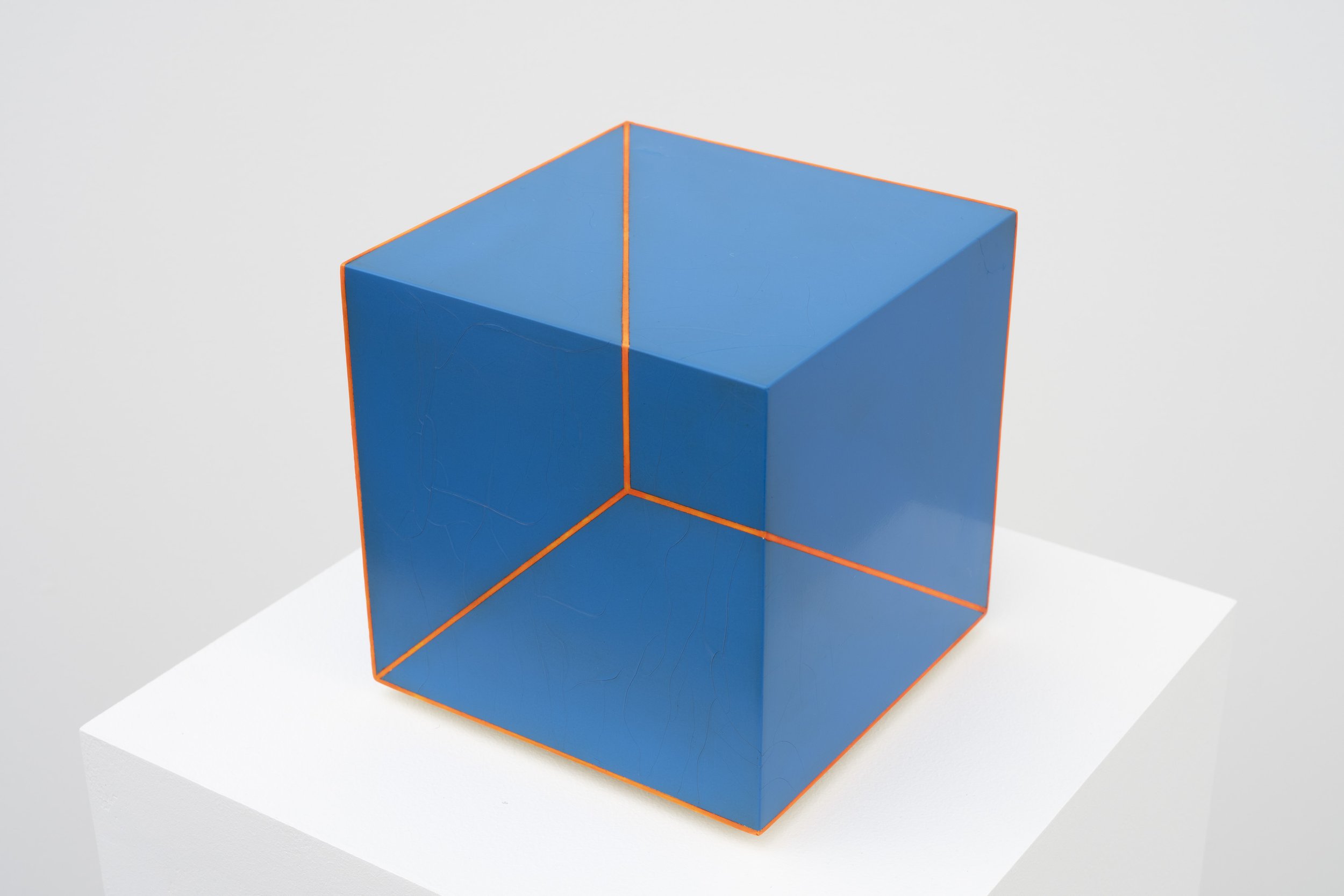

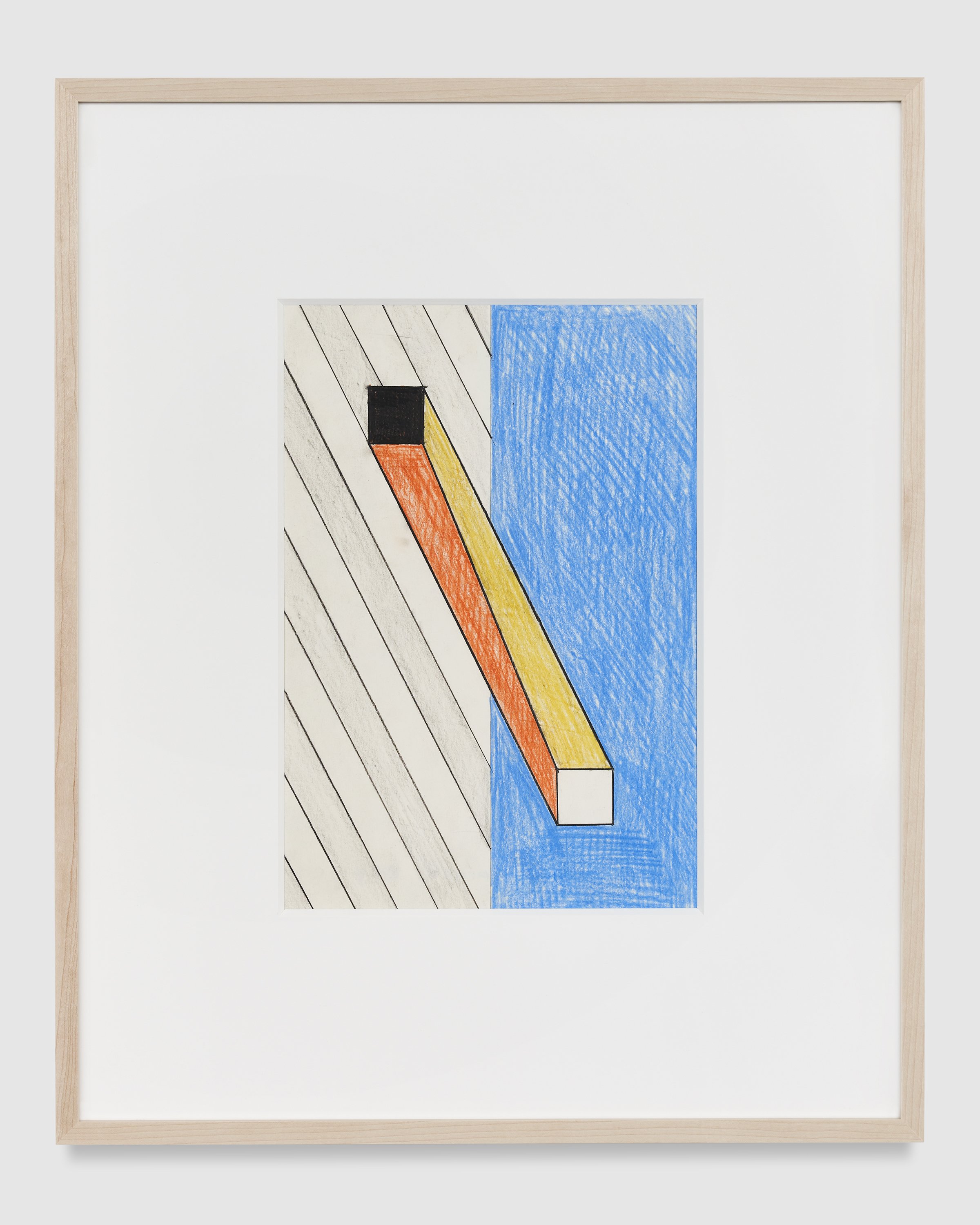
Engaging with histories of Dadaism and Surrealism through a minimalist visual language. Jiro Takamatsu’s (b. 1936, Tokyo; d. 1998, Tokyo) art centers on metaphysical ideas and concepts related to time, space, and emptiness. Over the span of his four-decade career, the artist engaged with a range of mediums, including sculpture, photography, painting, drawing, and performance art, through which he explored concepts related to perception, space, and objecthood. Takamatsu studied at the Tokyo National University of Fine Arts and Music, where he cultivated an interdisciplinary artistic practice after graduating in 1958. In the following years, he helped establish the collective known as Hi Red Center (1963– 64), which sought to dissolve boundaries between art and life through politically minded actions in public spaces. Takamatsu was also a leading figure in the Mono-Ha (School of Things) movement, centering on materiality and material conditions through non-representational art. Through his practice, Takamatsu investigated how painting could serve as a tool for critical inquiry, questioning the role of perceptual and visual phenomena in constructing notions of reality.
An influential figure of the Japanese avant-garde, presenting numerous solo exhibitions during his lifetime, Takamatsu is once again the subject of international attention, his practice lauded by scholars and curators across institutions globally.
Jiro Takamatsu Shadow No. 1452, 1997 acrylic on canvas 51-5/16" × 63-13/16" (130.3 cm × 162.1 cm) No. 92240 © The Estate of Jiro Takamatsu, Courtesy Yumiko Chiba Associates, Tokyo, Pace Gallery, New York and Stephen Friedman Gallery, London. Photo by Peter Clough.
In 2014, the National Museum of Modern Art in Tokyo opened Jiro Takamatsu: Mysteries, which traced three distinct phases of his career; in 2015, the National Museum of Art in Osaka mounted the major retrospective Jiro Takamatsu: Trajectory of Work. Takamatsu has also been the subject of solo exhibitions at the Henry Moore Institute, Leeds, United Kingdom (2017) and the Royal Society of Sculptors, London (2019). The artist’s work is held in important public collections worldwide, including Aomori Museum of Art, Japan; Dallas Museum of Art, Texas; The Museum of Modern Art, New York; The National Museum of Art, Osaka; The National Museum of Modern Art, Tokyo; Solomon R. Guggenheim Museum, New York; and Tate, London; among others.
Jiro Takamatsu Shadow, 1989/1997 Acrylic on canvas 9' 6-3/4" × 85-7/8" (291.5 cm × 218.1 cm) No. 89830 © The Estate of Jiro Takamatsu, Courtesy Yumiko Chiba Associates, Tokyo, Pace Gallery, New York and Stephen Friedman Gallery, London. Photo by Richard Gary.
Pace is a leading international art gallery representing some of the most influential artists and estates of the 20th and 21st centuries, founded by Arne Glimcher in 1960. Holding decades-long relationships with Alexander Calder, Jean Dubuffet, Agnes Martin, Louise Nevelson, and Mark Rothko, Pace has a unique history that can be traced to its early support of artists central to the Abstract Expressionist and Light and Space movements. Now in its seventh decade, the gallery continues to nurture its longstanding relationships with its legacy artists and estates while also making an investment in the careers of contemporary artists, including Torkwase Dyson, Loie Hollowell, Robert Nava, Adam Pendleton, and Marina Perez Simão. Under the current leadership of CEO Marc Glimcher and President Samanthe Rubell, Pace has established itself as a collaborative force in the art world, partnering with other galleries and nonprofit organizations around the world in recent years. The gallery advances its mission to support its artists and share their visionary work with audiences and collectors around the world through a robust global program anchored by its exhibitions of both 20th century and contemporary art and scholarly projects from its imprint Pace Publishing, which produces books introducing new voices to the art historical canon. This artist-first ethos also extends to public installations, philanthropic events, performances, and other interdisciplinary programming presented by Pace.
Today, Pace has eight locations worldwide, including two galleries in New York—its eight-story headquarters at 540 West 25th Street and an adjacent 8,000-square-foot exhibition space at 510 West 25th Street. The gallery’s history in the New York art world dates to 1963, when it opened its first space in the city on East 57th Street. A champion of Light and Space artists, Pace has also been active in California for some 60 years, opening its West Coast flagship in Los Angeles in 2022. The gallery maintains European footholds in London and Geneva as well as Berlin, where it established an office in 2023.
Pace was one of the first international galleries to have a major presence in Asia, where it has been active since 2008, the year it first opened in Beijing’s vibrant 798 Art District. It now operates galleries in Hong Kong and Seoul and opens its first gallery in Japan in Tokyo’s Azabudai Hills development in 2024.
Photography courtesy Pace Gallery. For more information about this exhibition and others, please visit the Pace Gallery’s website here. Pace Gallery can be found on Instagram and Artsy, too.
Mary Corse: Presence in Light






Mary Corse: Presence in Light 540 W 25th Street, New York, NY September 13 – October 26 Photography courtesy Pace Gallery
New York – Pace is pleased to present an exhibition of new work by Mary Corse at its 540 West 25th Street gallery in New York. Which opened on September 13th and will be on view until October 26, this presentation marks Corse’s first solo show in the city since 2019 and follows several recent institutional exhibitions by the artist at the Long Museum West Bund in Shanghai and the Amorepacific Museum of Art in Seoul, as well as her 2018 traveling retrospective at the Whitney Museum of American Art in New York and the Los Angeles County Museum of Art. Corse’s upcoming exhibition at Pace will coincide with her participation in Particles and Waves: Southern California Abstraction and Science, 1945–1990—a group exhibition organized as part of the Getty’s PST ART: Art & Science Collide initiative—at the Palm Springs Art Museum in California.
Untitled (Yellow Diamond with White Inner Band)2024 PAINTING glass microspheres in acrylic on canvas 92" × 92" × 4" (233.7 cm × 233.7 cm × 10.2 cm) No. 92698
Over the course of her six-decade career, Corse has explored phenomena of light, space, and perception in sublime and boundary-crossing abstractions across mediums. A key member of the Los Angeles artist community from the 1960s to the present, she is often associated with the Light and Space movement but has always been committed to the possibilities of painting, which remains her primary concern. As part of her empirical and highly tactile approach to art making, Corse has continually investigated the ways in which light can be both subject and material. In the late 1960s, while searching for a way to embed light inside her paintings, Corse experienced an epiphany. Driving along the Pacific Coast Highway in Malibu at sunset, she noticed the road markings were progressively illuminated by headlights as she drove along. Investigating the industrial applications that make this effect possible, she discovered glass microspheres—a material used to enhance visibility of road signage. In 1968, Corse began applying these refractive microspheres onto the surfaces of her White Light paintings, endowing these works with a sense of illumination projected from within the picture plane itself.
The body of work that Corse will debut in her presentation at Pace in New York this fall centers on a new series of diamond-shaped paintings, which continue her longstanding practice of incorporating glass microspheres into the painted surface. Corse has experimented with the physical structure of her canvases since her time as a student at the Chouinard Art Institute in Los Angeles between 1964 and 1968. Although she created her first diamond-shaped paintings while still in her 20s, this body of work marks the first diamond-shaped canvases she has made since the 1960s. Corse’s return to the format of the diamond underscores one of the hallmarks of her practice: an interest in recursion and return to early ideas. With her new Diamond paintings, the artist delves ever deeper into the fundamental concepts that animated her practice at its outset. She expands the scope of her inquiry into the metaphysical dimensions of her oeuvre through these new iterations of ideas that have long been essential to the work.
Untitled (Blue Diamond with Black Inner Band), 2024 PAINTING glass microspheres in acrylic on canvas 92" × 92" × 4" (233.7 cm × 233.7 cm × 10.2 cm) No. 92671 © Mary Corse, courtesy Pace Gallery
The works in the presentation at Pace, all of which have never before been exhibited, will include Corse’s Halo Room, a new architectural installation that she has been developing over the last several years. This work, which will be installed in the center of the gallery space but can also be placed outdoors, offers a participatory, intimate experience of scale, space, and light. When a viewer enters the room, a single interior light projects their shadow onto a White Light painting. The resulting effect produces a glowing halo around the viewer’s shadow, registering their presence but also incorporating it into the painting itself. The installation hinges on the energetic relationship between individual and object, producing a moment of intersubjective collision that facilitates a spiritual manifestation of bodies within space. Up to two participants will be allowed inside the installation at a time, and each viewer will only be able to see their own halo—a phenomenon that speaks to the personal nature of experiencing Corse’s art.
The Halo Room 2023-2024 SCULPTURE glass microspheres in acrylic on powder coated aluminum, glass microspheres in acrylic on canvas, light 9' × 10' × 11' (274.3 cm × 304.8 cm × 335.3 cm) No.92448 © Mary Corse, courtesy Pace Gallery
Corse’s Halo Room continues and deepens a long tradition of grappling with questions of presence in post-1960s art. In his 1967 essay “Art and Objecthood,” the critic Michael Fried famously condemned Minimal aesthetics for their perceived “theatricality.” Fried contrasted this with an all-over painting, in which the entire composition could be perceived by the viewer all at once, in a single instant. Fried called this quality “presentness,” and in the essay, he famously declared: “Presentness is grace.” Although not a minimalist, Corse is associated with many of the post- 1960s practices to which Fried was referring, having shown with Dick Bellamy’s Green Gallery in New York in the late 1960s. Her new work is equally concerned with questions of presence and presentness. The Halo Room serves as a counterpoint to Fried’s argument, in which the presence and presentness of the viewer within the work itself—both literally and pictorially—becomes a pure expression of grace, a reflection of the ethos that has animated Corse’s practice for decades: the work of art is, as she puts it, “not on the wall, it’s in your perception.”
Untitled (White Diamond with Black Inner Band)2024 PAINTING glass microspheres in acrylic on canvas 110-3/8" × 110-3/8" × 3-3/4" (280.4 cm × 280.4 cm × 9.5 cm) No. 92442 © Mary Corse, courtesy Pace Gallery
Mary Corse (b. 1945, Berkeley, California) investigates materiality, abstraction, and perception through the subtly gestural and precisely geometric paintings that she has made over her sixty-year career. Earning a BFA in 1968 from Chouinard Art Institute, Los Angeles, Corse developed her initial work during the emergence of the Light and Space movement in Southern California. Throughout the 1960s, she experimented with unconventional media and supports, producing shaped canvases, works with plexiglass, and illuminated boxes. In 1968, Corse discovered glass microspheres, an industrial material used in street signs and dividing lines on highways. Combining these tiny refractive beads with acrylic paint, she began to create paintings that appear to radiate light from within and produce shifts in appearance contingent on their surroundings and the viewer’s position. She first developed her White Light paintings, and by the 70s she transitioned to making her Black Light series with black acrylic and microspheres. The Black Earth works followed: large ceramic slabs that she fired in a custom-built kiln and glazed black. After thirty years of working monochromatically, she reintroduced primary colors into her paintings based on her understanding of color as constitutive of white light. Corse’s art emphasizes the abstract nature of human perception, expanding beyond the visual to include subtleties of feeling and awareness.
Untitled (Black Diamond with Black Inner Band), 2023 PAINTING glass microspheres in acrylic on canvas 70-3/4" × 70-3/4" × 4-1/2" (179.7 cm × 179.7 cm × 11.4 cm) No. 90272 © Mary Corse, courtesy Pace Gallery
In 2021, Corse was the subject of a major solo exhibition at the Long Museum, Shanghai which traveled to the Amorepacific Museum of Art in Seoul in 2022. Mary Corse: A Survey in Light, the artist’s first solo museum survey, was presented at the Whitney Museum of American Art, New York and the Los Angeles County Museum of Art in 2018 and 2019, respectively. Comprehensive catalogs were published with both surveys. A focused presentation of Corse’s work was on view at Dia: Beacon in New York for four years highlighting historical works from the collection.
Untitled (White Diamond with White Inner Band)2024 PAINTING glass microspheres in acrylic on canvas 110-1/2" × 110-1/2" × 3-3/4" (280.7 cm × 280.7 cm × 9.5 cm) No. 92441 © Mary Corse, courtesy Pace Gallery
Corse was also included in the major presentation Pacific Standard Time: Crosscurrents in L.A., Painting and Sculpture, 1950-1970 at The J. Paul Getty Museum in Los Angeles in 2011. In 2023, the Los Angeles County Museum of Art presented Light, Space, Surface, in which Corse’s work was exhibited. She was also included in Long Story Short at the Museum of Contemporary Art, Los Angeles (2023–2024). In 2024, Corse is participating in Particles and Waves: Southern California Abstraction and Science, 1945–1990—a group exhibition organized as part of the Getty’s PST ART: Art & Science Collide initiative—at the Palm Springs Art Museum in California. The artist’s work can be found in the permanent collections of Amorepacfic Museum of Art, Seoul; Dia Art Foundation, New York; The J. Paul Getty Museum, Los Angeles; Long Museum, Shanghai; Los Angeles County Museum of Art; The Menil Collection, Houston, Texas; Museum of Contemporary Art, Los Angeles; National Gallery of Art, Washington D.C.; Solomon R. Guggenheim Museum, New York; and Whitney Museum of American Art, New York, among other institutions.
Pace is a leading international art gallery representing some of the most influential contemporary artists and estates from the past century, holding decades-long relationships with Alexander Calder, Jean Dubuffet, Barbara Hepworth, Agnes Martin, Louise Nevelson, and Mark Rothko. Pace enjoys a unique U.S. heritage spanning East and West coasts through its early support of artists central to the Abstract Expressionist and Light and Space movements.
Since its founding by Arne Glimcher in 1960, Pace has developed a distinguished legacy as an artist-first gallery that mounts seminal historical and contemporary exhibitions. Under the current leadership of CEO Marc Glimcher, Pace continues to support its artists and share their visionary work with audiences worldwide by remaining at the forefront of innovation. Now in its seventh decade, the gallery advances its mission through a robust global program— comprising exhibitions, artist projects, public installations, institutional collaborations, performances, and interdisciplinary projects. Pace has a legacy in art bookmaking and has published over five hundred titles in close collaboration with artists, with a focus on original scholarship and on introducing new voices to the art historical canon.
Today, Pace has seven locations worldwide, including European footholds in London and Geneva as well as Berlin, where the gallery established an office in 2023. Pace maintains two galleries in New York—its headquarters at 540 West 25th Street, which welcomed almost 120,000 visitors and programmed 20 shows in its first six months, and an adjacent 8,000 sq. ft. exhibition space at 510 West 25th Street. Pace’s long and pioneering history in California includes a gallery in Palo Alto, which was open from 2016 to 2022. Pace’s engagement with Silicon Valley’s technology industry has had a lasting impact on the gallery at a global level, accelerating its initiatives connecting art and technology as well as its work with experiential artists. Pace consolidated its West Coast activity through its flagship in Los Angeles, which opened in 2022. Pace was one of the first international galleries to establish outposts in Asia, where it operates permanent gallery spaces in Hong Kong and Seoul, along with an office and viewing room in Beijing. In spring 2024, Pace will open its first gallery space in Japan in Tokyo’s new Azabudai Hills development.
Photography courtesy Pace Gallery. For more information about this exhibition and others, please visit the Pace Gallery’s website here. Pace Gallery can be found on Instagram and Artsy, too.
Braxon Garneau : Metamorphosis Ball
Installation View Caption Installation view, Metamorphosis Ball, 2024, Efraín López, NY Courtesy the Artist and Efraín López Photo by Inna Svyatsky
New York, NY- Efraín López is pleased to announce Metamorphosis Ball, an exhibition of new works by visual artist, Braxton Garneau. The exhibition will be on view from September 3 through October 12, 2024. For his first solo exhibition at the gallery, Garneau will present a new series of paintings, continuing his exploration of materiality and costuming. For this body of work, Garneau has employed the use of arched canvases to create portals that collapse cultural and historical elements into complex portraits of armor and adornment. Garneau ’s interest in materiality is specifically drawn out in the lace details of these works, made from hand processed shells piped into imagined lace patterns. Integrating three-dimensional costuming elements with gestural asphalt forms, Garneau is interested in both self-adornment and thinking about masquerade as a disruptive tool for social change. An opening reception took place on Tuesday, September 3, 2024, from 6 to 8pm. Metamorphosis Ball is accompanied by an essay authored by Hilary Davidson, a dress, textiles and fashion historian and curator, and chair of the MA Fashion and Textile Studies at the School of Graduate Studies at FIT.






Installation View Caption Installation view, Metamorphosis Ball, 2024, Efraín López, NY Courtesy the Artist and Efraín López Photo by Inna Svyatsky
Braxton Garneau is a visual artist based in amiskwaciwâskahikan (Edmonton, Canada). He holds a BFA from the University of Alberta and has had solo exhibitions at the Art Gallery of Alberta, Edmonton (2024), GAVLAK, Los Angeles (2023) and Stride Gallery, Calgary (2021). His work was featured in the retrospective exhibition Black Every Day at the Art Gallery of Alberta (2021), It's About Time: Dancing Black in Canada 1900 - 1970 and Now at Mitchell Art Gallery, Edmonton (2020), curated by Seika Boye, and New Direction, curated by AJ Girard and Artx at Château Cîroc, Miami, Florida (2021). In 2024, his work Pitch Lake (Pietà) was acquired by the Museum of Contemporary Art San Diego through the Northern Trust Purchase Prize at EXPO Chicago, and he was awarded the Lieutenant Governor of Alberta Emerging Artist Award. He has been accepted into the International Studio & Curatorial Program (ISCP), Brooklyn, NY for 2025.
Braxton Garneau Masquerade V, 2024 Asphalt and acrylic on canvas with jute and crushed shell 15 x 10 inches (BG0052) Courtesy the Artist and Efraín López Photo by Inna Svyatsky
With a focus on painting, sculpture, printmaking and installation, Garneau’s practice is rooted in materiality, costuming and transformation. Working in-between cultures, he combines visual influences from classical and contemporary forms with material investigations to consider cultural, social and historical implications. Garneau is interested in what he refers to as “ material honesty, ” or the idea that the use of living matter can imbue work with their essence and power. Exploring and exploiting the physical qualities of materials, Garneau works with harvested and hand-processed mediums including asphalt, raffia, cotton, linen, sugarcane pulp, bones and shells. Garneau ’ s work investigates transformation through both natural cycles and the inherent human tendency for adornment, costuming and masquerade. Connecting materials, customs and clothing, he explores the ability of the natural world, and of the people in it, to adapt and transmute to whatever circumstances they may find themselves in.
About Efraín López
Efraín López is a Puerto Rican-American art dealer and exhibition maker based in New York City. Between 2012 and 2018, López founded and directed his eponymous gallery in Chicago, where he presented an ambitious and rigorous exhibition program, often giving artists their first solo presentation in the United States. His long-standing commitment to the career development of emerging artists has led to placements in major museum collections worldwide. In June of 2023 López opened Efraín López, a contemporary art gallery in New York' s T ribeca neighborhood. The program is conceptual, multidisciplinary, and globally minded, engaging both emerging and established artists.
For information about Braxton’s artwork please visit his site. Braxton’s interview with the magazine can be found here. For information about this exhibition and others, please visit Efraín López’s website. You can also follow the gallery on Instagram.
Torkwase Dyson: Here
Torkwase Dyson: Here 1201 South La Brea Avenue, Los Angeles, CA 90019 September 14 – October 26, 2024 Photography courtesy Pace Gallery
Los Angeles – Pace is pleased to present Here, an exhibition of new paintings by Torkwase Dyson at its Los Angeles gallery, as part of the Getty’s PST ART: Art & Science Collide Participating Gallery Program. The exhibition opened on September 14 and will be on view until October 26; the show will further explore ideas about the environment, architecture, infrastructure, and black space that are central to the artist’s practice.
In her work across painting, sculpture, performance, film, and drawing, Dyson uncovers continuities between ecology, infrastructure, and architecture through a language of abstract, poetic forms. Her two- and three- dimensional abstractions grapple with the ways in which space is perceived, imagined, and negotiated—particularly by black and brown bodies—to examine histories of human geography and black spatial liberation strategies.
Torkwase Dyson, Ossuaries 3 (Bird and Lava), 2024 PAINTING acrylic and graphite on canvas 14" × 11" × 1-1/4" (35.6 cm × 27.9 cm × 3.2 cm), 3 panels, each 14" × 48" × 1-1/4" (35.6 cm × 121.9 cm × 3.2 cm), overall, © Torkwase Dyson, courtesy Pace Gallery
The new works that Dyson is debuting in her presentation at Pace in LA represent the fundamental parts of a large- scale assemblage in memory of black underwater towns. Practicing mindful improvisation in her making process, the artist has imbued these paintings with forms that speak to the beauty and hauntology of black abstraction in motion, or what she calls “black compositional thought.”
This upcoming exhibition in LA is a continuation of Dyson’s ongoing Bird and Lava series, which she began making in 2020 and first exhibited at Pace’s East Hampton gallery that year. With the paintings and drawings in this body of work, the artist poses a multifaceted expression of a question: “If blackness is already an architectonic developed out of liquidity (ocean), can the work embody this phenomenon and offer sensation (sensoria) at the register of liberation?”









Torkwase Dyson: Here 1201 South La Brea Avenue, Los Angeles, CA 90019 September 14 – October 26, 2024 Photography courtesy Pace Gallery
Having created a compositional system of curvilinear and rectilinear shapes to apply across all her Bird and Lava works, Dyson articulates histories of enslavement, displacement, and resistance through the phenomenological presence of geometric abstraction, dimensionality, and gesture. For her latest paintings in this series—which are the focus of her show at Pace in LA—Dyson has experimented with new material elements. In the artist’s view, the varied textures and geometries that appear throughout this series are thresholds, or portals, through which we might forge new spatial strategies of liberation. Holistically, Dyson’s installation for Here—attuned to enactments of precarity, liminality, and augmentation—invites contemplation and meditation.
Torkwase Dyson, Ocular Brutality (Bird and Lava), 2023-2024 PAINTING graphite and string on wood 21" × 16" × 4-3/16" (53.3 cm × 40.6 cm × 10.7 cm) © Torkwase Dyson, courtesy Pace Gallery
Ahead of her exhibition at Pace in LA, the artist is presenting a large-scale sculpture in the 2024 Whitney Biennial in New York through August 11. The Whitney’s inaugural Hyundai Terrace Commission for site-specific projects, Liquid Shadows, Solid Dreams (A Monastic Playground) (2024) is installed outdoors on the museum’s fifth floor. The architecturally scaled geometries in the sculpture—which responds to the light conditions on the terrace over the course of the day and night—invite tactile engagement and activation from viewers. Exhibited within view of the Hudson River, this work also speaks to the interconnected ecological and social histories of New York City.
Torkwase Dyson (b. 1973, Chicago, Illinois) describes herself as a painter working across multiple mediums to explore the continuity between ecology, infrastructure, and architecture. Examining the history and future of black spatial liberation strategies, Dyson’s abstract works grapple with the ways in which space is perceived and negotiated, particularly by black and brown bodies. The artist’s work was presented at the Liverpool Biennial, United Kingdom (2023); 12th Seoul Mediacity Biennale, Seoul Museum of Art (2023); and the 13th Shanghai Biennale (2021). Dyson's Liquid Shadows, Solid Dreams (A Monastic Playground) is currently on view as part of Whitney Biennial, New York (2024).
Dyson has participated in group exhibitions at the California African American Museum, Los Angeles (2019); Wexner Center for the Arts, The Ohio State University, Columbus (2021); The Mississippi Museum of Art, Mississippi (2022), which traveled to the Baltimore Museum of Art, Maryland (2022–2023); Parrish Art Museum, Water Mill, New York (2022); St. Louis Place Park and Mildred Lane Kemper Art Museum, Missouri (2023); Desert X, Coachella Valley, California (2023); and The National Academy of Design, New York (2024). Dyson has held solo exhibitions and installations at Colby College Museum of Art, Waterville, Maine (2018); Graham Foundation, Chicago (2018); Schuylkill Center's Environmental Art, Philadelphia (2018); Suzanne Lemberg Usdan Gallery, Bennington College, Vermont (2018); Serpentine Pavilion, Serpentine Galleries, London (2021); Hall Art Foundation, Schloss Derneburg, Germany (2021); and Mildred Lane Kemper Art Museum, St. Louis, Missouri (2023).
Pace is a leading international art gallery representing some of the most influential artists and estates of the 20th and 21st centuries, founded by Arne Glimcher in 1960. Holding decades-long relationships with Alexander Calder, Jean Dubuffet, Agnes Martin, Louise Nevelson, and Mark Rothko, Pace has a unique history that can be traced to its early support of artists central to the Abstract Expressionist and Light and Space movements. Now in its seventh decade, the gallery continues to nurture its longstanding relationships with its legacy artists and estates while also making an investment in the careers of contemporary artists, including Torkwase Dyson, Loie Hollowell, Robert Nava, Adam Pendleton, and Marina Perez Simão.
Under the current leadership of CEO Marc Glimcher and President Samanthe Rubell, Pace has established itself as a collaborative force in the art world, partnering with other galleries and nonprofit organizations around the world in recent years. The gallery advances its mission to support its artists and share their visionary work with audiences and collectors around the world through a robust global program anchored by its exhibitions of both 20th century and contemporary art and scholarly projects from its imprint Pace Publishing, which produces books introducing new voices to the art historical canon. This artist-first ethos also extends to public installations, philanthropic events, performances, and other interdisciplinary programming presented by Pace.
Today, Pace has eight locations worldwide, including two galleries in New York—its eight-story headquarters at 540 West 25th Street and an adjacent 8,000-square-foot exhibition space at 510 West 25th Street. The gallery’s history in the New York art world dates to 1963, when it opened its first space in the city on East 57th Street. A champion of Light and Space artists, Pace has also been active in California for some 60 years, opening its West Coast flagship in Los Angeles in 2022. The gallery maintains European footholds in London and Geneva as well as Berlin, where it established an office in 2023. Pace was one of the first international galleries to have a major presence in Asia, where it has been active since 2008, the year it first opened in Beijing’s vibrant 798 Art District. It now operates galleries in Hong Kong and Seoul and opens its first gallery in Japan in Tokyo’s Azabudai Hills development in 2024.
Torkwase Dyson: Here is exhibiting at Pace’s Los Angeles location at 1201 South La Brea Avenue, Los Angeles, CA 90019. The exhibition opened on September 14 and will end on October 26, 2024. Photography courtesy Pace Gallery. For more information about this exhibition and others, please visit the Pace Gallery’s website here. Pace Gallery can be found on Instagram and Artsy, too.
ANDREA FRASER : Untitled (Video, Audio, Objects)
Installation Views, ANDREA FRASER Untitled (Video, Audio, Objects), Marian Goodman Gallery, Paris 2024 Courtesy of Andrea Fraser and Marian Goodman Gallery Photo credit @ Rebecca Fanuele
Marian Goodman Gallery Paris is pleased to present Untitled (Video, Audio, Objects), the first solo exhibition of Andrea Fraser in France. Widely regarded as one of the most influential and provocative artists of her generation, Fraser emerged in the 1980s as a major figure in the field of institutional critique. She has used performance, video, installation, text, and a range of other mediums to investigate the social, economic, political, and psychological structures of the art world. Informed by sociology, psychoanalysis, conceptualism, and feminist investigations of subjectivity and desire, Fraser’s works exist at the extremes of systemic analysis and affective embodiment. The result was described by Pierre Bourdieu as “a sort of machine infernale whose operation causes the hidden truth of social reality to reveal itself.”
ANDREA FRASER Untitled (Object V), 2024 Microcrystalline wax, aluminum and steel armatures Sculpture: 5 7/8 x 35 3/8 x 15 3/4 in. (15 x 90 x 40 cm) Pedestal: 33 1/2 x 47 1/4 x 23 5/8 in. (85 x 120 x 60 cm) Plexiglas case: 19 3/4 x 47 1/4 x 23 5/8 in. (50 x 120 x 60 cm) Photo credit: Rebecca Fanuele Courtesy of the artist and Marian Goodman Gallery
In the ground floor, lower gallery, and vaulted room, Fraser revisits her most notorious projects, Untitled, 2003, and proposes a sequel in the form of a new sculptural installation which, twenty years on, extends her exploration of the intersections of financial and affective economies in the contemporary art world. In the Showroom, a selection of books, texts, and graphic works represent Fraser’s on-going analysis of the political and economic structures of the art field.
ANDREA FRASER Untitled (Object IV), 2024 Microcrystalline wax, aluminum and steel armatures Sculpture: 5 7/8 x 35 3/8 x 15 3/4 in. (15 x 90 x 40 cm) Pedestal: 33 1/2 x 47 1/4 x 23 5/8 in. (85 x 120 x 60 cm) Plexiglas case: 19 3/4 x 47 1/4 x 23 5/8 in. (50 x 120 x 60 cm) Photo credit: Rebecca Fanuele Courtesy of the artist and Marian Goodman Gallery
Presented in the ground floor gallery, the installation Untitled, 2003 documents an encounter between Fraser and an art collector, who pre-purchased the first of a limited-edition video, in which he is having sex with the artist. For Fraser, Untitled “is about the relationship between artists and collectors, about what it means to be an artist and sell your work—sell what may be, what should be, a very intimate part of yourself, your desire, your fantasies—and to allow others to use you as a screen for their fantasies.” Untitled has been interpreted widely as enacting the centuries-old analogy of selling art as prostitution. However, important to Fraser is that the collector paid for the video, not for the sex. With this, the work highlights the role of art commodities in mediating relations of exchange. At the same time, Untitled performs the intimate entanglement of personal and market valuation that often drives participation in the art world’s steeply stratified economy. The installation presents the silent, unedited, sixty-minute fixed-camera video on a monitor in an otherwise empty room, incorporating the commercial context of the gallery while creating space for reflection on the participation enacted in the process of viewing.











Installation Views, ANDREA FRASER Untitled (Video, Audio, Objects), Marian Goodman Gallery, Paris 2024 Courtesy of Andrea Fraser and Marian Goodman Gallery Photo credit @ Rebecca Fanuele
In the downstairs vaulted room gallery, Fraser presents Untitled, 2003/2004, an audio installation created with the sound captured by the camera during the recording of Untitled. While the Untitled video is silent but unedited, Untitled, 2003/2004 is densely edited, compressing and abstracting the sixty-minute encounter into an emotionally saturated 10-minute ambient soundscape. Including only sounds made by the artist, with sounds made by the participating collector edited out, the audio work renders Untitled an encounter with an absent object, a void to be filled with projections, in fantasy, or by the listener, who is situated implicitly in the position of the collector as the object of the artist’s attention.
Following the reception of Untitled in the 2000s, Fraser stepped back from working actively with commercial art galleries and, for a period, limited sales of her work to institutions only. In the decade that followed, she developed text-based and graphic works focusing on the interrelation of artistic, economic, and political fields. On display in the showroom are Index III, 2024, and L’1% C’est Moi, 2011, which examine the link between the art market and wealth concentration, and Index II, 2014, which extends this analysis to parallels between museum and prison building booms in the United States. Her monumental study 2016 in Museums, Money, and Politics, 2018 examines the interconnection of cultural and political patronage.
ANDREA FRASER
Untitled, 2003 (Video Still)
Project and video installation
SD video transferred to digital format
Duration: 60 minutes, looped
Edition of 5 + 2 AP
© Andrea Fraser
Courtesy of the artist and Marian Goodman Gallery
Fraser’s new work, Untitled (Objects), 2024, presented in the lower gallery, returns to a reflection on the intersection between financial and emotional economies in the art world. In 2022, Fraser returned to working actively with commercial galleries and joined Marian Goodman Gallery. Reflecting on the parallel between this exhibition and when she created Untitled in 2003, Fraser considered the question of what motivated her to return to the art market now, after more than ten years of declining to sell her work to private collectors. Her response: to make things that are wanted, valued, and cared for in ways that only art objects are wanted, valued, and cared for. For Fraser, whose mother painted intensively throughout her infancy, there is no escaping the equation of artworks and children. They exist, psychologically, in a continuum of attention and care. The five life-size sculptures of toddlers, which Fraser modeled out of wax, may evoke familiar analogies, as literally as Untitled, for what it means for artists to sell their art—and what it means for collectors to acquire it. They may represent the products of the sexual encounter documented in Untitled, with one sculpture for each of the five editions of the video. Or they may be figures less of creative offspring than of the artist, stripped of conceptual and critical defenses against an archaic want to be valued and cared for in perpetuity.
Andrea Fraser, 2016 © Andrea Fraser Courtesy of the artist and Marian Goodman Gallery
Andrea Fraser, born 1965 in Billings, Montana, lives and works in Los Angeles, California. She is a Professor in the Department of Art at the University of California Los Angeles (UCLA). “I just don’t like eggs!” Andrea Fraser on collectors, collecting, collections,” a major exhibition at the Fondazione Antonio dalle Nogare, Bolzano, Italy is on view until 22 February 2025. Fraser has presented solo exhibitions at the Hammer Museum, Los Angeles, CA (2022); the Philadelphia Museum of Modern Art, PA; Kunstlerhaus Stuttgart, Germany (both 2021); the Art Institute of Chicago, IL; the Whitney Museum of American Art, New York (both 2016); Museum Moderner Kunst Stiftung Ludwig, Vienna, Austria (2012); and at Harvard University, MA (2010), amongst many others. Retrospectives of her work have been presented at the Museum of Contemporary Art Barcelona, Spain and MUAC UNAM Mexico City (both 2016), the Museum der Moderne Salzburg, Austria (2015), Museum Ludwig, Cologne, Germany (2013), and at the Kunstverein, Hamburg, Germany (2003).
She participated in the 45th Venice Biennale in 1993, the 1993 and 2012 Whitney Biennial exhibitions, the 1998 and 2021 editions of the Bienal de São Paulo, Prospect 3 New Orleans in 2014, and the 12th Shanghai Biennale in 2018. Fraser has received numerous awards, including the Foundation for Contemporary Arts Fellowship (2017); the Oskar Kokoschka Prize, Austria (2015); the Wolfgang Hahn Prize, Cologne, Germany (2013); the Anonymous was a Woman Fellowship (2012); the Art Matters Inc. Fellowship (1996-1997, 1990- 1991 and 1987-1988); National Endowment for the Arts Visual Arts Fellowship (1991-1992); and Franklin Furnace Fund for Performance Art Award (1990-1991).
Marian Goodman Gallery champions the work of artists who stand among the most influential of our time and represents over five generations of diverse thought and practice. The Gallery’s exhibition program, characterized by its caliber and rigor, provides international platforms for its artists to showcase their work, foster vital dialogues with new audiences, and advance their practices within nonprofit and institutional realms. Established in New York City in 1977, Marian Goodman Gallery gained prominence early in its trajectory for introducing the work of seminal European artists to American audiences. Today, through its exhibition spaces in New York, Los Angeles, and Paris, the Gallery maintains its global focus, representing over 50 artists working in the U.S. and internationally. The Gallery is led by a team of partners, with Philipp Kaiser as President and Partner, Emily-Jane Kirwan and Rose Lord as Managing Partners, and Leslie Nolen and Junette Teng as Partners. Marian Goodman is Founder and CEO.
The exhibition opened on the 6th of September and will run until the 5th of October 2024. A conversation between Fraser and Chris Dercon, Managing Director of Fondation Cartier, Paris, was held at the gallery on Saturday, the 7th of September, at 5 pm. For more information about the exhibit, please visit the Marian Goodman Gallery’s site. The gallery can be found on Instagram and Artsy, too.
Nick Brandt : The Day May Break | Sink Rise: Chapter Three & The Echo of Our Voices: Chapter Four
Akessa Looking Down II, Fiji, 2023_© Nick Brandt, courtesy of Fahey Klein Gallery, Los Angeles.jpg
The Fahey/Klein Gallery is pleased to present SINK / RISE: The Day May Break, Chapter Three and THE ECHO OF OUR VOICES: The Day May Break, Chapter Four, an exhibition of new works, made as part of an ongoing global series of images portraying people and animals that have been impacted by environmental degradation and destruction.
SINK / RISE: The Day May Break, Chapter Three highlights South Pacific Islanders in Fiji grappling with rising ocean levels. THE ECHO OF OUR VOICES: The Day May Break, Chapter Four focuses on Syrian refugee families battling water scarcity in the deserts of southern Jordan. This dual exhibition underscores the diverse ways climate change affects communities around the world, revealing the universal threat to our lives and homes. Brandt’s cohesive bodies of work offer a unique approach to climate-conscious photography and celebrates the resilience of the human spirit and the stabilizing effects of community in the face of adversity. Throughout the series, local subjects represent their individual communities and highlight the strength and solidarity that emerge in challenging times.
Shaila and Families, Jordan, 2024_© Nick Brandt, courtesy of FaheyKlein Gallery, Los Angeles.jpg
Captured in camera underwater off the coast of Fiji, the photographs in SINK / RISE: The Day May Break, Chapter Three depict local people, representatives of the many people whose homes, land and livelihoods will be lost in the coming decades as the water rises. In serene, everyday poses—sitting on sofas or standing on chairs—amidst an otherworldly aquatic environment, the photographs convey a striking contrast between the familiar and the surreal, while foreshadowing a possible reckoning as sea levels rise.
The Cave, Jordan, 2024_© Nick Brandt, courtesy of Fahey Klein Gallery, Los Angeles.jpg
The subjects in THE ECHO OF OUR VOICES: The Day May Break, Chapter Four, almost all Syrian refugee families, are posed together atop stacks of boxes against the vast painterly deserts in southern Jordan.
These individuals are forced to relocate multiple times a year in search of destinations with adequate rainfall for crops in one of the most water scarce regions in the world. The portraits from the series monumentalize a loss of place and show connection and strength in the face of adversity, that when so much else is lost, in theory you still have each other. THE ECHO OF OUR VOICES: The Day May Break Chapter Four was partially funded by Gallerie d’Italia Museum, Turin, Italy.
Ben and his father Viti, Fiji, 2023_© Nick Brandt, courtesy of Fahey Klein Gallery, Los Angeles.jpg
Born in England, Nick Brandt studied film and painting at St. Martin’s School of Art in London. He turned to photography in 2001 with his trilogy On This Earth, A Shadow Falls, Across the Ravaged Land – to be followed up by Inherit the Dust and This Empty World. He began The Day May Break series in 2020. Nick Brandt co-founded Big Life Foundation with one of the most respected conservationists in East Africa, Richard Bonham.
For more information about the exhibit, please visit the gallery’s site.
























